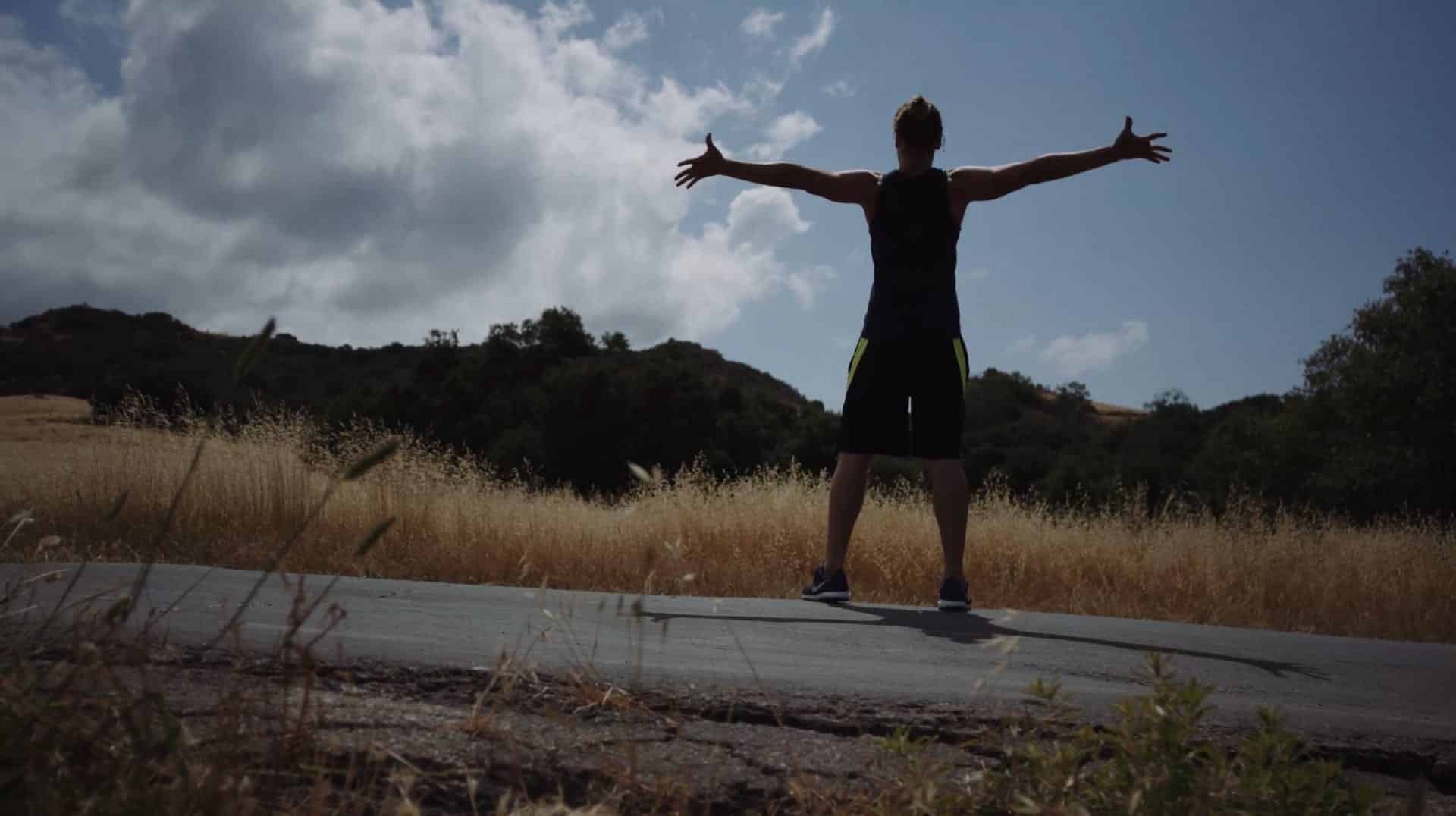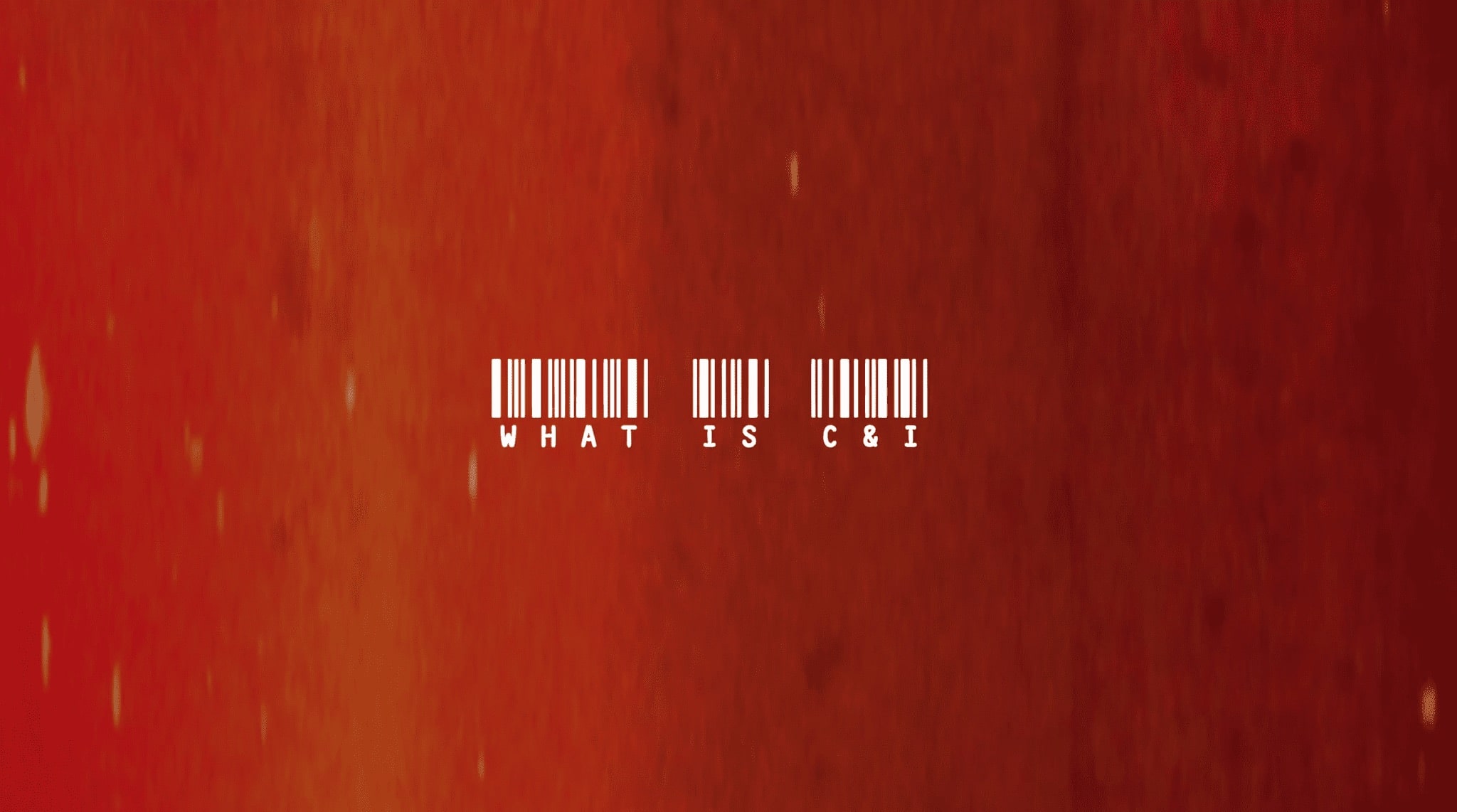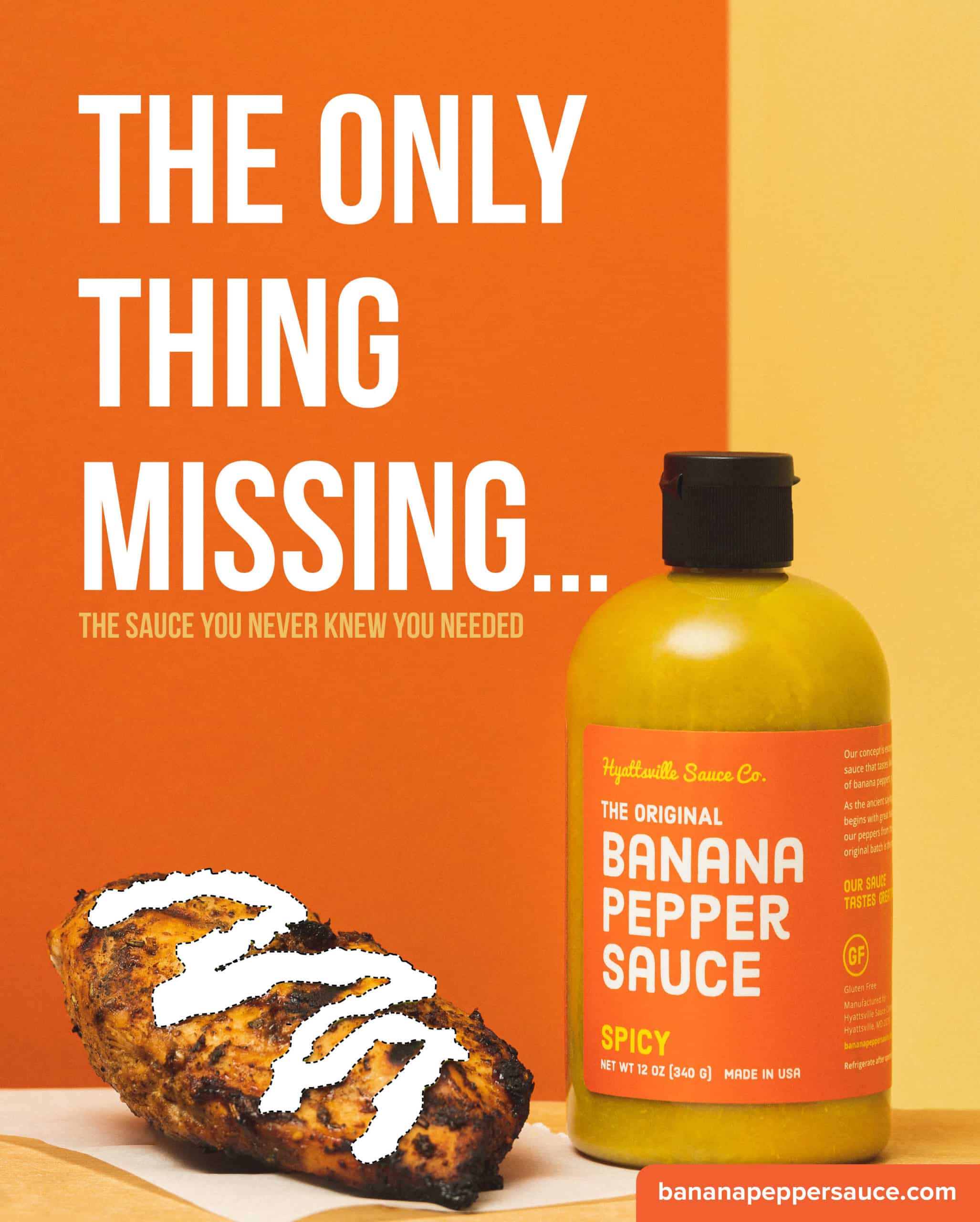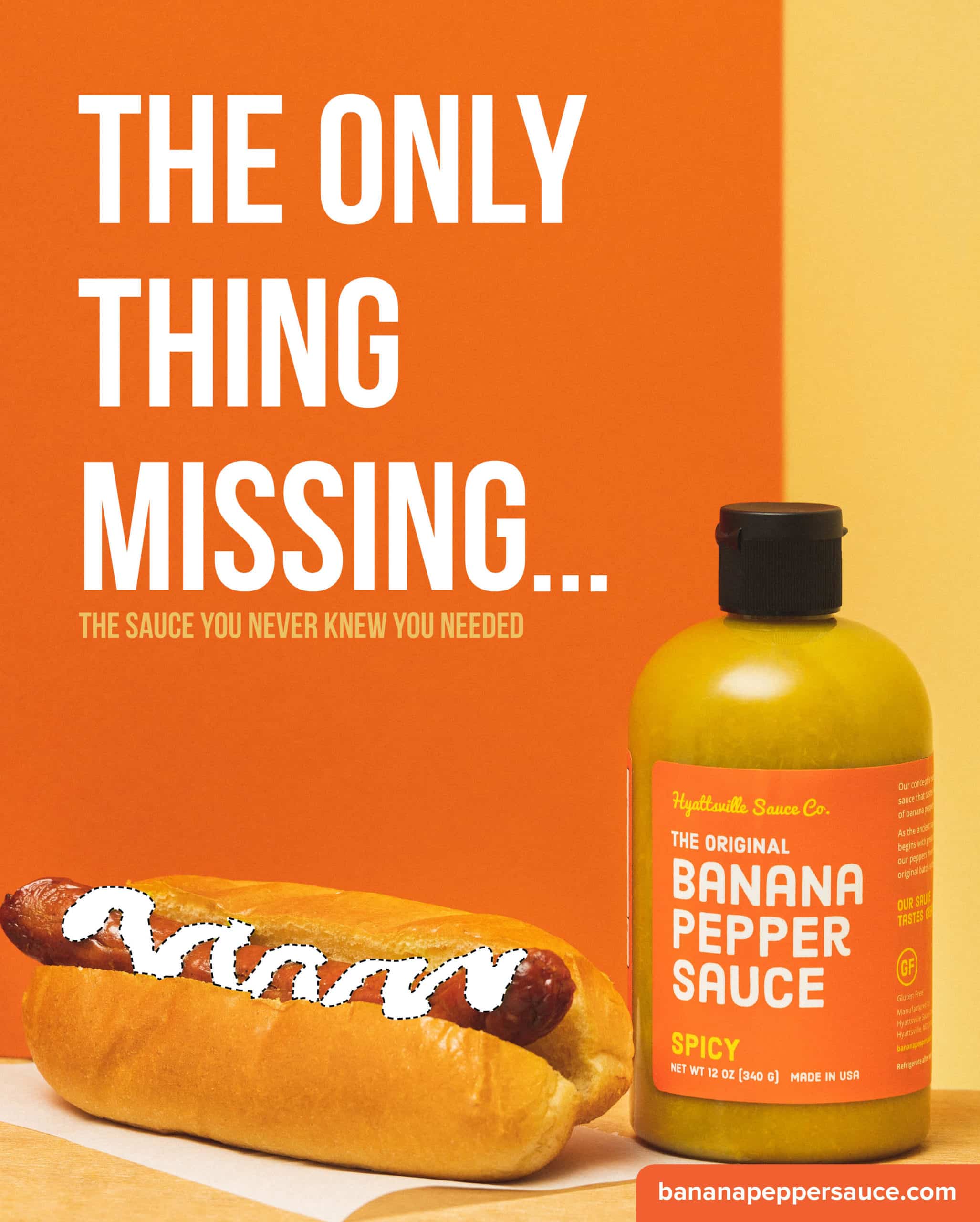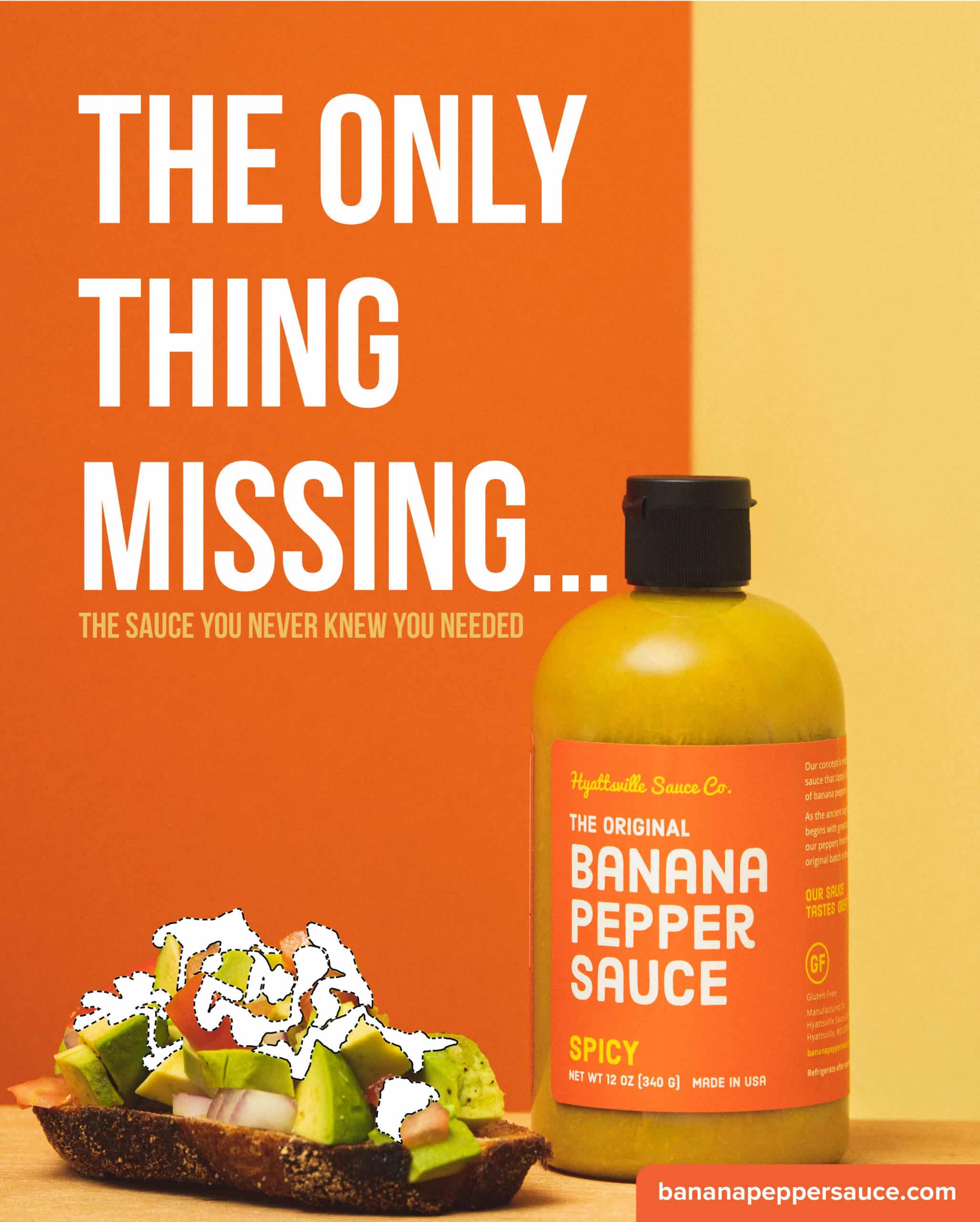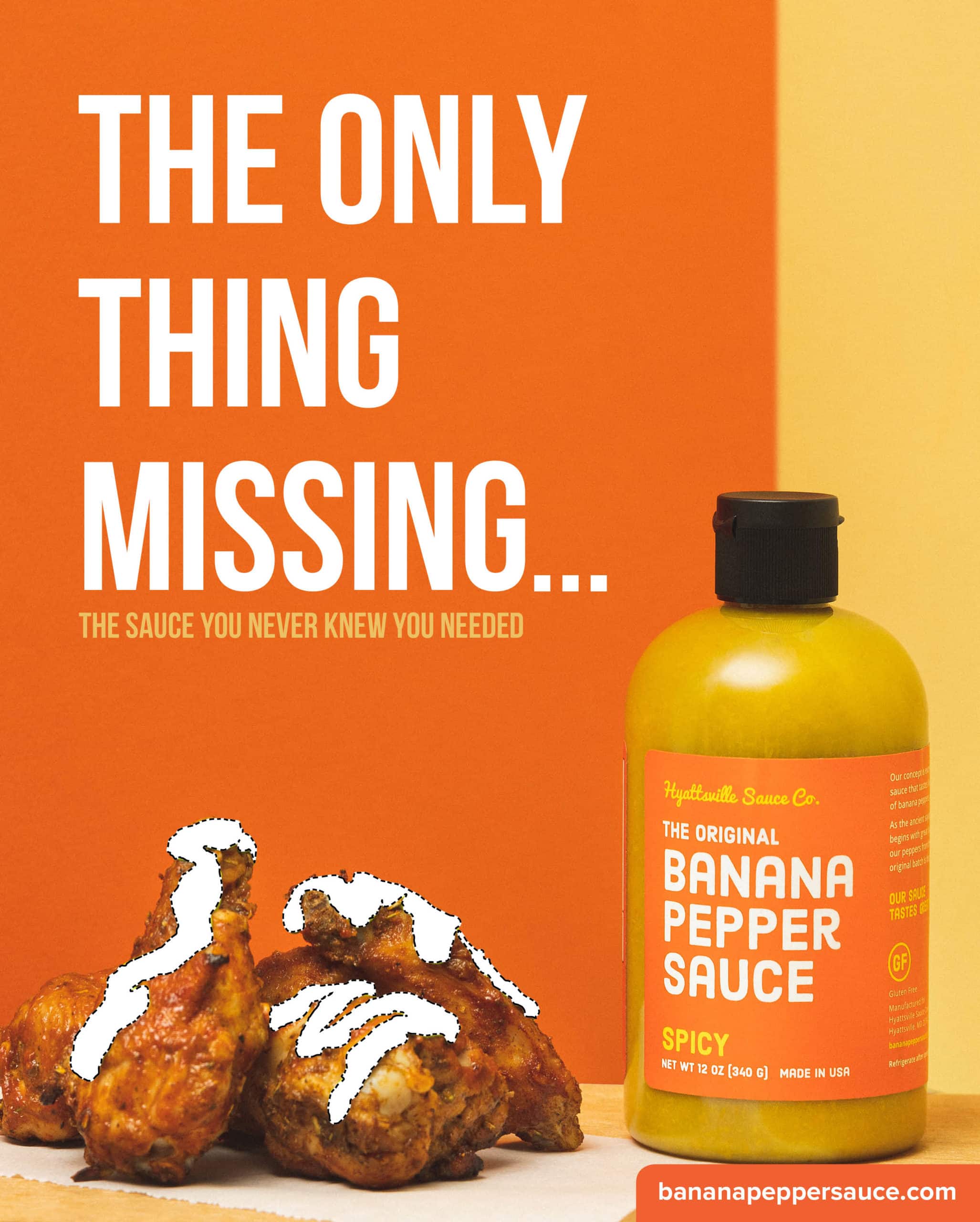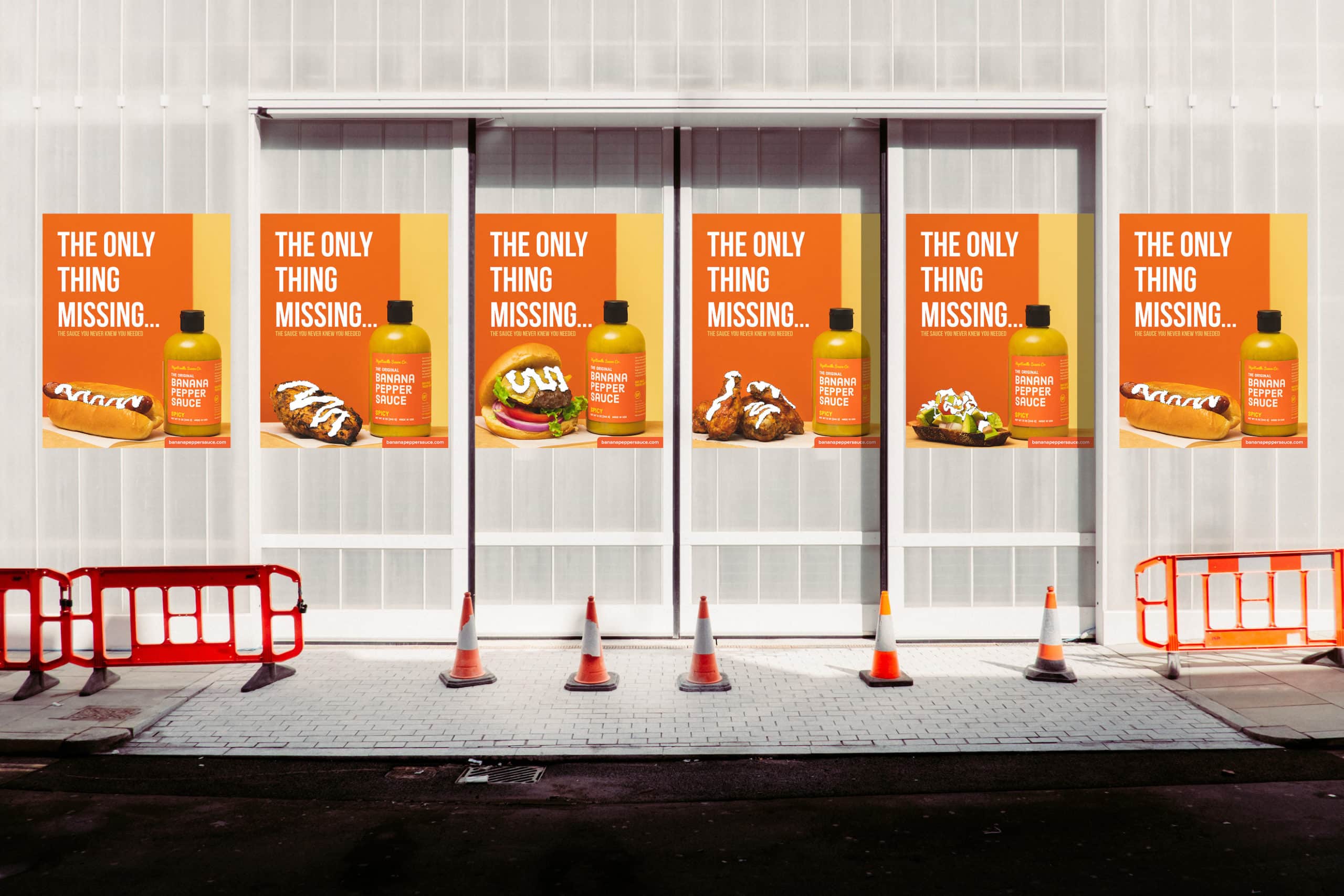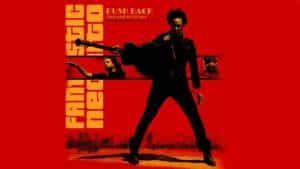Index Template
Using Social Media to Promote Your Video
The baby has arrived! Months of arduous work culminated in the birth of a video masterpiece, and it’s time to show it to the world.
If you did your due diligence (recommended), you’ve developed a comprehensive social media video marketing strategy (recommended) with a diverse set of new media distribution channels that you have calculated down to the penny are perfect for your 1) brand, 2) creative concept, 3) style of video, and 4) target audience.
Let’s face it. Your company’s marketing mix is wrong if it isn’t heavy on video and social media.
- Video is the best medium to communicate a brand’s message.
- Social platforms reach almost 3 billion people worldwide.
How big are social media platforms? Planet Earth’s total population is 7.9 billion people. There are 4.6 billion active global internet users, or 59.5% of the total population (Statista, 01/2021).
The Top 15 Social Media Channels
Social Media Platform Country Year Launched # of Active Users (07/21)
Facebook USA 2000 2.7 billion active users
YouTube USA 2005 2.2 billion active users
WhatsApp USA 2009 2.0 billion active users
Facebook Messenger USA 2008 1.3 billion active users
Instagram USA 2009 1.2 billion active users
WeChat China 2011 1.2 billion active users
TikTok China 2017 689 million active users
QQ China 1999 617 million active users
Douyin China 2016 600 million active users
Sina Weibo China 2010 511 million active users
Telegram Dubai 2013 500 million active users
Snapchat USA 2011 498 million active users
Kuaishou China 2015 481 million active users
Pinterest USA 2010 442 million active users
Reddit USA 2005 430 million active users
That is a lot of international online marketing real estate – and Twitter’s 300 million followers aren’t even on it! It’s hard to imagine that a business can still exist if they underestimate the importance and influence of social media networks, especially when 40% of the global population isn’t even on the internet yet.
Time to Get Technical
Video and social media are the perfect matches at the ideal time. Technological developments in streaming technology increased average upload/download speeds throughout the rise of social media, paving the way for video’s digital marketing dominance.
The download speeds required to stream video content are:
- 25 Mbps: sufficient for streaming 1080p HD video.
- 10 Mbps: sufficient for 720p video.
- 5 Mbps: sufficient for 480p video.
According to Speedtest Global Index, which “ranks mobile and fixed broadband speeds from around the world on a monthly basis,” as of June 2021, average download/upload speeds in the United States were:
- 45 Mbps/68.70 Mbps.
- 08 Mbps/13.67 Mbps for mobile.
Those speeds are more than high enough to stream high-quality videos and reduce or eliminate streaming issues.
According to Speedtest.net’s Speedtest Global Index, as of June 2021, global average download/upload speeds were:
- 61 Mbps/57.67Mbps.
- 34 Mbps/12.69 Mbps for mobile.
As global video start failures and buffering issues decline, and picture quality and bit rate increase, the video will continue to be the most effective way to communicate a brand’s message.
Dominant social media networks like Facebook will most likely continue to grow (or gobble up competitors), and new social media networks will continue to launch.
Likewise, the current infrastructure investment in nationwide 5G cellular networks accelerated mobile use in the U.S. (metric). As visual content becomes easier to watch on cellular networks, another surge in its marketing capabilities will occur.
The romance between video and social media is now a long-term relationship. Future growth, integration, and reach are likely, which will, in turn, spur innovations across the spectrum of stakeholders (e.g., technology, platforms, companies, marketers, end-users).
An intelligent high-level video social media policy can build a positive feedback loop of investment and return into the video-social media partnership.
Determine your Social Media Mix
Get the data! Conduct the necessary market research and develop a solid plan to execute your video marketing strategy that begins with concept and ends with distribution. If your team applies equal thought and care to every creative chain link, you maximize your video’s chance to succeed.
Let’s say your company (We Sell Stuff, Inc.) research concludes video marketing campaigns on three specific social media networks will best serve your marketing objectives.
You discover your target audience, and a new demographic you want to reach is scattered across three very different social media channels. Two of them are video content sharing sites (e.g., YouTube and TikTok), and one is a messaging service (e.g., Facebook Messenger and WeChat).
Armed with this knowledge, your marketing team can deep dive into the fine print of how each network operates, its cost, and its projected ROI.
Customization and Optimization
The fifteen social media networks listed above are all different. Even platforms integrated and cross-promoted like Facebook & Instagram have different rules and regulations, users, languages, customs, and ways to engage with content.
Social media users are savvy, especially on their preferred network. The type of content needs to match the social media channel. It would be best if you learned their language. Instructional videos may be great on YouTube but ignored on TikTok.
Social media video content like regular videos may work wonders on Instagram Stories but flop on Facebook Messenger. You get the idea. Creative and technical teams must collaborate to successfully transition between completing a video and releasing it into the wild.
We Sell Stuff, Inc. can now practically apply its due diligence to the process of customizing your video content for each social network. That’s creative. The resulting videos then need to be optimized for each social channel’s unique technology. That’s technical.
We Sell Stuff, Inc. has a great social media marketing strategy that identifies the ideal social media networks for its video titles. The company’s creative and technical teams, including video production professionals if hired, have a high level of expertise related to the social accounts and collectively customize and optimize video content to play on each one.
Analytics
One of the significant advantages of social media marketing is the volume and breadth of the analytics available to companies that invest the time to collect, analyze, and create actionable steps around the data’s conclusions.
Click-through rates, conversion rates, bounce rates are just several examples of metrics at marketers’ fingertips.
Whether you are monitoring your Google Ads buy with Google Analytics or using the metrics provided by the social media network hosting your content, you can find out whatever you need to know to make constant improvements to your overall strategy.
A big ship is hard to steer through a canal; it moves slow and may not avoid pitfalls in time. Social media is not a big ship, but many small, agile clippers that can change course with ease quickly.
We Sell Stuff, Inc. unleashes its market analysts and, after studying a statistically significant time frame of data, learn that high-quality content promoted on two of their social media networks far outperforms the third.
The analysts also discovered that two of the four types of videos in circulation have much higher engagement levels and conversion rates. As a result, We Sell Stuff, Inc. streamlines its video marketing strategy, and a measurable increase in ROI occurs.
Reach
Social media is the stone you toss into a pond that creates concentric expanding rings that ripple outward. If you promote your customized and optimized video across the proper social media accounts (and your website), it sets a process of organic growth in motion that has a limitless reach.
The most extreme version is when individual videos “go viral.”
Other ways in which video increase a message’s reach:
- Video ads remain online in perpetuity, which allows video views in perpetuity.
- Relevant content (aka Evergreen content) drives traffic through SEO long after a video is created and distributed.
- Video clips, video thumbnails, mini video teasers increase user engagement and continue to drive traffic through SEO long after they run.
- Social media posts, or even a blog post, that include video, also drive traffic through SEO long after they post.
Do I Need a Promotional Video for My Business
Yes. You need a promotional video.
See? That was easy. Now that you’ve agreed to spend a lot of money (relatively speaking) on a promotional video, it’s a good time to tell you what a promotional video is. A promotional video (or promo video) is a video that promotes a company/brand, product, service, or cause.
That definition may sound like a run-of-the-mill description of every advertisement you’ve ever seen, but there is nothing traditional about the modern promo video. Promo videos are a new front in the marketing war to stand out in infinite content space. “Infinite space” currently means 200 million active websites visited by 4.6 billion active users worldwide. Competition is medieval.
A quick note on the word “need,” as in “Do I Need a Promotional Video for My Business?” (Yes). Think of it this way. Twenty-five years ago, you didn’t need a website, and two years ago, you didn’t need a face mask.
Did we mention many types of promotional videos exist (so you may want more than one)? Here is a list of effective promo videos:
- Product Demo
- Customer Testimonial Video
- Explainer Video
- Company/Work Culture Video
- Product Review Video
- Corporate Event Video
One type of promotional video may be more effective for your specific business needs than another, but it is a statistical fact that all of them are effective (so you may want more than two). Why? What do they have in common? Promo videos are:
- Short
- Compelling
- Memorable
- Inspiring
- High-quality
- Professional storytelling
- Animation or live-action
Let’s take a promotional video tour so you can get an idea of why a promo video may be just the thing your marketing department needs to do.
Product Demo/Tour Video
Fun statistic: 69% of consumers prefer product demos when trying to decide if they are going to purchase a product or not. (Wyzowl)
Product demos show a product in action. We’re not talking about some dry run-down on how to use a lawnmower. Product demos are short, engaging, high-quality videos that use advanced storytelling through animation or live-action to get your prospective customer to reach for their wallet.
Customer Testimonial
Fun statistic: One of the top three most effective types of video content is customer testimonials. (Marketinghy)
A compelling customer testimonial video takes us on the hero’s journey. The customer is the hero and your company/product/service is the guide who helps the hero make it to the happily ever after. The formula is the same.
A person describes how idyllic their life was before a significant problem intruded and made everything terrible. Then they discover your product, and it changes everything back to the way it was before – but better. Ka’ching!
Explainer Video
Fun statistic: According to Strategic, 91% of people watch an Explainer Video when purchasing.
So many people already watch Explainer Videos on such a frequent basis they would probably find it funny that there is a term for them. An explainer video explains how a product, service, or feature works. You sell Widgets.
Your Explainer Video explains how your Widget works, how to use it, and why your Widget is the best Widget of all time.
Company/Work Culture Video
Fun statistic: Brands receive three times the positive word-of-mouth if the companies that make them inspire a higher emotional intensity. (Sprout Social)
Videos to promote your company are a little like the end of “Wizard of Oz.” You pull back the curtain, so consumers can get to know the people behind their favorite brands or learn about a company’s internal culture.
Company/work culture videos can help form a deeper and more long-term relationship with your customer base or give top talent a glimpse into why they may want to bring their professional expertise to your company.
Product Review Video
Fun statistic: “62% of consumers watch product review videos before making a purchase.” (MediaKix)
A product review video sounds like a customer testimonial. Still, the reviewer is not a happy customer but a third-party, unbiased expert or influencer in a field related to the product or service.
Think of a product review video as the Consumer Reports of promotional videos. Perceived as neutral but knowledgeable, a reviewer’s demonstration of the product and measured opinion of its performance carries a lot of weight with potential customers.
Corporate Event Video
Fun statistic: “Video of a live event increases brand favorability by 63%.” (Twitter)
Live product launches are the quintessential corporate event video, but they certainly are not limited to only that form. Live streaming an event creates buzz and excitement about a new product, or line, or partnership – whatever the case may be.
Event videos can be live-streamed or promoted on social media platforms like Facebook (Facebook Live and Facebook Stories) and Instagram (Instagram Stories and Instagram Reels).
Conclusion
That is an impressive list of options and metrics. Any business can benefit from some type of promotional video. Start slow if you need to, or if your resources are limited.
Choose the kind of promotional video that will help your organization the most and dive in. Promotional videos offer new and creative ways for brands to reach and connect with customers.
The wide range of promo video options and the diverse topographies of social media networks create unprecedented opportunities to micro-target the most likely prospects to convert into loyal customers and for a brand to demonstrate different, more human, characteristics to the public.
Corporate personhood is a legal term, but it should be a marketing one. The more a company operates as a person, the more likely it will make more enduring “person-to-person” connections.
Online marketing’s magic is a mix of creativity and data science. Industry analysts predict video (creativity) will soon be 80% of all internet traffic.
Real-time analytics (data science) allow brands to mitigate risks, real or imagined, and develop online marketing strategies that respond in an agile and nimble way to an ever-evolving marketing landscape — all while forming a deeper connection with its customers.
The marketing is creative but data-driven, and the data is clear – every business needs a promotional video… or three.
YouTube Video Ideas for Beginners in 2021
“If you build it, they will come.”
That is the famous line from W.P. Kinsella’s book-turned-hit movie, “Shoeless Joe: Field of Dreams,” about a magic baseball field where the ghosts of the greatest baseball players reunite to play ball just for fun.
All kinds of people from all sorts of places journey to the field to watch their favorite players from by-gone eras, united by nostalgia and a love for the game.
In 1965, with money and research funded by the U.S government’s Defense Advanced Research Projects Agency (DARPA) an MIT professor connected a computer in Massachusetts to a computer in California, and the internet was born.
Forty years later, three forward-thinking individuals who worked for PayPal, Chad Hurley, Steve Chen, Jawed Karim, built the internet’s angel-funded field of dreams and called it YouTube.
Instead of a magic field where only players of incomparable skill and renown compete, YouTube is a video-sharing wonderland that, in 16 short years, has grown in power and influence rivaled only by its parent company, Google and Facebook.
Google, which bought YouTube in 2006, is more significant. Facebook has more active users. But YouTube is the #2 most popular social media platform worldwide, and its currency is the most popular medium worldwide – video.
Video traffic will be over 80% of all internet traffic by 2022. That’s NEXT year. Only 60% of the human race is online. Streaming technology improves every year, which makes watching a video online more manageable and more accessible.
Mobile technology, and cellular networks, improve every year, which has a similar positive impact on user-generated video-sharing platforms. More than any other company, YouTube will benefit from the skyrocketing growth and popularity of video streaming, so it’s worth a delve into YouTube’s brief history.
As promised in the title, a barrage of fantastic video ideas for YouTube beginners will follow YouTube’s timeline.
YouTube Essential Facts
Founded: February 14, 2005
Founders: Chad Hurley, Steve Chen, Jawed Karim
Headquarters: San Bruno, California
Parent Company: Google, LLC (2006-present)
Advertising: Google Ads
The following is anecdotal, but a specific individual and his friends, who may or not be related to an unnamed content writer, live on YouTube. Kids don’t realize something other than streaming exists and prefer user-generated content.
More than that, however, a kid will set up a YouTube channel, swipe the closest iPhone, and start filming. Soon your backyard Spielberg posts original content and gets LIKES from all over the world. YouTube is not just watching. It’s participating.
Anecdotal for sure, but sometimes stories you hear people tell are backed up by hard science. From Backlinko.com (Jan 2021):
- YouTube’s 2020 revenue was $19.8 billion.
- YouTube currently has 2 billion users.
- 9% of global internet users access YouTube monthly.
- Every day, viewers consume more than a billion hours of YouTube content.
- YouTube’s 2.2 billion users make it the #2 social media platform worldwide.
- India has approximately 225 million YouTube users, the most of any country. The United States follows, with 197 million.
- People between the ages of 15-35 are YouTube’s dedicated users.
- Globally, women use YouTube more than men.
- 6% of YouTube channels have fewer than 10,000 subscribers.
- Quarterly YouTube ad revenue is over $5 billion.
- In 60 days. more content is uploaded to YouTube than the combined content created by the three major U.S. networks in the past 60 years.
- On average, individual YouTube content creators receive between $3-$5 per 1000 views.
- YouTube’s ad revenue in 2021’s 2nd quarter almost doubled to $7 billion.
Not too shabby for a company still in its awkward teenage years!
YouTube Timeline
2005 YouTube launches with Jawed Karim’s “Me at the zoo” video.
2006 Google, LLC buys YouTube for $1.65 billion (that was fast!)
2007 YouTube expands into nine countries and launches a mobile site.
2010 YouTube’s market share reaches 43%, with 14 billion video views.
2011 YouTube’s daily video views top 3 billion and 48 hours of new videos are uploaded every minute.
2012 8 million people watch a YouTube live stream of Australian skydiver Felix Baumgartner jump from a helium balloon twenty-four miles above the Earth.
2014 Susan Wojcicki appointed CEO.
2015 YouTube Music, YouTube Kids, and YouTube Gaming launch.
2016 Streaming service YouTube TV launches.
2018 YouTube Premium launches.
That’s the story of how YouTube became one the largest advertising networks in the history of humanity. Oh, the humanity! YouTube is digital marketing, and social media marketing rolled into one giant juggernaut.
Individual creators, potential customers, and regular people with unique ideas for videos are part of the YouTube community — all waiting for the world to discover.
Current YouTube Products/Services
- YouTube Premium (monthly subscription service, YouTube & YouTube Music ad-free)
- YouTube TV (streaming service, monthly subscription)
- YouTube Movies & Shows (Buy, Rent, Free with Ads)
- YouTube Music (Free with ads and limited features, Premium ad-free with all features)
- YouTube Live (live-streaming events)
- YouTube Kids
- YouTube Creator Academy
- YouTube for Artists
Back to the field of dreams. What makes YouTube a field of dreams is that it’s a dream for different reasons to different people.
Some people are addicted to watching user-generated video content, and they can’t get enough. Others are brand builders and marketing gurus who want to reach and influence YouTube’s 2 billion users.
Many are content creators who love producing videos and uploading them for the world to see – not to mention profit share through Google AdSense. Then there’s the top category of YouTube celebrities and influencers who are getting rich through the medium.
Nothing speaks louder than earning money hand over fist. For people who want traditional professional entertainment, YouTube TV and YouTube Premium offer those options as well.
YouTube Video Ideas for Beginners in 2021
Now that you’re an expert on YouTube’s history and clout, it’s time to launch your million-dollar YouTube channel. The best way to stand out on YouTube is to be your category.
However, for beginners, an excellent place to start is with the top ten most popular types of videos on YouTube. Know your audience! These types of content are what viewers watch the most (so these categories are also the most competitive).
1. Product Review Videos
The #1 type of YouTube video are product reviews. Researching products online before making a purchase is an almost daily ritual for most people. Product reviews are popular because viewers trust the source, typically an expert in a related field to the content, a consumer advocate, or an influencer with cred.
The source doesn’t matter as long as it’s a trusted source, isn’t a customer testimonial video from the product’s creator, and isn’t a paid review. Product reviews must be objective and free from bias.
2. How-To Videos
Many YouTube channels are how-to videos only and have millions of active subscribers. When you need to know how to do something, YouTube is the fastest way to find someone to teach it to you.
Warning: beauty influencers may dominate this category, but if you have a particular skill, you believe is worth teaching, and you can do it entertainingly, How-to-Videos may be the category for you.
3. Vlogs
These personal online video blogs are time-consuming but offer influencers (think beauty and travel) an authentic way to connect with their viewers by inviting them into their daily lives.
More than content, there are technical aspects to producing a Vlog that requires advanced specialized skills, so a successful Vlog has a great deal of dedicated, collaborative work that goes into it. Those efforts pay off.
Vlogs are viewers’ third most popular type of video to watch. For those who profit from their content or YouTube personas, Vlogs are their best vehicle, even if it means producing relevant content on a regular basis.
4. Gaming Videos
The gaming industry is more profitable than Hollywood and U.S. sports teams combined – and one of YouTube’s most popular video formats. If you’re a gaming enthusiast or champion, your gaming channel with Gameplay Video may be your dream come true.
5. Comedy/Skit Videos
If you can make people laugh, you’re the life of the party. The same is true on YouTube. Comedy pushes all of our happy buttons. Beauty influencers like to use comedy skits in their videos to add a more human dimension to what can seem posed and plastic.
6. Haul Videos
A consumer, statistically most likely a woman, shows the world what she bought on her latest spending spree in a haul video. To varying degrees, she talks about the experience or product in greater detail.
Haul videos evolved out of “unboxing” videos (#10) but are more informal and freeform. Brands love Haul videos because they organically showcase their products.
7. Tag or Challenge Videos
Tag videos show viewers multiple content creators performing the same video challenge. The competitive format and watching participants’ unique way of interpreting the same challenge puts tag videos at #7.
8. Favorites/Best of Videos
This category is very popular with beauty and fashion creators and influencers. Favorites videos are an intimate look at the products a YouTuber uses and loves. Like a product review, if you can build trust between viewers, they will tune in to hear your opinion, which may influence the viewer when they turn buyers.
9. Educational Videos
“Knowledge for the sake of knowledge!” That’s Harvard’s motto. Irony aside, the internet is the most resource-rich institution since the Library of Alexandria burned in 48 BCE. Viewers can find videos about any subject and in any form.
PhDs in Ancient History can guide you through the most influential ancient civilizations, and beauty Vloggers can post educational videos about products they love, whether educational in the more traditional sense or commerce; an educational channel is about sharing knowledge.
10. Unboxing Videos
Unboxing videos are the Christmas morning of videos. YouTubers love unboxing stuff, and viewers love watching them unbox stuff. Like Unboxing videos’ younger sibling, Haul videos, brands love this format because it gives their new and existing products an organic unveiling to discriminating consumers from a trusted source.
If you believe these ten video ideas for YouTube beginners are a lot to digest, please keep in mind these ideas are the most popular, not the only ones. Here’s a quick list of other video types to consider (in alphabetical order):
- Explainer Videos
- Daily Routine Videos
- Funny Videos
- Life Video
- Music Videos
- Opinion Video
- Reaction Videos
- Response Video
- Tips Videos
- Travel Videos
If you don’t see a niche in the list above, hundreds of more content ideas exist (not an exaggeration). Enthusiasts of every kind can find a video to match their interest. Any content creator can find a corner of the YouTube community where they can feel connected and contribute.
Conclusion
Your field of dreams awaits. Play ball!
8 Things To Keep In Mind When Producing Your Video In 2021
Digital video marketing is in a golden era of innovation. The online world is stacked with creative developers constantly pushing the envelope in one way or another. Whether it be a new algorithm or a new social media platform, the internet is evolving on steroids.
Digital marketers must constantly adapt to new challenges and opportunities – they must innovate as fast as the environment in which they operate.
This online marketing Galapagos gives brands (and companies) a new frontier of choices far exceeding the early, now quaint, days of running a commercial on network TV. To be clear – under the right circumstances, a TV commercial on network TV is still great, but it’s now just one way to go.
Digital marketers and companies produce many types of videos pushed through a web of online and traditional distribution channels that can reap tremendous results.
Online video dominates everything from ROI to SEO. Nobody asks the question, “Should we make a video?” anymore. The question now is, “How many do we make?” You may be a company that wants to make a staff training video or post an explainer video for a new product on your website.
You may be a new brand that wants to use video platforms like TikTok and YouTube to reach a specific screen-addicted demographic. Or you may be Geico and spend $1.5 billion a year on advertising. No matter who you are or your end game, the rules of video production are the same.
When producing your video in 2021, here are eight things to consider (in alphabetical order):
- Branded Video Content
- Customization
- Education-Instructional-Training
- Engagement
- Increase sales
- Production Value
- Search Engine Optimization
- Social Media Mapping
Branded Video Content
The hyper-competitive online marketplace requires brands to form deeper emotional connections with potential leads than their competitors – no easy task. A brand can maximize its video’s ROI with campaigns united by a common design and style. For example, a company’s videos should match its website, logo, and persona.
Digital video distribution is multi-channel or omnichannel if you prefer that term. Each platform has parameters that affect performance, and each is different. A video project can get lost in space if there isn’t a cohesive, integrated approach that ties them all together in the viewers’ minds and hearts.
Consider this prime example of branded video content. A company’s website is its global corporate headquarters. Anybody can access it 24/7 from anywhere there is internet access. A company home page with eye-catching corporate video content with excellent production value is a fantastic way to impress potential customers.
Imagine a homepage with searchable video clips displayed as a custom thumbnail image (to give it some pizazz), preferably video thumbnails, which increase YouTube click-through rates.
Customization
Video is the key that unlocks multiple kingdoms. If you make a single video and distribute it through ten different video advertising channels, your company can make an exciting impact. However, a better strategy is to make ten other videos – one for each channel.
Imagine you travel to ten different foreign countries, one right after another. You only speak your native tongue, and you stick to the tourist attractions. No matter what, your trip will be a remarkable and memorable chapter of your life. No one will question that.
Now imagine that you know the language of every county you visit. Instead of staying at a hotel and snapping selfies at famous monuments, you remain with natives of the country and see the country as the locals do. That is a different and more enriching experience.
Customizing video to the language and customs of the social channels or online distribution channel on which it will run gives brands an advantage over those who employ a one-size-fits-all strategy. Examples of customizable components that define a visual story are video format, sound, and length.
Education-Instructional-Training
Video isn’t just for hawking products.
If your brand, keep in mind that your digital video marketing strategy may include corporate videos whose target audience is a company’s employees or explainer/product videos on a company home page and social media channels.
If you are a digital marketing agency, keep in mind that your digital video clients can include educational videos for students or instructional videos for professionals.
LinkedIn Learning is the quintessential website for education-instructional training videos. Some are live-action. Some are animated. Many are both. All require professional writers, producers, and talent.
Engagement
Video increases user engagement. Not satisfied with that fact, online marketing professionals employ various deft tools to boost engagement beyond video’s inherent effectiveness.
Competition for eyeballs, hearts, and minds spur innovation. Corporate motion graphics, interactive videos, and virtual reality are three great examples.
Corporate motion graphics is an animation and voice-over combination akin to oysters and Champagne, beer and baseball, and The Captain and Tennille.
CMG videos guide viewers through products and services with ease and charm with excellent conversion rates that make people in C-office suites hand out performance bonuses.
Interactive videos are, by definition, engaging. It’s one thing to look at a slot machine and another thing entirely to pull the lever. Real people like to remove the lever.
People think of virtual reality as some sci-fi technology that will immerse them in an alternate world – and it will.
For digital marketing, however, VR is an effective way to transport viewers into the video. For example, real estate agents widely use 360-degree VR videos to give people tours of residential and commercial property.
Increase Sales
According to Wyzowl, 80% of people say product videos give them more confidence to purchase a product. Product videos can highlight features, show them in use, or explain how it works. The next best thing is to have a company ambassador in the room with the potential customer and sell it to them in person.
Product videos have a demonstrable effect directing online purchasing, which is a game-changer. Once the benefits of product videos are numerous to ignore, the stragglers who dragged their feet adopting product videos as an integral part of their digital video marketing strategy will be one step behind their competitors.
Production Value
Your video should be professional quality everything – picture, sound, performance, production design, editing, and graphics. Ads that do not meet the sophisticated expectations of modern consumers are ineffective and become fodder for parody.
Video is so important to marketing strategies that the number of videos in production is unprecedented. As companies ramp up the number of videos they produce, standards must not slip. Here is an example completely separate from digital marketing – wine. Cue the background music to “Red Red Wine.”
Making fine wine is a collaborative art form, just like video production, and it’s well-known that when a large company gobbles up a successful boutique winery, the new owner will inevitably ramp up production at the expense of the quality. The wine suffers a loss of reputation.
This trade-off occurs at a single winery or across an entire region. Marketing agencies need to guide their clients away from this trap. The best business model is one that maintains its integrity.
Search Engine Optimization
Video increases a website’s search ranking. Add a video, your ranking improves. It is that simple, except that it’s not simple. It’s a complex shell game of different algorithms employed by online ad distribution channels that are subject to change without warning (so to speak).
Let’s take a look at Google’s ranking method to showcase how video boosts SEO. Google uses two key metrics to rank a site:
The number of backlinks that refer users to the site.
The amount of time a viewer spends on a site.
Video typically pushes up both metrics, resulting in a higher SEO rating. A video may get prospects through the door, but the customer journey should end with a high-quality video with great storytelling and production value, or the video could have the opposite effect than intended.
Social Media Mapping
You have a finished video. Now what? The top 15 social media platforms in order by # of active users: Facebook, YouTube, WhatsApp, Facebook Messenger, Instagram, WeChat, TikTok, QQ, Douyin, Sina Weibo, Telegram, Snapchat, Kuaishou, Pinterest, and Reddit.
The challenge here is two-fold. First, you should commit to an appropriate amount of due diligence to determine the platforms that will best help you accomplish your business objectives.
For example, maybe your target audience is hiding in gaming channels or responds to a specific type of video, such as customer testimonial videos. You won’t know until you get the data. Second, you should produce content tailored for the media you do choose. For example, shorter videos are the best content for TikTok.
An advanced level of expertise is needed to exploit all the potential advantages video can give a product or brand. Every platform has different users who engage with content in different ways.
On the back end, each platform has technical specifications that optimize quality and performance. Lastly, each platform has various algorithms that impact a video’s endurance in its search results.
Animated Videos vs. Live Action Videos All You Need To Know
Corporate videos aren’t new – there are just more types of videos, and, in the age of instant analytics, they are more effective. Companies leverage the power of video for internal employees and an increasing number of external users.
Typically hosted on a company’s website, featured in direct marketing campaigns, or distributed through company-run social media accounts, corporate video content is an excellent way for a company/brand to diversify its multi-media profile and reach existing and potential customers in innovative ways.
When your company’s creative team sequesters in a room for its first corporate video brainstorming session (recommended), one of the first items on the written, distributed-in-advance agenda (recommended) is to decide if Animation or Live-Action will better serve the type of video you plan to make.
Animation is a popular and often more preferable creative approach to video. One only needs to look at the current Japanese anime craze to understand how deeply rooted animation is in our shared global culture.
Yet, live-action video production with top-notch storytelling remains one of the best and most memorable ways to connect with people – and, when done right, can be an enriching, collaborative endeavor.
This article is an exercise. Below, a list of ten types of corporate videos. Read through them and think about which way you would go – Animation or Live-Action.
Staff training. For example, you need to teach new employees how a specific type of meeting runs and why.
- Safety: For example, your company is in biotech and handles hazardous materials. Safety is paramount, and video is the best way to communicate that core message.
- Corporate Event Videos: For example, a new product launch. Apple Inc. loves new product launch videos.
- Trade show videos: For example, every year, an auto show sponsored by major global car brands is held in several major cities to introduce new vehicles, concept cars, and showcase classic cars. Everywhere you look, a slick video of a car, or SUV, or EV doing miraculous things. Some videos give you a tour of the vehicle – or through the car’s engine!
- Explainer videos: There are so many examples, here are just two. One, online recipe sites with explainer videos showing how to prepare a dish. Two, new product features explainer videos.
- Client and customer testimonial videos: It’s a good thing Yelp reviews aren’t videos. That would be a dismal set of business-killing videos for sure. However, if YOU make the customer testimonials, you can control the narrative.
- Company/brand promotional videos: This category is to promote something other than a company’s product or brand. For example, a company that partners with a charity makes a video promoting its cause.
- Education Videos: In this case, the company is a school, college, or university. Over the last year, Covid-19 drove significant growth in videos produced for education. Schools from kindergarten to graduate school moved online. Video conferencing (e.g., Zoom) and video (e.g., Flipchart) are the two pillars of virtual learning.
- Billionaires in space videos: A new category for videos that are a unique and groundbreaking spectacle. For example, recent videos of billionaires and their friends bouncing around rocket ship cabins in zero gravity. Space tourism is coming to the (wealthy) masses, and the footage we’ve all seen on the news will be in so many investor/promotional/corporate videos there is no doubt editors are already working their magic.
The Case for Live-Action
There is an allure to live-action production. Everybody gets to pretend they’re on a big Hollywood movie set for a couple of days and call it a wrap. However, video production is a complex process with many creative and technical complexities.
Companies should always consider hiring video production professionals over the DIY approach. Their expertise is needed all the more on live-action productions.
The mission is to connect with your target audience in a meaningful, memorable way as quickly as possible. Live-action may be your best option for the following reasons:
- Viewers form an emotional connection with characters (or real people featured in a video) they feel are like them and whose stories resonate in their own lives. The human element prevails.
- Only live-action captures the full range of human emotions. A tone, a gesture, an eccentricity are just a few subtle ways humans communicate humor, anxiety, confidence, happiness, sadness, and on and on.
- Visual storytelling is an art form with a blueprint found in every human culture throughout recorded history. There is not more effective way to communicate. Full stop.
- Video’s impact can only reach its full potential through live-action. Go back to the example of car videos at car shows. Showcasing the beauty and power of a sexy new sports car is better served by live-action footage.
- Video is king, and celebrities are the king of videos. Without dispute, featuring a celebrity or legitimate influencer in a video will typically increase its reach, audience engagement, conversion rates, and overall ROI.
Cons of Live-Action
Consider these downsides when producing live-action video content.
- Managing the human element of video production is challenging and unpredictable. For example, the talent in the video will most likely require special handling for which there is no handbook. Good luck.
- Video production companies produce videos for a wide range of budgets, but there is no way around the fact that the least expensive live-action video production is costly. You can cut corners in many ways, but you can’t get around necessary expenses like lighting equipment.
- A live-action shoot is susceptible to setbacks. For example, your video project’s big shot is a spectacular sunset that morphs into the brand’s logo, but when the day of the shoot arrives, it rains for a week.
The Case for Animation
Let’s all go to the lobby!
Let’s all go to the lobby!
Let’s all go to the lobby!
To get ourselves a treat!
If you don’t know that song, do yourself a favor, go to YouTube, and cut and paste the lyrics into the search bar. This vintage animated video content encouraging 1950s movie-goers to hit the concession stand during intermission will not disappoint. (Yes, intermission.
For our younger viewers, intermission is the live-action version of pausing the DVR, stream, video game, or whatever it is online you are watching).
Seven decades later, movie exhibitors still use some version of that animated video to get 2021 movie-goers to hit the concession stand. And now there’s beer and wine, so have at it. Animation video’s endurance should make it an automatic component of any video content marketing strategy.
The mission is to connect with your target audience in a meaningful, memorable way as quickly as possible. Animation may beno your best option for the following reasons:
- Animation explains a complex idea in visually dynamic ways. For that reason, many explainer videos use animation. A stellar example is documentarian Errol Morris’s use of CGI animation in “Brief History of Time.” The animation explains the late theoretical physicist and cosmologist Stephen Hawking’s complicated ideas to people who aren’t geniuses.
- A brand can commission a visual style that integrates its overall branding strategy and is designed to reach targeted demographics.
- Animated video’s potential is as limitless as the human imagination. The Big Bang created the entire universe everywhere in a single moment. Animation is artistry’s big bang, able to create entire universes everywhere in a single moment. Or at least 15 seconds!
- Animation allows us to go where we cannot go. Once again, go back to the car videos at car shows. There are just as many animated videos as there are live-action ones. Instead of a sleek concept car gliding along a coastal highway, we journey into the inner workings of the most advanced electric motor in development. It is quite the odyssey.
- Animation’s remarkable craftsmanship and ability to magnify the human experience is the reason the top ten highest-grossing animated films each made over one billion dollars. One billion! In contrast, the top five live-action films made over two billion, but 6-10 are on par with animation. Not too shabby!
Cons of Animation
Consider these downsides when producing animated video content.
- Animated video production is typically more extended than live-action. Depending on the video style and production process, turnaround times can drag out.
- Animated video costs can be a barrier to entry. A professional animator is a rare commodity, and animation studios are even more so.
- Animation is a different type of production. An animation script is different from a live-action script. Animation options are different from live-action options. Animation video cost is different, which is essential when drawing up a budget.
The Case for Animation & Live-Action
Two classic examples of the harmonious marriage of animated and live-action videos provide all you need to think about the third way – both! A note: many live-action videos already include animation in the form of animated graphics and visual effects.
- The live-action/animated “Who Framed Roger Rabbit” was a first in so many ways it’s a whole article. The movie provided an incredible showcase of what is possible when video combines the best of both worlds.
- Another example is Norwegian one-hit-wonder pop music band Ah- Ha’s 1985 music video for their song, “Take on Me.” Warner Brothers paired the band with American director Steve Barron and American animator Mike Patterson. The resulting video became iconic and its emotional impact lasted a lot longer than A-Ha’s career.
Conclusion
Animation vs. Live-Action is an important but mostly easy decision facing companies producing corporate videos. Each type of corporate video lends itself to one medium or the other. The answer reveals itself during development for the big ideas that do not favor one direction or another in the early stages. Each medium can be marketing magic.
5 Problems When Making a Video Ad
In the 1997 Oscar-winning feature film, “Wag the Dog,” to divert attention from a presidential scandal, an expert spin doctor, Conrad Brean (Robert De Niro), hires a seasoned Hollywood producer, Stanley Motss (Dustin Hoffman), to manufacture a war. Motss’ stories about challenges he has faced producing past films are priceless:
Stanley Motss
The war isn’t over ’til I say it’s over. This is my picture – this is NOT the CIA’s picture. You think you’re in a tight spot now? Alright, Conrad, try making The Four Horsemen of the Apocalypse – tell ’em, King.
Fad King
Three of the horsemen died.
Stanley Motss
Hear what he’s saying? Three of the horsemen DIED. Two weeks before the end of principal photography. This is NOTHING. This is nothing, this is – this is – this is just, “Act One, The War.” Now we really do need an Act Two.
“THIS IS NOTHING!” is the attitude you should adopt right now because when you start making your video, everything will go wrong. Whatever it is you think will happen isn’t going to happen, and what does happen will not be anything predictable or preventable (for the most part).
It’s a war, alright, so when everything falls apart, and you wish you had gone door-to-door with flyers instead, just remember that THREE OF THE HORSEMEN DIED! Out of four!
[ONE] You Fall for the DIY Trap
It doesn’t matter that your niece’s 15-second lip-synching TikTok video has 250,000 likes, and she’s only seven years old. She can’t make professional video ads, and neither can 99.9% of the people who work for you. Successfully producing a video requires more than .1 of a person.
If you needed heart surgery, a clear-thinking individual wouldn’t say, “You know, I think I’m just going to do it myself.”
- Shooting video is complicated. Shooting a video at your kid’s game is not difficult. Shooting video with perfect sound and fantastic performances, if applicable, is a highly specialized skill. If anything goes wrong on your video shoot, you have no ad. Producing organic videos that encapsulate a brand’s entire message is challenging, which is why movie studios hire top talent to mitigate the risk and not kids with halo lights. Viral video rarities make headlines but are statistically insignificant.
- Post-Production: Congratulations! You now have hours of video and sound that do not add up to anything until an entirely new group of skilled artisans get their hands on it and assemble it into the groundbreaking brand-making digital video of everybody’s dreams. Editing requires another layer of expertise that isn’t on your staff. Hire professionals.
[TWO] Audiopocalypse
The term “video” is misleading. Your “video” is really “audio-video.” That’s where the term “A/V” comes from – “Audio/Video.” In 2021, effective online digital marketing unlocks the full potential of both sound and picture.
Unfortunately, the sound is an afterthought to the majority of the participants in a video production, which results in a long list of potential points of failure throughout the campaign’s life cycle.
Pre-Production:
- If it’s not on the page, it’s not on the stage. In a script, writers craft each word and action with great care, but the sound is almost non-existent. Sound is what the production people will do later on. Or the company will add a jingle or pay to use a popular song. Presto! Sound! The first way to avoid an Audiopocalypse is to put sound on equal footing with video from the first moment of your first brainstorming session.
- You choose a great song for your ad, then in post you discover the cost to use it is triple the size of your budget. Do your homework.
Production:
- The sound and the video must sync. The only exception to this rule, for some reason nobody can fully explain, is if the content originates in Japan and is dubbed into English. In that case, if it syncs, somebody will get fired, but in every other scenario involving video content.
- Due to the unpredictability of video production, the recorded sound may not be professional grade. Sound quality issues are common, and are no reason to panic. However, fixing it requires additional work in post, which costs money (I hope you budgeted for it), needs your talent to return (scheduling nightmare), and a talented sound editor.
Post-Production:
- Post-production effects are not professional grade. Much of the sound you hear is recorded in a studio. A sound engineer records everything from a car door slamming to a dog barking in the studio. If any of the completed work isn’t good, it may affect the overall quality of the final video.
- The sound editing is terrible. That is your worst nightmare. You hired a professional, yet still, somehow, the last word of every line of dialogue cuts off.
- The original song you commissioned is horrible, and nobody likes it. Bad songs happen a lot. Nothing will kill a video faster than a bad song – or the wrong song. Fun Fact: Sylvester Stallone’s younger brother Frank wrote a song called “Take it Back” for the 1979 mega-hit “Rocky.” You probably don’t remember it. Nobody does.
[THREE] Your Video is Held Hostage by Creative Differences
Any member of the professional creator community knows that “creative differences” mean that all hell has broken loose. The result is that your production has come to an inglorious halt. Think of the partisan gridlock in the United States Congress. Creative differences on a video shoot are the same thing, just with better-looking people.
- Creative differences between talent. The worst. Creative differences between talent are like a bad date that gets progressively worse and never ends. Content creators are moody, and a creative ad campaign may unleash an ugly human element common in film/video productions.
- Creative differences between marketing agency and production team. Choose your production company wisely. Yes, their technical capabilities must be flawless, but be sure you get along with the people. At some point, there will be conflicts that leadership must resolve to ensure the project’s success. The production talent sees themselves as independent creators, not as part of a marketing campaign.
- Creative differences between client and marketing agency/production team. Making compelling videos involves many different types of people with different agendas. However, an advertising campaign begins and ends with the client. Nobody is heading to Cannes to walk the red carpet after completing your agency’s latest explainer videos.
[FOUR] The Film Shoot Does Not Go According to Plan
Never once in the history of filmmaking has a film/video shoot gone according to plan — the original nickelodeon flickers included. In 1900, it took half a day to film a train coming down the track. Don’t get cocky because there are billionaires in space. THREE out of FOUR of the Horsemen died. This stuff isn’t easy.
- Your shoot goes off schedule and off-budget. A production’s kiss of death is to get behind schedule. Video production is like a taxi. You’re trapped in the back seat, and you can’t get out until the ride is over and every second the meter is running. If you get the wrong red light, you’ll miss ten green ones, and then you’ll be even more behind schedule. And all the while, the meter climbs.
- You created a corporate budget for video production. Your film shoot will not go according to plan if your production runs out of petty cash halfway into your first day of principal photography, or you go into post-production without the money for looping (or ADR – additional dialog recording). Or maybe you committed the cardinal sin of production and short-changed the Crafts Services. Now you have fifty angry crew members who have suddenly forgotten how to pull focus and flip the lights on, and only last-minute catering from Zankou Chicken (read: premium price) will ensure the viability of your project.
[FIVE] Distribution is Mishandled
- Buying Ad Time. It does not matter how great or funny your video is if nobody sees it. Choosing the right channel at the right time with the best reach for your brand and selecting the ad that is the perfect length and tone for a brand’s target audiences is a distribution jigsaw puzzle. Your video may languish without the credit it deserves if all the pieces do not fit together seamlessly.
- New media madness. YouTube Marketing, Vimeo, TikTok, Instagram Reels, Twitter, Facebook Video Feed, Google Ads, and the list keeps growing. Every distribution channel has its own rules and regulations, culture and customs, and users who engage in different ways. A killer ad on TikTok may flop on YouTube. A brand’s potential customers are out there, but one size does not fit all. If you’ve invested in a single ad, chop it up and maximize its use. Please take advantage of your video partners’ drive to maximize their profits! For example, YouTube does a lot of the heavy lifting for you. Between YouTube Kids, YouTube Studio, YouTube Red, and YouTube Analytics, YouTube is begging you to reach your customers with creative messages. Add new campaign settings like Video Discovery Ads (aka TrueView Discovery Ads) give marketers new real estate to build their brands.
- Video formats vary from channel to channel. Knowing what video ad format you need is essential. Plan on delivery of your final video in formats optimized for each channel. Do not have the quality or effectiveness of your video downgraded because it’s the wrong format. Optimize for each channel. For example, optimize mobile video for mobile users.
5 Tips to Empower and Improve Your Video Marketing
Video has now become an essential channel for marketers. Over 5 billion videos are watched on YouTube daily, videos garner more shares than text and images combined, and videos on landing pages increase conversion. Video helps you break through the clutter provides the ability to engage with your client deeply.
Consumers love video because it is easily digested and often more engaging and entertaining than the written word. Many people (65%) are visual learners, not to mention consumers can be lazy. This makes video the perfect way to tell your story. If you’re not using video as part of your marketing mix, you are missing out.
So, here are our 5 tips to improve your video marketing today.
What Makes Great Video Marketing?
A great marketing video tells a concise and cohesive story. Create an arc when telling a story that takes your audience on a journey from the first frame to the last frame. A great video needs to bring value to the viewer. Focus on your customer and what your product does for him. A video that is focused purely on sales or branding will fall flat. There is too much noise out there for this to resonate. If you are not entertaining, educating, or otherwise engaging your audience, you may need to reevaluate your content.
Tell a Story to Improve Your Video Marketing
Videos have emotive capabilities, which is what makes the medium so powerful. Make maximum use of that speaking to your customer’s needs and wants.
Think about making the client say, “Hey, that’s me. I need that.”
A too overtly sales-focused video will fall flat, while if you focus on the value, you provide to your customers, that is much more likely to resonate. Put a call to action at the end of the video and a URL to capture the leads, but you must first engage them.
Everyone loves a good story. Find a way to tell yours in a way that is interesting and relevant. Talk about how you impact customers, how you make a difference, or the people behind your product. Pull back the curtain. This is a great chance to show your personality and show your company culture. Let your audience know what sets you apart and why they need you.
Don’t be boring! You don’t need to be a master comic, but humor does work if you can find a way to do it effectively and consistently with your brand. People want to laugh and to feel enlightened. Don’t feel constrained from using humor, and don’t try to emulate what others have already done.
Hook Them in the First 10 Seconds
Attention spans are short these days. It is said the average attention span is just 8.5 seconds. That means with all the content out there competing with your video; you have only a few seconds to convince your audience that your video is for them. Your story has to come alive very quickly so you can avoid the scroll. The viewer must understand very quickly what the video is about and that it is worth their precious time to watch it. Creating a hook is a great way to do this.
Try piquing the viewer’s interest by asking a question. Your video must demonstrate its value to the viewer and tell them why they should watch it. It can make them laugh, address a problem they have, teach them something new, or inspire them to act.
Target the Right Audience
Facebook is an excellent platform for distributing your content. It stands out because of the ability to be hyper-targetted in your audience. Be sure you understand who your perfect customer is before creating a video or doing any marketing! Know your basics like age, gender, and location. Then dig deeper. You can choose up to 16 “interests” to hone in on your client.
Remember that videos autoplay on Facebook in]unless the phone is on silent mode. This means you should be mindful of telling your story in a way that works with and without sound. Some tips are to use great visuals, text descriptions, and subtitles.
Don’t Fear Pre-Generated Content
Social proof can be compelling. Showing your happy customers who look like your viewers or share their problems using your solution is a very compelling way to build a strong video. And guess what? People love to see themselves in videos and are happy to star in your video and be your brand evangelist. Find ways to get your customers to create videos of them using your product or service or talking about how it solved their problems, and you have a home run. The bonus is they will share and share with friends, family, and on their channels.
Optimize Your Videos for SEO
Creating a killer video that is engaging and tells your story compellingly and entertainingly is only half of the battle. You need to be sure your video gets found. There are many tactics to do this. First and foremost, you want to upload the video to your site to host on your own domain before sharing it out on other platforms.
You’ll want to enable embedding on your video to increase the chance of getting inbound links. Create a video sitemap, and be sure your descriptions are strong. This will let Google’s spiders understand what your video is about and the content. Spend the time to get this right. Be sure your video is correctly tagged with relevant keywords and that your video is explained with full descriptions and titles that are unique. All of this will help you rank.
Facebook and YouTube both let you upload a thumbnail to sit alongside your video. This is an effective way to grab attention and prep them for the video before it starts playing. Your thumbnail should begin to tell your story while telling the viewer what to expect. Facebook is a great platform, but be sure to take advantage of their targeting to get to your perfect audience.
YouTube is the second largest search engine on the web, so it is the obvious channel to share your video. Some tips are to add a great thumbnail. This could make or break the success of your video. Think of it as your book cover! This is what will attract people and get them to click. Your thumbnail should match up with the first 10 seconds of your video-, which should be your best content anyhow. Create a killer headline that is searchable and promises a solution. Don’t forget to tag!
Optimize your content by using a CTA. It does not have to be a sale or sign up. Alternate CTA’s that may be more in keeping with your goals for the video and the video’s content might be to subscribe, follow or like, share, comment, or check out other content.
Amazing Underwater Video With GoPro
More and more scuba divers are finding that they can create vibrant and beautiful underwater video with GoPro. GoPros are small, affordable, and simple to use. When we think of good underwater filming, we have images of expensive equipment and highly skilled videographers.
The truth is that a good diver can produce amazing underwater videos with some basic skills, a little practice, and a GoPro. Our guide reviews the basics of stabilization, settings, filters, angles, and shots, equipment, and lighting. And we’ll share some pro tips for taking your video up to epic levels.
The basics of GoPro underwater filming
GoPros have become very popular with divers, and you’ll find they set up their cameras in many ways to capture those quick and fleeting moments under the sea. Divers use pole cams, selfie poles, handles, dome ports, spear gun mounts, and other accessories to help them capture those special moments for sharing later.
-
Your GoPro
It’s easy to use your GoPro right out of the box. Just charge it up. But you should start every dive with a fully charged battery and may want to consider bringing extras. The last thing you want is to miss that epic moment as our battery dies. Keep your screen at 100% brightness at all times and set the “Auto Off” and “Screensaver” to never so your LCD screen does not go dark after 1 minute.
Your memory card is going to fill up quickly with high resolutions and frame rates so use a minimum of 32Gb to 64Gb memory card. This should last you for a couple of dives. On longer dives, download your files each day.
Be sure that you understand the properties of your GoPro. Models vary in terms of waterproofing, image quality, image stabilization, settings, lighting, and more. The Hero5, Hero6, and Hero7 are all waterproof up to 33 feet, while the older models are not.
If you are using other models or exceeding 33 feet, you’ll need to use a dive housing. You may want to keep your camera in the housing even above the surface to protect it from accidents on the boat or dock.
-
Resolution and Frames per second
Those just starting out should use the default settings of 1080 resolution (HD), 60 frames per second (FPS), and a wide field of view. This is easier to edit and postable on social media. You can experiment with higher resolutions as you get more experience.
Frames per second (FPS) is the number of frames you are creating per second. The more FPS you are creating, the smoother the video and the better the result. You should be using 60 FPS for underwater. A high FPS like 120 or 240 works for fast action events like a fish feeding. Just remember that higher frame rates fill up your memory card quickly.
-
Filters
Some GoPro models do not require filters. Filters are used to bring red lighting to the film, making for better contrast and color. Red filters are used in blue water and magenta filters in green water. Avoid filters in shallow water and rely upon the natural sunlight.
-
Lighting
Low lighting can lead to dull, blue, and colorless videos. The proper lighting will bring out those vibrant colors you want to capture. Water absorbs light, starting with red, then orange, and then yellow. After passing through 15 feet of water, light loses lots of colors.
Underwater video lights will bring you the results you want in rendering your subject in vibrant colors and are highly recommended. White light from video light adds back the missing wavelengths that are absorbed by the water.
There is a vast range of lighting options available across many price points and levels of sophistication. The key is to practice, practice, practice. Underwater lights are good for about 5 to 6 feet, depending on water visibility.
Higher lumens on lights mean better lighting. You’ll have the best result when your subject is close to the light. Experiment with different angles with your light as it will produce different results, such as more shadow, less shadow, or softer or harder light.
-
Tips for using your GoPro underwater
Your GoPro will sink fast! They are small and hard to find on the bottom of the ocean. Consider adding some type of float to avoid losing your camera and possibly your precious footage. Options are a floaty grip, floating wrist straps, or floaty casings. The simple option is to use a wrist strap without any flotation. It will still sink if it comes loose, but there is less chance of that with a strap.
When you’re swimming, the camera won’t be staying level and the right way up. Lock the orientation to avoid automatic rotation is enabled. Also, lock your screen. Even though your touch screen will not work underwater, it will work when you surface, and water or something else drops on it. Try to set up your shooting options before you get in the water.
-
Experienced divers have the edge
The best tip to getting great underwater photography is to be an experienced diver. You’ll need to have full control of your buoyancy and be able to move slowly and smoothly to get excellent footage.
-
Use a stabilizing tray
The first sign of a rooky underwater photographer is shaky footage. Remember, you are fighting buoyancy, currents and tides, and depth. It can be tough to remain stable. A useful tool is a double-handled stabilizing tray. It helps produce smooth underwater footage and gives you a point to attach lighting or arm options.
-
Avoid dirty housing and lenses
Obvious, but not! Be sure to keep your camera squeaky clean. Avoid water smears and salt stains by thoroughly cleaning inside and outside of your lenses and housing after each use. Cleaning will also extend the life of your equipment.
-
Shoot in the shallows
You already know that light and color disappear in the water as you go deeper. When you’re shooting with a strobeless GoPro, stay above 16 feet to retain vibrant colors. You should also strive to keep the sun at your back to help light your subject unless you are going for a silhouette.
This does not mean you should stay close to the surface. If you want to go deeper, invest in some basic lighting. One light will help when shooting close-ups, but two are better, especially for wide-angle stuff where you need to position the lights further back.
-
Try a split shot
Merge the wonder of the land and sea by capturing them in a single frame. You’ll need a dome port that will move the water away from the lens to increase the field of view if you want to create over/under imagery.
Pro Tip: Don’t get your dome wet, as it can be tough to remove a water droplet on the lens. Add to the separation by having a focal point in the foreground underwater. This can create stunning imagery and footage.
-
Capturing that epic footage
Capturing those fantastic underwater experiences will help memorialize some of your best dives. Composition, perspective, framing, and the overall subject and lighting are critical elements of any good photography. Shorten your learning curve by watching and appreciating what other leading underwater photographers are doing.
Look for all of those elements, study what they are using for settings, and then look at your videos in the same critical way. Keep a log of your shoots, capturing locations, subjects, and any techniques or settings you experimented with. Keep your distance and respect the underwater life, and try to capture the subjects and the action that make you love being underwater with your camera.
How to Shoot a Professional Video on a Budget
Video is critical to your marketing efforts. It is possible to create a great professional video representing your brand well on a budget by doing it yourself or working with an agency.
If you hire a professional, you will obviously get a better result and a great representation for your brand; they will have a range of equipment that will give you more flexibility and create special effects. If you are on your own, you can still get a great result and a video that works for you if you are super clear on your audience and your message and build your video based on that. You may need to accept some compromises, but you can produce a high-quality video with some planning and practice.
Production Basics
If you’re ready to try your skill at producing a video or working with an agency to create your video, there are a few basics to consider. Nothing says “amateur” like low audio quality and poor lighting. Try to balance your vision for your video with what you are willing to spend. Sometimes less is more, and it’s better to go for crystal clear sound, great lighting, and clear imagery than to blow the budget on special effects, expensive actresses, or exotic locations.
Put quality over quantity. Keep it simple and clean, and focus on your message and your target audience. Don’t get too technical, and practice makes perfect. Remember, your video is about storytelling, so concentrate on polishing your message and your script until it’s pitch-perfect.
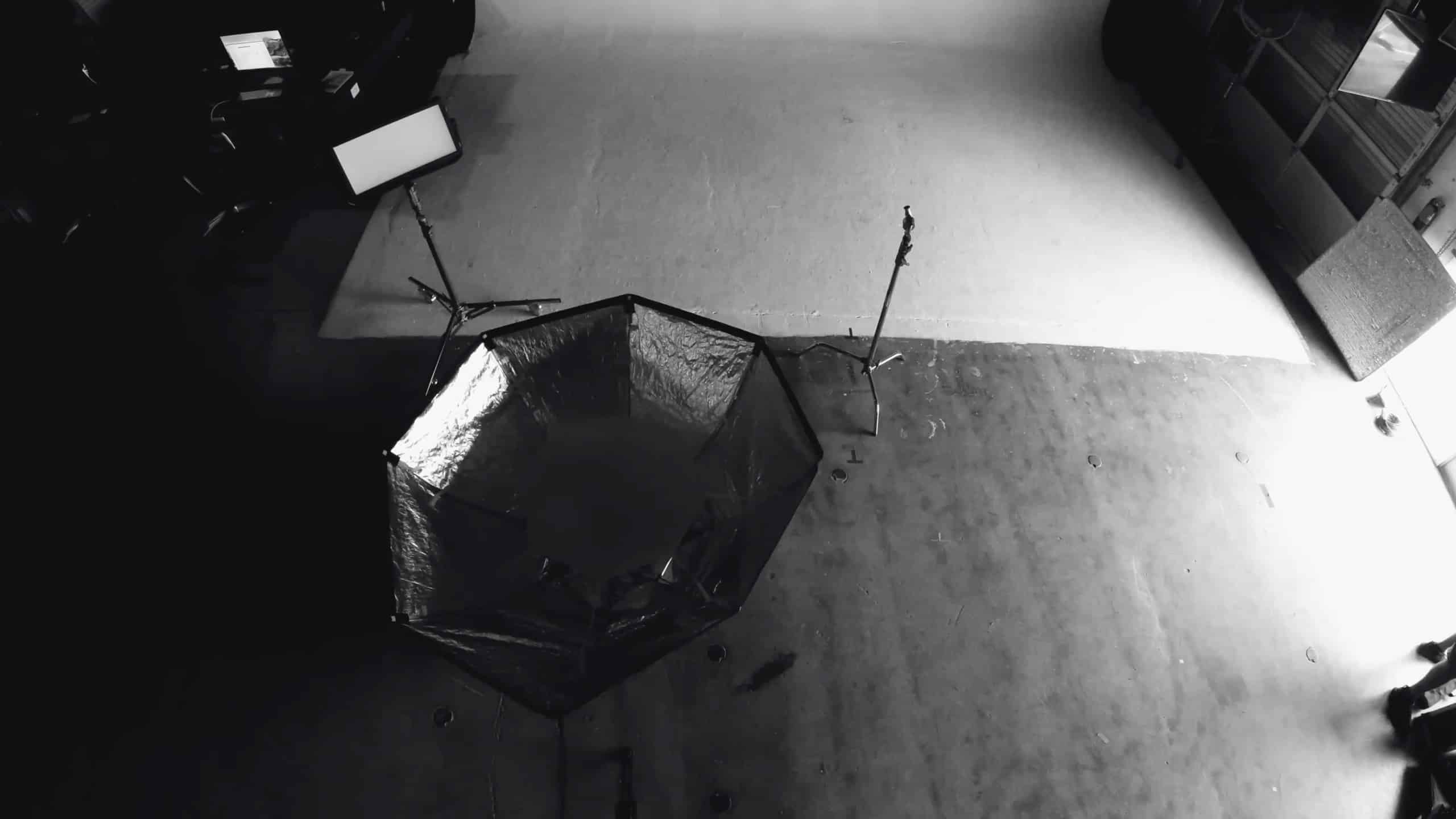
Affordable Equipment
You don’t need to purchase lots of pricey equipment to create a quality video. One alternative is to rent out equipment rather than buy it. This can be a significant saving and will let you test out various lenses and equipment. Camera equipment can be pricey.
Camera: Newer smartphones have excellent cameras. If you have an iPhone 6 (or similar Samsung) or later, that should be fine for producing your video. If you have the money to spend on equipment, you can get a good full-frame camera for under $1000 or a good DSLR for around $600. If you are doing action filming, a GoPro HERO is under $300.
Lighting: is critical. Poor lighting in your video is the hallmark of an amateur. You should be well lit, and don’t put the light behind you. There are several options for lighting. Let’s start with free. Natural lighting is always the best option, and the sun is free! Try to use as much natural lighting as possible. You can add more light with a table lamp or other light but be careful. If it is not fluorescent, it can cast an unnatural yellow tint on your video.
When you are recording, always face the light source, so it casts your face in the light. Lighting behind you will put you in silhouette. If you have some budget, you can get a lighting kit for a little as $29, and it can make a huge difference. Good lighting can make anyone look good! If you have a larger budget, invest in a ring light and light stand.
Sound: Many filmmakers say that poor sound automatically means a poor film. They’re not wrong! You may not notice good sound in a video, but you certainly will notice the poor sound. It will ruin your video and represent your brand poorly, so this is a place you may want to invest. A good microphone is well worth the investment. The audio in your smartphone should be fine if you are filming in a quiet room when there’s no chance of background noise or wind. Always run a soundcheck to pick up on any background noise you may not notice with the naked ear.
Most desktops or laptops don’t have good enough sound but check it out. If you have a small budget, you can get a lavalier microphone for your phone for around $79.00. They work great, especially if you are filming outdoors or are a few feet from the phone. You can also purchase a splitter so you can have two microphones for doing interviews. Avoid putting the microphone too close to your head. They pick up everything! Remember to take “room tone” no matter what sound equipment you use. Simply put, this means recording about a minute of background sound in whatever location you’re at. Trust us; you’ll thank us later when you’re editing everything together.
Tripod: Unless you’re going for a hand-held look, make sure to have a steady hand, or better yet, use a tripod when setting up shots. If you can’t get a tripod, place your camera on a block or stack of books to stabilize it. Tripods start as low as $10.00. A more expensive model will support more weight, like a DSLR or iPad, while the cheaper ones are designed for phones.
Tips for Looking Professional on a Budget
- If you’re not using a tripod, zoom out wide and hold it steady as possible. The wider the shot, the less obvious any movement will be. As an alternative, have your presenter up close to the camera.
- Frame it up! It’s a rookie mistake to position your head center frame. Your head should be positioned at the top of the frame. This will better fill out the screen.
- Try not to use a wall as the background. Look for something that adds depth. Try to find something that adds to the story and has layers. It’s perfectly fine to use items from your home or office as your backdrop.
- Set up a branded background to make a professional-looking video. You can use seamless backdrop paper in our brand colors to reinforce your brand.
Considering Costs
It is impossible to determine what a professional video would cost. A live-action video could range from $15,000 to 100,000, while animated videos can be more affordable. If you plan on working with a full-service video agency, you’ll need to provide them with a budget as a starting point. Get involved from the start in pre-production to help save money.
Remember, time is money. So limit the number of revisions you make by staying involved in the pre-production stage, so there are no surprises. The video company will be able to help identify opportunities to reduce the budget. A good video can be a substantial investment, but it should last long, represent your brand well, and convert better than a poor video.
Amazing Underwater Filming Secrets
Underwater filming is an art of its own. The best photographers are also going to be scuba divers and will have a love for underwater species. The light is very different underwater, and the equipment is different from still and topside and can be pricey. But for those who enjoy life under the sea, the opportunities for killer photography are many, and the rewards of seeing beautiful sea life perfectly rendered are amazing.
One of the most critical skills for shooting underwater is to be a very competent and stable diver. Control is everything. It takes experience to remain steady underwater and not scare away the fish you are trying to shoot or stir up the sand in sediment by touching it. Buoyancy control is critical and can even allow you to shoot upside down if that makes a better shot.
Knowing What and Where to Shoot
Some species are very tough to film. None are particularly easy! So bring your patience. Great places to shoot are in national parks, wildlife preserves, or marine preserves. Beware as they are often protected areas and will require a permit to shoot. You’ll also need insurance for some of these areas.
There are many subjects to shoot in nature in Caribbean waters. Get a boat, or hook up with a commercial dive operator. Remember that some species’ behavior is seasonal, like shark mating or whale migration, so do your homework.
Special Challenges of Underwater Filming
Shooting above the water is very different from shooting underwater. Forget what you know when you go below the waterline! Think carefully about your ISO. Never assume it will be dark. Telephoto lenses will not work in underwater filming. You’ll be shooting through the thick medium of water and have light absorption, color absorption, and color diffusion. This means that most shots will require artificial light, and often even two light sources. It’s helpful to get close to your subject since the light will not travel well.
An excellent underwater shooter will stay very close and shoot from a few inches to even 1-3 feet from your subject. This will result in the best light and color and provide the best background.
Think of shooting underwater as shooting under a vast blue filter. Use the daylight setting to apply your white balance. The water’s clarity will vary and will impact how sharp your images might be.
Your subject will bring unique challenges too. If you are trying to capture a school of fish, they often move quickly and will scatter. The larger species are more likely to glide. Fast shutter speeds are tough to master underwater, so that it will take practice. Keep your shutter speed as slow as you can.
Be Steady!
One of the most significant challenges of underwater filming is to hold still. As with all videos, you want to avoid shakiness in your shots. It may sound easy, but it is not! Any wobbles will be very distracting to your viewer. Holding the camera as close to your body as possible will help.
Alternately, you may be able to use an underwater tripod. Various styles and prices will depend upon your diving and filming style. A tripod can be handy when shooting wide-angle. It’s also cool to keep the camera on your subject and sim away. This is less intimidating to the fish and can produce some great images.
Stay on your subject longer than you think you need to. Hold for a count of 10 once your subject is in the frame, and don’t adjust your zoom. Remember, you will have some shakes and moves, so you need to get excess footage to allow for any unusable footage. You may be surprised to see that 60 seconds of footage may yield only a few usable seconds.
Change it up
Any video is more interesting if it includes a variety of shots. Mix it up with some nice steady shots, and then some taken moving. You can pan the camera by twisting at the waist as far as you can to one side. Hit record and slowly turn your body back all the way to the other side. Don’t move your entire body with your fins, as that will cause shakiness. Each kick will cause some wobble, so try to frog-kick as you pan to get a nice long shot.
The best way to follow a moving subject’s action is to keep it in frame with lots of headroom, so it looks like your subject has plenty of space to move. When you have caught enough of the action, stay still and let the subject swim out of the frame for a great end to the shot.
When you are in edit, you’ll appreciate having a great variety of shots to work with. Try to get wide, medium, and closeup shots of any subject if possible. Shoot your subjects from various angles and with different lighting. A pro tip is to take images that will help weave the story together. Think about getting shots of the divers putting on gear or entering and exiting the water, some nice wide shots of the site, lots of blue water site and diver bubbles are always great.
Shooting a wide-angle shot (scenic): Start by zooming all the way out. Keep our elbows locked and to your sides, and try to stay neutrally buoyant. Try to hold your breath to minimize shaking. If you pan a scene, do it very slowly and shoot multiple takes.
Shooting medium shots (fish pictures): First, zoom to compose your shot. Get as close to your subject as possible. If you can, set the camera on a solid object or place your elbows in the sand to steady the camera. Hold your breath to minimize shaking if you are on the ground. Press record once the camera is steady.
Shooting closeup or macro shots: Here, you will need to have lights and will want to hide from the sun. The closer you get, the stiller your camera has to be. A tiny shake can ruin your shot.
Pro Tip: Always be sure to check your footage on a larger screen if possible. You would hate to find dust in your lens obscuring your entire shoot when you view it.
Lighting is Key
Practice getting USD to your camera’s white balance function. With luck, you can leave it on “auto” but experiment.
Some lighting basics:
- A wide-angle at 45 feet or less requires a red filter and ambient light with manual light balance.
- For a wide-angle deeper than 45 feet, use lights and remove the red filter.
- For macro filming, lights on and no red filter. Always experiment for the best result as many things such as the water clarity and subject can change the results.
Shooting underwater video does not have to be intimidating. It’s usually easier than shooting still images. You can let your camera run and wait for the action to happen. The keys are to keep it in focus and steady. Your post-production is also much easier and more forgiving than with still images. Underwater video is a great way to tell your story. Have a big underwater project and need an experienced team by your side? Give us a shout; we’d be happy to help.
Tips to Drive Awareness & Grow Your Instagram Audience
Instagram reportedly has over a billion active users per month and 500 million daily Instagram stories. There are 130 million Instagram users in the US, and the average browsing time for a visitor is 53 minutes per day. Instagram is second to Facebook in terms of users, and there are now more than 25 billion business accounts on the platform. If you’re not using Instagram, you may be missing a significant opportunity to grow your brand, your audience and increase sales. Here we will explore some tips for creating memorable Instagram ads and campaigns.
Will Instagram work for my business?
Instagram is an essential platform for any sized business. An active Instagram presence and consistent posting can help build your brand awareness. Instagram also now provides for e-commerce sales via their “Shop” tab on the Instagram home dock. Customers can purchase directly from you or your shoppable posts, which let you add tags to the products shown in your photos that link to the description, pricing, and a “shop now” button that links to your online store. It is reported that 72% of Instagram users have purchased products on the platform. Whether your goal is brand building, audience building, or sales, Instagram is a platform that can work for you.
- Stories are a great way to show your audience who you are. Live stories can show behind-the-scenes peeks at your company and people, helping to build rapport and make you relatable.
- Partnering with the right influencer can give your brand a significant boost, and Instagram ads are a key to extend your reach and find new customers. You can target a lookalike audience and collect data that will help you collect data that will be usable on other platforms.
Create a Killer Instagram Campaign
The key to a killer campaign on any platform is to be very clear on your marketing goal and who your target audience is. There are several types of goals that can be met on Instagram. Every element of your campaign must be aligned and focused on a single specific and measurable goals. Your strategy may be the longer-term purpose of being on Instagram, and a campaign is a sprint that is shorter and more intense. Here are some types of Instagram marketing campaigns. There are several broad categories of campaigns that can be optimized for different goals and tactics.
- Awareness campaign – Instagram is an excellent platform for increasing your brand’s visibility with new audiences. Think about using it to showcase new products and show what is exciting and different about your brand.
- Sale or promotion – Instagram can be a powerful place to run sales or promotions with special discounts or offers for your followers. Provide a unique discount code just for your followers. Holidays and certain times of year are a great time are an excellent opportunity to run flash sales-driving pre-sales before a launch or to move seasonal inventory.
- Drive engagement – There are many ways to run contests that will support your goals. For example, if your goal is to expand your reach, the contest would ask users to tag a friend, and asking them to enter through a form will grow your email list.
- Product launch – If you’re launching a new product, create camping to build anticipation and excitement. You can show off the benefits and value of the product.
- User-Generated Content – User-generated content provides social proof that can make your product soar. You can have them showing how your product is used and what it meant to them. Create a unique hashtag to tie the campaign together. Use compelling content in other campaigns, as users love to see their content used by a brand.
Top Instagram Tips
Here are some tips to help you optimize your use of Instagram.
- Use the tools created for business users: The tools are much like those on Facebook. Insights will let you view impressions, engagement data, and a breakdown of user demographics like age, gender, location, or active hours. Use this data to perfect your Instagram campaigns and to help you target other platforms. This provides the best view of how users are interacting with your content.
- Create sponsored ads: Ads have become quite prevalent on Instagram. You can promote just one ad or multiple ads using the carousel format. You can promote beyond your audience to a similar audience to increase the reach of your ads. Use ads that are engaging to your target or use your best posts in the form of an ad. There are several forms of sponsored ads, including photos, video, carousel or dynamic ads, Stories or Stories Canvas.
- Use Instagram Stories: Instagram Stories can be very useful in lead generation. They come in a slideshow format that shows for 24 hours. A user clicks on it to view. They are displayed at the top of a user’s timeline, where a user will look first. Experiment with various formats like photo, video, live video, or Boomerangs. Use a Boomerang that plays on a loop. You can have unlimited Stories at any time.
- Develop an interactive, branded hashtag: Interactive hashtags are a great way to encourage engagement. Customers can use that tag to post their own user-generated content. Users can then search through all posts relating to your brand. Hashtags are free, and every time it is used, your brand is being exposed. Consider using your slogan or tagline if you have one.
- Think about when you are posting: Over-posting can turn off your audience and can make them unfollow you. You must post consistently so you can stay in their newsfeed. Try to post only on peak days and times. You can find this info in your analysis. Typically, Mondays and Thursdays are the best days, and Wednesdays and Sundays are the worst but check your brand’s data. Mornings from 8-9 are typically a great time to post. Use a scheduling tool to set these post times up.
- Track the metrics that matter to your brand and goals: You can only improve your campaigns when you understand their performance. Measurable results will tell you what is working and what isn’t. There are three key metrics that you should analyze. The number of followers is often considered a vanity metric. It is, but the growth rate is important. That growth rate will tell you if the content you are posting and your time you’re posting at is right for you. Next, average engagement is important. Look t the average engagement percentage of total followers and average engagement of each post to see how your page performs. Finally, look at your CTR, which will tell you how many people are clicking through to your site. The average CTR on Instagram is .94%. Work on improving this critical metric.
- Cross-promote your posts to build synergy: To get a good start on building your Instagram followers. If you are engaging through Twitter, Facebook, or even email, encourage your followers to check out your Instagram content. You can share some of your Instagram posts on the other platforms as well. Facebook owns Instagram, so Instagram, so cross-posts to Facebook do well.
- Honor and express your brand consistently: As on any social media platform, have a strategy and a brand personality. Avoid random posts. Try to show a personality that resonates with your audience. Use images, colors, and fonts tied to your brand, and avoid anything that is off-brand. You want your followers to associate certain characteristics with your brand.
Instagram is the place to go for image sharing, and you should do what you can to capture some of that vast marketing opportunity. Take advantage of the free tools, use the platform’s features, and be consistent in using Instagram to grow your audience and make sales. Not sure where you want to start with your social platforms? C&I has the expertise to get you the viewership you’re seeking. Give us a holler and let’s make you a social superstar.
Tips For Beautiful Underwater Video
Shooting underwater video is the perfect way to share your underwater world with your friends and social community. If you follow a few basics, you can bring the peace and calm and vibrant, and colorful life of the underwater world to those who will never venture underwater.
Make your underwater video engaging and entertaining by keeping it short and interesting. Your friends won’t want to watch your entire dive, trust us!. But they will love seeing the highlights and a well-edited look at the wonder of down under. For social media, a 30 to the 90-second video can be the maximum of your audience’s attention span, so keep it concise and focused and your shots well chosen and edited.
A prerequisite for good underwater filming is that you are a strong and experienced diver. Remember, you’ll be fighting with buoyancy, currents, tides, and other factors before you even begin to shoot. Maintaining stability is always one of the biggest challenges, and you’ll need some scuba skills to manage them and create a smooth and flowing video. Bring a tripod for additional stability for those macro shots.
You’ll need to bring all of your fundamental photography skills to your dive. Composition, framing, perspective, lighting, and subject all must converge to help you share your underwater experience compellingly and entertainingly. Don’t be overwhelmed trying to think about all the things! Like any new skill, underwater photography takes discipline and practice.
Learn from the best
Study other great underwater videos that appeal to you. Look at their technique and how they frame up subjects similar to the ones you’ll be shooting. If they share settings and other techniques, read them carefully and read any accompanying notes or articles. Watch the Discovery Channel and other nature shows, and watch YouTube videos in that space.
Search for underwater organizations like Mare Group, Oceana, The Ocean Conservancy, and others dedicated to marine life preservation. These organizations will help you understand and appreciate what you are shooting and may change your perspective about life under the waterline.
Preparation
Before you head out, be sure your batteries are charged and that you have plenty of memory space- bring an extra.
Give some thought to what kind of story you’ll want to tell before you hit the water. You may want to follow one animal or a couple of species of the same order or tell the story of your dive. Try to get some close shots, try to shoot upwards, and go for a little bit of movement and various images. Try panning horizontally and vertically, or flyovers of your subject. Mix up wide, medium angle, and close-ups. And keep it steady. You will get movement, so shoot extra footage to net out with the usable footage you need.
Filming
Pro-tip #1 – Always shoot more video than you think you’ll need. Memory space is cheap, and this will help you catch those unexpected and serendipitous moments and provide lots to work within the editing room. Shoot some transitional shots, too, like divers entering the water or preparing for the dive, to help bring our audience along. This pre-roll and post-roll will be super helpful.
When you are shooting the action, don’t rush. Let the fish exit the frame on their own time. Let that camera run and see what happens. Move slowly, and hold your shots as the marine life moves around you. Resist the urge to chase the action.
Try to get various shots and angles to create a video that maintains interest and adds drama. Go for long and slow shots to bring your audience in on the tranquility and flow of underwater life. Pull in close to subjects that are incredibly vivid in color. Take wide shots to establish some context for the video.
You must understand how light behaves underwater. The water absorbs color and light with distance, and you must use lighting to account for that. Using the correct filters will help bring all the colors you’re seeing to life on your video and adjust for the blue or green water. Shallow water shooting can bring plenty of natural light. Just be sure you try to keep the sun at our back unless you are going for a silhouette shot, which can also be interesting.
Lighting
Since much of the good stuff happens in deep water, you’ll need proper lighting to overcome visibility issues. Good quality wide-angle video lights will do wonders for your video.
The Sea Life
It’s a privilege to share the zen-like calm of the underwater world with its inhabitants. The more you know about your subjects and their habits, the more compelling your underwater stories will be.
Here are some favorite sea creatures of underwater filmmakers. Your subjects will, of course, depend upon your location and the time of year.
Seahorses are great sea creatures to film underwater. They live in shallow waters amidst weeds and algae, so they can be hard to spot. These little guys move by beating their dorsal fin 30 to 70 times per second.
Reef fish are a photographer’s favorite. You’ll find a great variety of these amidst the reefs and can often catch many in one frame or shot. They are a great representation of the diversity of a reef ecosystem. Keep an eye out for butterflyfish, damselfish, triggerfish, angelfish, gobies, scorpionfish, and frogfish. Reef fish are the stuff those amazing aquariums are made of.
Crab can be fun to film. You may even find them in tidal pools. The larger ones are exciting subjects in underwater videos. They can have an enormous leg span and are the largest crustaceans in the world.
An incredible dive adventure is swimming with the sea turtles. They live in the open ocean, and some of them are surprisingly fast. Be responsible when filming turtles as most species are endangered and research them before you go, so you know their habits.
Whale sharks are not as scary as they sound. They are incredibly docile and great diving partners. They look slow but are actually very fast and make for fantastic video footage. Try slowing it down in edit and adding some calm music.
Octopi like to hide from you behind the rocks but are extremely photogenic for your underwater video. They are graceful and mesmerizing, but take care- some are poisonous.
Editing
In post-production, edit carefully. Try to stitch together a story. Group together with the shots you want to keep and start building your story. Keep it concise with smooth transitions, some context establishing wide shots, some macro detail, and some cutaways to end the story. Let the marine life set its pace and make its exit from the frames. Don’t forget some sots of empty blue water or diver bubbles. They work great in the credits section!
Don’t forget to take advantage of effects like music, titles, and fade-ins and fade-outs. They will all bring professionalism and interest to your video. If you’re stuck for music, check out YouTube’s audio library for free downloads.
Creating underwater videos can be fascinating and rewarding. Take your time and practice. Learn from the best. And start sharing your underwater adventures with your friends and community.
How To Run a Successful Connected TV Campaign
Running a Successful Connected TV (CTV) Campaign
If you have not integrated connected TV (or CTV) into your marketing mix, you are behind the power curve. Connected TV is taken over the digital advertising world and shows no signs of slowing up. It is expected that by 2022 over 204.1 million viewers will be watching connected TV programming.
CTV is any TV that can be connected to the internet and can stream digital content at the viewer’s convenience. CTV can be viewed as a subset of over-the-top (OTT), which includes applications and services that don’t require subscriptions to traditional pay-TV or cable services.
TV advertising is great for telling a longer story more visually. Think of CTV as an extension of that, in that you are showing the ad to a highly targeted audience group. And, format matters. They see your message on a full-size screen in a comfortable and familiar environment. Why would you not use CTV?
- Why you need CTV in your marketing mix nowHere are our top reasons that you should!
Affordability
Connected TV is the screen where the most digital impressions are shown- even surpassing mobile. A CTV ad can be purchased at a much more reasonable price per CPM, and as you take advantage of targeting insight, it becomes more and more efficient.
Exceptional Targeting Capabilities
Extraordinary targeting abilities provide better audience efficiency and reduce media waster and the worry of reaching irrelevant viewers and households. Some examples of targeting capabilities:
- 1-st party audiences such as visitors to your home page or past purchasers.
- Lookalike audiences to target households that look just like your most valuable customers.
- Segments to target households on traits like age, gender income, kids, vacationers, or shopping intent.
Retargeting
In addition to great targeting for your prospecting campaigns, you can step it up a notch. CTV allows for high;y relevant retargeting campaigns. A viewer sees your CTV ad on TV at home. You can then retarget them across their other devices, such as laptops, to present a tremendous cross-device approach that follows and facilitates the buyer journey.
Real-time measurement
How many times have you seen the analysis of a campaign only after it is completed? You may wait weeks or months- when there is nothing to be done about the results. CTV allows you to track and measure digital metrics, video completion rates, and offline impact like store traffic. This will enable you to adjust and optimize as you go.
Holistic Campaigns
CTV can be very effective on outs own, but you can take it to a new level when you integrate it into a full media mix. To capture your audience wherever they are online, leverage your native display and video with your CTV for a homerun. IT is reported that over 70% of adults browse their phone or tablet while watching TV.
Catching them in this second screen behavior is meeting them where they are. Remember, the TV screen is non-click. Let’s move them over to an actionable device.
Brand Building
You may not be at Super Bowl level of ad spend, but you can get that brand enhancement by making yourself present in the viewing experience. Get your highly viewable, non-skippable ads in from of your engaged audience, and you’ll see the best ad performance of your life.
Best practices to take your CTV advertising up a notch.
CTV continues to evolve and grow, and many agencies and pros are struggling to create the next best strategy. Here are three strategies that we are seeing on the net and seem to be irrefutable.
- We live in sensory overload. There is no doubt. The minute a show ends, the viewer is scanning his phone or laptop. Our goal as advertisers to get our message heard. This calls for a blended CTV/ Connected TV approach with other supporting ad channels in a carefully thought out way. We best do this by leveraging multiple platforms and devices but avoiding the heavy-handedness of being too intrusive. The timing must be perfect, and the messaging must be nuanced and remain relevant to the buyer’s journey. We want to be subtle and seem fluid, like a sequential story being told. Being spammy or too repetitive will not yield the success we want.
- Be studied about the timing and pacing of your campaign. Again, start at the beginning. What metric are we chasing, and what do we want to spend to get there? For this, we test, test, and test some more. We use intuition and common sense to think about dinner time, drive time, etc. Use what you know about your customers and their behaviors. Equally important as the time of day is pacing. Make it smooth, and space it out to avoid breaking the back only a few days into the campaign. Start slowly and only increase your spending when you have the data to convince you to do so. Set some intermediary points to evaluate the campaign, the spend, and the timing.
- Don’t overlook the value of a lookalike audience. We all know what declining attention spans mean. Even the hottest and stickiest ad will fatigue when running against the same audience. Use the data you’ve gleaned from your campaign’s success and construct a lookalike campaign to replicate your success with the first group and expand your reach.
Turning viewers into customers
IF you are ready to get real measurable ROI from your TV ads, you need CTV. Marketers can focus their ads on audiences they know will connect with their messaging. They can track site visits, conversions, and other critical metrics directly back to CTV the campaign.
CTV campaigns are perfect for driving site visits and conversions. The combination of ads across various channels makes the message stick and feel authentic. Your message is kept top of mind across and multiple devices, platforms. A winning combination of CTV and display ads will drive the brand familiarity and trust that translates into conversions.
Measurement of CTV
Proper measurement of your CTV campaign will quickly show its value over linear TV when done correctly.
Here are some do’s and don’t for beginners.
- Start by remembering that you can not measure CTV in the same way linear TV is measured. Linear TV measurement is abstract and does not provide statistical modeling. We are working with best guesses.
- CTV functions as a simple digital programmatic ad but with a commercial vs. a banner ad. It uses a digital measure that offers precise details.
- Finally, the expectations must be to view the whole customer journey, track conversions and activity in 3rd part analytics solutions.
Correct CTV measurement releases a leave of insight that is not available with linear TV. You’ll know how many people saw the ads, how many watched the complete ad, and how many dropped out before the ad finished.
More tracking kicks in after the ad runs. We then can drill into other channels, paid search, social performance other devices visited. Ongoing monitoring of the site reveals visitors originating from the campaign and follows through with actual performance and sales activity. Attribution is key and a big part of the puzzle when understanding the powerhouse that CTV is part of your total marketing mix.
3 Keys to Successful CTV Advertising
Executing a successful CTV campaign has many more moving parts than a traditional TV, but the rewards are many! Day parts sell traditional or linear TV. In contrast, OTT or CTV is usually sold on an addressable basis, meaning you’re buying specific factors like demos, interest, or previous purchase behavior.
- That decision of what you want your audience to look like is critical. Before making any decisions, you’ll need to drill down on the goals for this specific campaign. Are you building the brand, introducing a new product, or targeting an increase in sales or site visits. You must define this very clearly.
- The next step is to evaluate the digital platforms available to you. You will probably build your audience platform by platform as each has strengths in various places of the customer journey. Give though also to incremental reach or viewers that your current ad spend is not getting to.
- Finally, context matters. Make sure your ads are running around programming that is high quality and relevant to your audience.
Why Agencies Are Adding Connected TV To Their 2021 Marketing Mix
By the end of 2020, more than 30% of households in the United States were streaming video content through Connected TV or CTV. That figure exceeds the number of cable TV subscribers by several million. According to a Nielsen report, total streaming TV time has increased 74 % among viewers since last year.
The study also revealed that 25 % of adults have subscriptions to multiple video streaming services. Current projections show that this trend is expected to continue with no end in sight as the number of video streaming services increases. As a result, media buyers are now allocating ad dollars once intended for linear television to CTV; the latest delivery vehicle in the realm of digital advertising.
Making The Marketing Spend Economical and Effective
Digital marketers are following their example, with more and more of them reconfiguring budgets to accommodate more CTV channel advertising than other digital platforms. To stay relevant to consumers, brands are rapidly adapting to this new shift in the media landscape.
The need to remain flexible to maximize this latest form of advertising, is motivating advertisers to readjust their marketing strategies completely. Savvy marketers who have seen new media outlets emerge, realize that it’s only a matter of time before CTV becomes the dominant platform on which to advertise as we move further into a digital world.
Marketers across all product categories are incorporating CTV into their marketing plans due to its hyper-targeting ability, A/B testing capability, the potential for personalization, and the same measurability of metrics as found on Facebook, Instagram, or YouTube.
Connected TV: Smart TVs And Smarter Target Audiences
The surge in CTV digital advertising results from the rising ubiquity of smart televisions with internet connectivity in American homes. While this trend was already clearly visible as smart televisions quickly became more and more affordable, the COVID-19 pandemic and the resulting quarantines forced the entire country to rely on their televisions or computers for entertainment.
Consequently, the number of smart TVs purchased and subscriptions to streaming services like Netflix, Hulu, and Amazon Prime Video has skyrocketed. Marketers have seen the writing on the wall and realize that CTV advertising is not only here to stay but will most likely become one of the dominant methods of marketing and promotion.
The growing popularity of CTV advertising can be attributed to several factors. First, media buyers love the bang for the ad buck they can get due to CTV being a fraction of the cost of buying time on broadcast and even cable TV.
CTV advertising becomes even more appealing from a marketing budget standpoint because pre-existing creative assets used on other platforms can be repurposed. Spending becomes more strategic and less of a gamble than linear television and traditional cable.
Next, the ability to target specific audiences and, to a certain extent, personalize ads means brands can create digital video advertising messages that are more likely to resonate and leave an impression on viewers.
Finally, the testing and precise measuring capabilities of CTV advertising allow marketers to track results in real-time as consumers move through the marketing funnel.
Anyone who streams their visual content from the internet can be targeted according to several criteria. Brands can target consumers based on their demographics, location, interests, in-market cues, or buying behaviors. With first-party data, brands can target current customers to increase loyalty or attract new customers.
It doesn’t matter which streaming service they use, which platform, which device they’re using, or when. As with other digital media platforms, by strategically applying data, advertisers can connect with the consumers they wish to target whenever and wherever they are watching.
With the data-driven targeting of CTV, personalization of messaging to the consumer and tracking their customer journey has never been easier. This applies to repeat customers, first-time buyers, or prospects considering whether or not to transact.
Any marketing plan which includes CTV, like all digital channels, is sure to provide invaluable data and unique, actionable insights into customer behavior along with measurable results. CTV allows for data collection across the entire funnel since it offers the targeting and measurement capabilities identical or, in some cases, superior to comparable media channels.
Advertisers have quickly recognized that CTV advertising offers the unique benefits previously mentioned, plus the ability to identify someone who has viewed their ad on other platforms.
This allows for the retargeting of those customers across multiple devices. Different ways to measure the impressions generated by CTV include: using QR codes, foot traffic studies, brand life studies, and search demand lift studies, to name a few.
CTV enables brands to adjust their marketing strategy during the campaign using real-time creative performance measurement data. When integrated into a cross-channel marketing plan, CTV, with its audience-first angle, is a powerful complement to campaigns on other media delivery platforms.
Since CTV advertising seamlessly integrates with other digital programs, including social media efforts, it can supply an advertiser with data to define a brand’s entire media mix. CTV can be woven into a brand’s social campaign using the same creative across multiple devices.
This type of cross-device targeting is rapidly becoming standard practice as consumers now own numerous connected devices in addition to their smartphones and connected televisions. With access to key insights like the video completion rate and ad exposures that lead to transactions, CTV advertising can provide brands with user intelligence more definitively and precisely than linear TV ever could.
CTV viewing is expected to increase with additional content providers delivering their programming via streaming platform services based upon current trends. Furthermore, traditional TV advertising is on the wane as consumers continue to cut the cord in favor of streaming their entertainment.
As the technology develops and SMART TVs become even more sophisticated and video advertising becomes more personalized, the shift to CTV devices as the sole source of viewing content will accelerate. Marketing agencies have been waiting for the chance to focus their strategy while staying agile enough to capitalize on new opportunities among their target audience.
Much to their delight (and that of their advertiser clients), it has finally arrived as video streaming platforms become the next step in the evolution of digital video entertainment.
How Do Connected TV Video Ads Differ From Traditional Ads?
There has been a significant change in the past ten years in how we consume TV and entertainment. Millions of households have abandoned traditional TV watching due to the wide use of internet-powered television, or Smart TV. The programing continues to expand and improve, giving the consumer tons of affordable options to choose the type of content they prefer and when and how they want to watch it. They can stream on the big set in the living room or watch it privately on their tablet or over their phone. The options are many!
This means smart marketers have to adapt and transition to being where the viewers are. Connected TV video ads or CTV ads are a part of just about any good marketing mix today. It is challenging for traditional ads to keep pace with streaming technology, and OTT is beginning to outperform the conventional.
What are CTV or connected TV Video Ads?
Connected TVs (or CTVs) are simply televisions that have access to the internet and can load or stream digital content. A Smart TV has an internet connection built-in, and standard TVs can be connected using smart devices like Roku, Xbox, or Playstation. The content that streams are usually video streaming via apps that have been downloaded. The content may also come from Amazon Fire TV, Apple TV, or Chromecast.
What is OTT (Over the top)?
Over the top (or OTT) is the video content shared, while CTV is the internet-connected TV. OTT stands for “over the top,” meaning the top of the “box.” It refers to video content that is accessed via the internet and not via traditional cable or satellite. Some examples of OTT providers would be Netflix, Disney+, or Peacock.
OTT (Over the top) vs. CTV (Connected TV) – What’s the difference?
Many people use these terms interchangeably, but CTV is the method for delivering the content, or the device, while OTT is the actual content being viewed via CTV. Most OTT content is viewed via CTV.
What is programmatic advertising?
Programmatic advertising is the use of software to buy distal advertising. It used artificial intelligence and algorithms to purchase display space. An advertiser would not be able to efficiently choose each channel, site, and app for ad placement. So space is bought through DSPs or Demand Side Platforms that have partnerships across many sites. They use automation and artificial intelligence to bid, buy and place media efficiently. Google display ads work similarly. Google reached up to 70% of all sites out there through their network.
OTT advertising vs. traditional cable or satellite advertising- what’ the difference?
Every marketer struggles with where their ad spends will work best for them. Video consumption is steeply rising, and we want to get our ads in front of those viewers, right? But how do we best achieve that? Marketers have relied on TV for many years, but with the shift in viewership to online-connected devices, programmatic OTT ads are now taking over.
Traditional TV can be thought of as more of a shotgun approach. The stations have spots, and the advertisers buy and fill them, getting in front of whoever is watching and then hoping for the best.
OTT ads have emerged as an option that is more efficient and focused and a much more measurable way to get in front of your audience. OTT ads offer lots more controls to ensure the messaging is airing at the optimum times for your ideal customer. Data collection provides detailed demographics, info on relevant audience segments, are in specific consumer interest categories. The ads can even be placed based on real-time bidding to get to the target audience at the right time.
All of this technology means the brand can better control targeting, spend, timing and performance. Remember, traditional TV is shown to anyone who flips on the TV. Targeting is limited to gender, location, and age. With programmatic OTT advertising, every impression is served up to relevant audience segments. We are talking about a laser-focused campaign.
CTV viewers are more engaged in the content they view and usually can’t fast forward through the ads. That’s a good thing. But also, it is a responsibility to produce appropriate and engaging advertising. From a cost perspective, CTV advertising helps reach audiences efficiently and at a much lower cost than traditional advertising.
CTV ads are viewed all the way through, with an average completion rate of 98%. They run full screen, meaning no “below the fold ” issues that other digital opportunities may present. You can also retarget your OTT and CTV viewers across multiple devices, including laptops, tablets, and mobile phones. This keeps your message top of mind through the decision-making process.
How does OTT targeting work? Personalization comes from “listening” to cues and sending messages to our segment, income range, zip code, ethnicity, and education level. They will also target interest categories, which is enormous for a marketer. They can target our ideal “avatar” or “persona,” bringing a level and targeting and efficiency previously unknown.
Tracking Capabilities
Every marketer knows that tracker is everything. This sort of campaign “post-mortem” will ensure your future targeting and campaigns continue to build on learning and improvement. Some of the key metrics measured are video completion rate, the device’s performance, how consumers interact, and ad placement performance across various platforms.
Sales or online engagement is an opportunity to drill down on the tracking to see what influenced the action taken and what calls-to-action were most effective.
Some core metrics:
- Video completion rate
- Clicks from ad to the website
- Ad delivery by device
- Performance by the time of day
- Performance by specific days
- Ad viewer demographics.
Content
OTT advertising is consumer-focused so that when a viewer logs into their favorite service, it is more intentional. They have chosen that platform at that time and will be more receptive to an ad. And the ads are not skippable. (This puts the burden on the marketer to make it good!) Your content must be designed for the consumer you’ve targeted, meet their personal needs, and give them an experience that feels personal and tailored for them. A random traditional TV ad can never approach this level of focus and targeting.
What is the future of traditional ad serving?
OTT subscriptions and CTV ownership continue to grow exponentially, creating a huge opportunity for marketers to reach ultra-targeted audiences across multiple devices.
Some people have even given up traditional TV watching for all internet TV.
In 2020, 80% of homes (or about 96 million Americans) had at least one connected TV. Americans are reported to spend more than an hour daily engaged with OTT content.
Many believe we will see the “sunset” of traditional TV advertising in the coming years. CTV is the future of video advertising, and like Netflix, Amazon, and the other big guys produce more popular shows, more and more people are opting for the convenience of CTV. Millennials love CTV, and it is getting hard to target them on traditional TV or elsewhere.
While conventional TV may have the ability to deliver enormous reach, CTV ads seem to be delivering the targeting and the performance. There is no doubt that OTT advertising belongs in the mix of every serious marketer.
Follow the Customer! Successful Cross-device CTV Marketing
Leaders in the digital marketing field are building their cross-device marketing capabilities to take your audience targeting to a new level. Their focus is on intelligently connecting brands with their target audiences via connected TV (CTV) and other devices. This cross-device marketing enhances brands’ ability to reach their customers across desktop, tablet, mobile, and CTV devices.
Cross-device marketing takes advantage of the many methods of device identification per person available and allows for real-time analytics and targeting that lets brands optimize their ad spend and target the right viewers on the right devices. This gives the viewer a holistic experience and increases the impact across multiple devices. Retargeting across different devices for a viewer can lead to more conversions.
Clients seeing CTV ads and getting to your site on different devices
CTV advertising is at the center of cross-device marketing. According to a Facebook study, 94% of TV-watchers have their smartphone in hand as they watch TV! The power to drive the first impression through a connected TV, then retargeting the user via a separate device, is enormous. Traditional TV advertising has the goal of getting in front of as many eyeballs as possible and hoping for results. It’s almost impossible to measure results and adjust in real-time. Your campaign is often completed before changes can be made.
CTV, along with retargeting is far more interactive, real-time, and A/B testable. You can follow the customer’s user journey with cross-device tracking, perhaps moving from CTV to laptop to a mobile device. You are meeting them where they are on their journey. A 2020 survey reports that an average American has access to more than ten connected devices in their household. Accurate, real-time cross-device marketing is vital!
What data points are used for cross-device marketing?
Remember, buyers are not able to convert on your TV. So tracking them from when they see your ad to when they convert on your site is critical. The two main strategies for collecting data across multiple devices and tying them to an individual are probabilistic data and deterministic data.
Probabilistic data uses anonymous data points ranging from page visits to time of day and operating system used. This is complex but scalable. Deterministic data is collected based on login info for IDs, websites, and apps that link various devices. This would include logins for Hulu, Gmail, Netflix, Spotify, and more! So can we get the right message to the right person at the right time on the right device? Yes. Connected TV is at the heart of the strategy. Someone watching your CTV ads can be retarte4ed right after on one of their other devices. This takes the viewer from an unactionable CTV ad to relevant messaging on another device. You are now driving a curated experience that is moving the view along the customer journey.
The point of advertising is to get your potential buyer interested and engaged, and then encourage them to take the action you are promoting- buy, fill out a survey, visit a site, etc. The best way to promote this is by meeting your buyer where he is on the journey. Track and target specific behaviors across devices.
Cross-device tracking bridges the gap between CTV advertising and the retargeting that happens on another device. The tracking only retargets those who fully engaged with the TV ad, making it super-efficient.
Cross-device tracking allows us to see a person who cycles miles per week because they log it on their smartphone. Geographic info comes into play for the local businesses. Demographics and technographic-like internet speed all come into play. And now you have a hyper-targeted campaign.
Using data to increase sales
CTV ads are not clickable, but the ads are designed to create interest. Then cross-device marketing takes over to get your viewer to click, purchase, or take other action that you want him to take. You encourage this action by meeting him where he is on the customer journey. You are now serving up a curated and guided customer experience.
Optimum targeting with CTV ads
People don’t like to feel targeted, so your cross-device marketing should be subtle and not heavy-handed. Nuance is everything. CTV allows for a “smart” approach to targeting and provides the platform for optimizing your campaign. Total viewing time on connected TV jumped 81% last year, with millions of shoppers in front of streaming TV at any time. Ad-supported TV is getting a big piece of that viewership. Research says that 73% of streaming viewers watch ad-supported CTV content and 45% of streaming viewers watch ad-supported CTV the most. CTV allows for direct-response performance and tying specific goals to the ad spend.
Connected TV is excellent for putting your brand before new audiences and reconnecting with site visitors. Target your non-purchasers with a more aggressive offer to lure them back. Although viewers can watch CTV on mobile or desktop devices, the majority watch it on TV. Close to 90% use a second device while watching TV, making a solution that targets the TV screen important.
Serving CTV ads to screens on networks like Hulu or ESPN makes sure you deliver a great experience.
Most agencies track site visits following a completed ad view in a defined window of time. This is integrated into Google Analytics, letting you measure all the key metrics.
Example:
- Your viewer watched an ad on CTV.
- The user visits your site on his laptop within our defined window.
- The user converts on the laptop.
- You now know that sales can be attributed to the ad and can manage your campaigns accordingly.
Tracking and attribution
Tracking conversions driven by your advertising is essential. This means following the customer journey across devices and acquiring accurate, cross-device measurements. User visits from CTV campaigns are integrated into third-party solutions like Google Analytics.
Cross-device marketing will facilitate “smart” marketing and help you optimize your spending. You can reach a broad audience through CTV advertising and yet, still have control over your advertising by purchasing by impression, which is targeted and personalized. You can set frequency caps, which limit the number of times a viewer sees your message to reduce waste and get you more out of every CTV dollar.
You are also moving the customer along the buyer journey as you home the messaging and move him from a non-actionable platform to a purchase or action on a clickable device.
Cross-screen marketing can be a more significant investment than traditional, but the quality of the data is usually good enough to by far outweigh the cost. The real-time monitoring and post-campaign analysis provide valuable customer insights and a level of engagement that traditional advertising will never approach.
Get ready to immerse and engage your audience and bring your conversions to a new high. CTV and cross-device marketing is here to stay and should be included in your marketing mix.
5 Digital Video Best Practices in 2021
In 2021, advertising with video online is king. You can stream video ads almost anywhere, including company websites. There is educational video, mobile video, video carousel ads, interactive video, explainer video, etc. The digital video inventory gets bigger every year, and the average video ad spend does too.
Marketers should consider best practices for the entire lifecycle of a video ad campaign. The Creative, Storytelling, Production and Distribution of digital video ads have best practices that take an idea and turn it into a dazzling video that exceeds client and ROI expectations.
Creative Best Practices
- Align your stakeholders: Digital video is booming but hypercompetitive. Innovative ways to stand out and the machinations of the primary digital video advertising platforms continue to develop. Whether a brand is making one video or saturating the waves, a new level of marketing expertise is required to guide stakeholders through the many options they have. One size does not fit all. Each channel has its language and culture, and the most effective video ads are customized to thrive in each specific environment. Align your stakeholders on a creative video strategy.
- Know your target audiences: Never before has the personalization of ad campaigns been so easy. Traditional demographic data along with real-time online analytics allow marketers to know their prospects better than their mothers. Each audience responds to a different creative approach.
- Hold well-managed brainstorming sessions: Assemble your top creative talent, put them in a room (or Zoom, if you must), and hold inclusive, open, and documented brainstorming meetings that are a free-flow exchange of ideas.
- Write an alluring logline and synopsis: The material goal of your brainstorming sessions should be to produce a pitch sheet with a great logline and detailed synopsis of the story your video tells. The logline and synopsis are the foundation of the following two stages – Storytelling and Production.
- Conduct due diligence on how to create a real-world video production budget: At the end of the Creative stage, make a production budget. You and your production partners will revise the initial budget multiple times as the video campaign progresses. Familiarize yourself with the equipment and language of scriptwriting, video production, and, to the most significant degree possible, the tricks of the trade to keep your project budget from spinning out of control. If you hire a video production company, they will have their budget to reconcile with yours.
Video Storytelling Best Practices
- Hire professional writers: To maximize the success of your video, partner with people whose expertise is words. Many people listen to video ads without watching them, so every word counts. Prospects should be able to understand your product and brand message even if they’re listening to it from the next room. The screenwriter and the production crew speak a common language.
- Use the “Rule of Three” to tell the hero’s journey: Your hero is your customer. Tell their story in three acts: The Separation (beginning), Initiation (middle), and Return (end). The brand is the guide that helps the hero “Slay the Monster” or accompanies them on “The Quest.”
- Create “silent” visual stories: Many people watch videos without sound. Your video storytelling should be easy to understand with no sound and have an emotional impact without voices and music, both accelerators of engagement. The video content should stand on its own.
- Hook the viewer early: In the case of a digital video ad, hook the viewer in the first five seconds. We’ve all waited impatiently to click past an ad after a five-second countdown to get to the main content. Not every ad has a countdown clock, but marketers should proceed as if they are. A Facebook analysis of video marketing shows an almost 25% increase in brand awareness retention in videos that feature the brand in the first five seconds. Even if the viewer skips the ad, it still has enormous power.
- 30-second videos are the sweet spot: Once again, each advertising channel is different, but digital video ads that are 30 seconds or less are the most effective and have the highest completion rate as a general rule. Yes, videos of other lengths are important, and some have greater engagement on specific platforms, but 30-second video ads are the most popular.
Video Production Best Practices
- Hire a professional video production company: Video production is like getting your arm caught in a threshing machine. A video campaign can end in ruin if the quality of the ad doesn’t meet audience satisfaction. In addition, advancements in technology allow production professionals to create more for less money.
- Listen to the pros: Video directors, editors, production designers, and other above-the-line talent are professional visual storytellers and know how to convert your 30-second script into an eye-grabbing brand bonanza.
- Make sure your video has professional high-quality pictures and sound that is in sync with the video: Shooting video and syncing it with audio is complex, and many video productions end in disaster because the content lacks technical proficiency. Your target audiences may tune out if a viewer hears background noise or air conditioner noise instead of the brand’s advertising objective.
- The higher the shooting ratio, the better: The shooting ratio is the amount of video footage you shoot vs. the amount you use. Your video ad will be many ads cut from the same footage, or, if you have a large budget, multiple ads cut into many versions. Strive to have as high of a shooting ratio as your budget, time, and talent allows. Give editors as many hours of video as possible to assemble an unforgettable brand message.
- Almost anything can happen in an editing room: Once your footage is “in the can”, the creative process begins again. Yes, the editors cut and splice to client expectations, but as professional storytellers they can produce brand new spots not previously conceived, solve technical failures that may have occurred during shooting, and are masters of accommodating last minute client changes and additions. “Fix it in the editing room” is an expression for a reason.
Digital Video Distribution Best Practices
- Hook the viewer with more than the story: You want your video’s story to hook the viewer in the first five seconds. Bolster those chances and enhance the user experience and increase retention by adding product photos, brand logos, other eye-catching graphics, and captions.
- Optimize your video’s length and format for whichever social media platform on which it will/ run: All of the social media networks have different, ever-evolving technical specifications and algorithms. Analysis of video ads proves video ad formats, and other video ad specs impact the success of an online video. It takes extra effort to customize video advertising campaigns but your average conversion rate increases when video content fits with the channel and its regular users.
- Mobile video ads are different: Keep in mind that a social network’s technical specifications may differ between “desktop” and “mobile/tablet” versions. Users’ viewing patterns vary as well. Mobile users have an average attention span that is short, so they respond to shorter videos. Most mobile users prefer vertical videos to landscape videos. While “mobile-first” ad spending is not as dedicated as overall video ad spends, mobile use and mobile-preferred user-generated video content platforms like TikTok are rising. Knowledge of the mobile ad space is critical to leverage video’s power entirely.
- Test, Test, Test! Digital advertising platforms such as Google AdWords allow you to place different types and lengths of video ads on multiple platforms/sites. After a test run, analytics provided by the advertising platforms show which ads perform the best and on which channels. Marketers can adjust campaigns to maximize ROI.
- Get the data: The most nerve-wracking part of any ad campaign is waiting to get the data that will tell you whether or not you’ve struck gold or struck out. Not only can you test your ads as described above, but the volume and depth of online analytics guarantee that no guesswork will be necessary to determine success or not. Get the data. Analyze it. Synthesize it. Then make course corrections as necessary.
The Cost of Producing TV Ads vs. Digital Video Ads
Your brand should be engaged in an ongoing conversation with your marketing team or agency about the advantages and disadvantages of traditional television advertising vs. digital advertising.
Cost, which is the focus of this article, is only one factor to consider when developing a marketing strategy. Brands with the resources may pursue a marketing mix that includes TV ads and digital video ads. Whatever the circumstances, the cost differential between TV and digital is easy to calculate.
Television Commercial Advertising
The cost of advertising on television is immense. Traditional television commercials cost much more to produce and air than digital video. TV’s three main expenses are 1) scriptwriting and development – hiring a screenwriter to write the script, 2) production – the making of the ad, and 3) airtime – the distribution of the ad.
Ancillary costs include time and effort developing the brand’s message and other miscellaneous expenses related to commercial advertising before production.
Production Costs
The production cost is flexible. Regardless of the budget, a reputable commercial production company should create dynamic television ads with high production value. “Production value” is the art of making professional-level content with limited resources.
- A great writer and production team can turn $1,000 into compelling content with a bit of creative brainstorming. However, if your commercial production goes full of “Hollywood magic,” it will run into hundreds of thousands of dollars. Stock footage costs a lot less than special effects. A celebrity spokesperson costs more than the hourly rate for a voice-over actor/actress. Those are just two small creative decisions that impact your budget and production value.
- Production costs are spent in three stages: pre-production, production, and post-production. Pre-production is the creative and administrative work on a commercial before the first day of principal photography. Production is “the shoot,” which should only be as long as needed to get the footage “in the can.” Post-production is the picture and sound editing, voice-over, special effects, motion graphics, music, and the like.
- The bulk of your budget is spent during production, and the most expensive part of production is the above-the-line talent. Above-the-line talent includes writers, actors/actresses, directors, cinematographers, and editors. Below-the-line talent is crew and operators (e.g., camera operators, mic operators, crane operators, etc.
- Depending on the state in which production occurs, TV commercial shoots may require a union cast and crew. If your production is union, your costs are more than if you are in a right-to-work state.
- Commercials run in 15-second, 30-second, or 1-minute timeframes, which may seem to provide the producer-director-editor with options that may reduce the cost. It seems logical that a 15-second spot costs less than a 1-minute spot. It does not. The shooting ratio, or the ratio of footage shot vs. footage used, should be high enough to edit into a 1-minute spot and subsequently into 15-second and 30-second versions, all of which run at different times on different channels.
- Your production costs also vary according to a brand’s ad strategy. A single commercial, even three versions, is less expensive than multiple commercials that have different scripts and messages. However, the overall cost of numerous commercials can be mitigated by simultaneously shooting footage for the various commercials using the same production team and crew.
Distribution Costs
TV commercials are distributed on local, national, or cable television stations. The marketing real estate is called “airtime” and can vary in cost. Factors that influence air time prices are:
- Media market (national vs. local).
- Size of the audience (broad vs. targeted).
- Time of day (day time vs. prime time vs. late night).
- Day (week vs. weekend).
- Nielsen ratings (popular shows vs. less popular shows).
- Length (15-second, 30-second, 1 minute).
- Repetitive broadcasting (length and frequency an ad airs).
- Availability (In 2019, the average ad time per hour of primetime national TV on five major cable network groups was 14.32 minutes – 17.49 minutes).
For example, a 1-minute national commercial that airs multiple times during “prime time” on a network’s peak day and the most popular show may cost millions of dollars. Still, a 30-second commercial that airs late at night on a local niche cable channel and targets a specific demographic or zip code can be economical.
A savvy ad buyer knows America’s 210 media markets and broadcast stations. He or she buys air time in the right market at the right time to reach the audience with the highest probability to connect with a brand and buy its product.
With the one legendary exception of Apple’s “1984” commercial during the 1984 Super Bowl, commercials are not produced to air once. Advertising packages that may include multiple air times, days, channels, lengths, and duration.
- The average cost of airing a national TV commercial: $115,000. (Statista)
- The average cost of airing a local TV commercial: $5-$10 per 1,000 views. (Skyworks Marketing)
- The average cost of airing 30-second commercials during the 2020 Super Bowl: $5-5.6 million
Digital Video Advertising
In 2016, online advertising outspent traditional television advertising for the first time, a trend that continues to this day. Marketing budgets now favor online digital channels such as YouTube, Facebook, Google, Instagram, and TikTok over TV.
Of that increase, online video advertising is the fastest-growing segment of a brand’s marketing mix. Digital video’s demonstrable ROI far outpaces other forms of digital advertising and traditional media.
Digital video is so effective and competitive that new forms of digital video advertising evolve at a rapid pace to meet demand and buck the competition. For example, “explainer” videos, which a brand can use to introduce a product and guide buyers through its setup and use.
According to Pitchy.com, the average cost for a digital marketing campaign is $4,000 – $8,000, a range which includes the content creators, social media managers, paid advertising costs on various digital platforms (e.g., Facebook Video Ads/Instagram Ads, Google AdWords, YouTube, Twitter), and data analytics.
It does not include video production costs, which can vary depending on the creative concept and budget.
A digital video goes through the same production process as a TV commercial. However, the unique nature of the world wide web has cost advantages and disadvantages. Many factors drive up digital video advertising production and distribution costs:
- Television has a finite amount of air time. Digital advertising has unlimited time and space, which can be a liability. In a crowded marketplace, it’s more challenging to stand out.
- New content must be produced and distributed on a more frequent basis.
- One size does not fit all. Social networks have their language and culture as well as their own online marketing rules and regulations. To be effective, one must develop content customized for each channel.
- Social media channels operate 24/7, and marketers must be agile and ready to tackle PR issues that may arise and affect a brand’s reputation.
A specific digital video ad campaign may be less expensive to produce and distribute, but digital video content’s life cycle and maintenance go way beyond a TV ad.
Content lives online forever, which is great for SEO but may conflict with a brand’s shifting priorities. Therefore, over time the actual cost of an “inexpensive” digital video ad may be greater than an “expensive” TV ad that runs for a limited time.
Distribution Costs
The cost of digital video ad distribution is much lower than television advertising. While the production and initial distribution costs can be the same as a TV ad, the global, in-depth reach of digital advertising gives a brand way more bang for its buck than TV.
On television, there is only so much information you can deliver in 15-seconds to 1-minute. A brand must stick to a central message and create original, memorable content to impact potential customers in a way that converts to sales or increases brand awareness, ideally both.
The success of TV advertising is beyond question if applied in today’s marketing landscape with informed media acumen. However, it will always have limitations that digital video ads do not have.
Digital video ads are also standard 15-second, 30-second, 1-minute lengths. However, unlike TV ads, they are part of a more extensive advertising web of content that works in harmony to expand reach and micro-target messaging.
A digital video ad may be more effective because it can direct viewers to a website or promote a call to action that increases the probability of a sale. A digital video can reinforce a brand’s message and connect with viewers when it runs alongside a digital still ad promoting the same product or service.
Prices on popular streaming services vary, but the examples below provide a glimpse into the pricing.
- YouTube: $10-$30 per 1,000 views. Average cost of 100,000 views is $2,000. (YouTube)
- Hulu: $20-$40 per 1,000 views. (Hulu)
Conclusion
The cost of TV ads vs. online video ads is not competitive. Though ranges vary and low-budget ad campaigns executed by professionals can be very effective regardless of medium, traditional television advertising costs are higher than digital video advertising.
Production and distribution expenses are not the entire story and should not be the sole factor a brand considers when determining what type of marketing mix provides the most significant ROI and achieves its sales goal.
Studies confirm that the most effective advertising is branded content with advanced storytelling, a strategic combination of traditional TV advertising and online digital channels.
Why Video Ads are the Future of Advertising
The future of advertising has been digital video for so long it is safe to say the future has arrived. Significant indisputable data proves the rise and dominance of digital video advertising isn’t a trend but the new cornerstone of any compelling marketing mix.
Five reasons video ads are the future of advertising:
- People like video ads.
- Reach.
- Measurable analytics.
- Options.
- Video is the perfect vehicle for emerging marketing trends.
People Like Video Ads
Online marketers know that digital video has demonstrable positive ROI because prospects engage at higher rates with video than any other medium. Video elevates the user experience. Statistics, surveys, and studies continue to validate the power of video marketing and the online digital landscape in which it lives:
- 85% of people feel more connected to a brand through video. (Renderforest)
- 69% of people prefer video over text when learning about a product or service. (SmallBizGenius)
- Video ads are the primary way prospects discover a new brand. (Renderforest)
- Online video’s global popularity continues to increase. By the end of 2021, Zenith Media predicts the average person will watch 100 minutes of online video per day. That equals twenty-five days of watching online videos. (Zenith Media)
- People watch four billion YouTube videos a day.
- 81% of people prefer video content on social media. (Renderforest)
- TikTok has 689 million active users. (DataReportal)
- Marketers’ ad spends on video have steadily increased and will continue to do so. (Wyzol)
- One-third of consumers purchase a product after seeing an effective video ad.
- Businesses reported video ads increased conversion rates by 31%, sales by 34%, website traffic by 51%, and brand awareness by 70%. (Renderforest)
The list of statistics that support video as king of the digital marketing domain could go on for another ten pages. The more ubiquitous online digital video becomes, the more it becomes a regular familiar feature of a prospect’s virtual world.
For example, it is hard to imagine an online search for a recipe that does not include an instructional video on preparing it. The recipe video is now standard, increasing a brand’s marketing real estate. For example, the brand can be The Food Network, which created and posted the video on their recipe page, or a kitchen knife company that runs a 30-second ad before the instructional video begins.
The result is a more significant number of people who see your video ad and an elevated customer experience that increases retention and brand loyalty.
Reach
The universe is infinite, and so is the world wide web.
Digital video has a reach hitherto unknown in the epic history of global communication. Like the spokes of Rome’s Via Appia stretching out to connect the furthest corners of Europe, Asia, and the Middle East, the internet has increased the number of people a message can reach in a transformative way.
Advertising channels optimized for video dominate the internet.
- A brand or business’s website.
- Video-friendly social media channels such as Facebook, Instagram, Twitter, Snapchat, and LinkedIn. A brand is likely to have a presence on multiple social media platforms, giving their videos a direct connection to their customers.
- Video creation and sharing platforms such as YouTube, Vimeo, and TikTok.
- Audio streaming platforms like Spotify and Pandora.
Other factors that increase digital video’s reach include:
- Content sharing. The digital age’s word of mouth is content sharing. When people like a video, they share it with their friends. For example, almost 1,000 videos are shared on Twitter every day. That costs the brand $0. Each time a video is shared, the ad’s ROI increases.
- Mobile advertising. People watch more videos on their phones than anywhere else, including tablets. Video ads optimized for smartphones create another opportunity for brands to reach their target audience. Nationwide 5G networks will accelerate mobile use.
- Email marketing videos. Direct email marketing is an effective way to connect with customers and drive action. The introduction of video into email marketing is new. However, 44% of people surveyed responded that they would view a video ad included in an email.
- Hyperlinked video ads. Hyperlinking video ads to post-click landing pages gives marketers a boomerang effect. The digital ad pushes across multiple online marketing channels. Still, with one click, the brand can direct prospects to a personalized web page designed to convert views/clicks to sales or some other desired action.
- Search Engine Optimization. The algorithms used by the major search engines favor video. A business website that includes video has a higher search ranking and leads potential customers to spend more time on their website. Win-win.
Measurable Analytics
In 1946, The Ford Motor Company hired ten World War II Air Force veterans called The Whiz Kids to apply military “operations research” and “management science” to its business. The Whiz Kids transformed Ford’s Planning Department into the first full-time private data science center.
The analytics research the department conducted resulted in, among other things, the design and manufacture of cars with safety features that made the death rate from auto accidents plummet.
The automated real-time data analytics at the modern digital marketer’s fingertips is beyond The Whiz Kids’ wildest dreams. Every online advertising platform offers advanced marketing analytics to track results like Google Analytics, Facebook Analytics, etc.
Digital video benefits from these tools because the data supports its preeminence. Numbers tell a story, and digital video’s story is one of absolute supremacy. Almost 90% of digital marketers are happy with the ROI their video ad campaigns generate.
Options
Not all digital video ad campaigns are created equal.
There are so many types of digital videos that the options may seem overwhelming. Like an all-you-can-eat-buffet, there is something for everyone:
- Brand marketing videos
- Explainer videos.
- Corporate videos.
- Educational videos.
- Animated videos.
- 15-second videos.
- 30-second videos.
- 1-minute videos.
- Long-form videos.
- Logo animation.
- Entertaining
- Stories
- Reels
- Carousel ads
- Video discovery ads
- Bumper ads
- Masthead ads
- Collection ads
- Instant Experiences
The list goes on. Digital video’s flexibility and customization allow marketers to create the perfect type of ad that’s the ideal length for a specific audience on a particular channel. The number of creative options and video formats a brand can choose to advance its message is one of the primary behind-the-scenes benefits of video marketing.
The hypercompetitive online marketing world is ever-evolving. Marketers invent new types of videos to stay one step ahead of competitors and the marketplace.
Digital Video is the Perfect Vehicle for Emerging Marketing Trends
The future of advertising has many facets, only one of which is video. However, video is a medium that can leverage the full potential of significant emerging marketing trends.
The future of video advertising will incorporate storization, personalization, branded programmatic advertising, and psychological marketing, rolled into one mega term yet to be coined. Integration as content strategy aligns with an overall move toward marketing techniques that produce a positive emotional response with the viewer.
The idea is that marketing efforts that create lifelong loyal customers are a more noble and cost-effective use of advertising dollars than a quick one-time sales conversion.
Video with great storytelling that conveys a relatable message is ideal for advancing digital advertising devices designed to form a long-term emotional bond with the customer.
Conclusion
The digital video wars have just begun. Video as a marketing kingmaker is a foregone conclusion, yet its future is more powerful and complex than previously predicted. Competition to produce video stories that resonate with viewers and allow a brand to stand out is intense, leading to innovation and heightened out-of-the-box creativity that benefits businesses and consumers alike.
5 Trade Secrets For Linking Your SEO Strategy And Web Design
Website design and SEO strategy go together and can seamlessly drive more of the right traffic back to your website. We will talk about your website’s basic requirements and share some pro tips for maximizing your organic and paid traffic and driving your content to a higher ranking in the SERPs. SEO alone won’t accomplish this if your website is not well designed. You want to avoid losing your hard-earned organic traffic due to poor web design, and driving your paid traffic to a site that is not optimized is wasting your time and money.
Some design elements can even interfere with your SEO efforts. When designing a website with SEO in mind, a designer must think about the back-end – architecture, navigation issues, search engine direction, and the front end. The front end is what we see and the general usability of the site. Both aspects are equally important. The days of the designer taking the lead to create an aesthetically pleasing design without regard for SEO and usability are long gone. A good web designer will take a more complete approach and understand both design and SEO.
What are the basic SEO requirements for your website?
Some basics are mandatory for an SEO friendly website. Your design must provide excellent customer experience with an easy-to-read design. Here are some top considerations:
- Sitemap: If you want to optimize how search engines crawl your site, give them a roadmap by supplying a sitemap. A sitemap guides them through the site and content and tells them what pages are most important. They also contain metadata about your pages to help them rank.
- Mobile-Friendly: The importance of a website that is mobile-friendly can not be overstated. It has been a huge factor to Google for years now and introduced mobile-friendliness as a ranking factor in 2017. Desktop visitors have been declining for years while mobile visitors continue to grow. Check your metrics now if you haven’t. Over half of today’s web traffic is from mobile devices, either phones or tablets. If your site does not load quickly and correctly and quickly on mobile, your bounce rate will soar, which can cause your ranking to drop.
- Readability: Your site’s design can have a significant impact on your content and how you present it. Google rewards meaty and longer content. If your font is difficult to read, or you show long blocks of content without breaks and visuals, the user will abandon you. Too many hyperlinks can also be damaging. Remember, they came to you for the answers. Think about the color of your text and your background. If you have an older audience, increase your font size, and keep it simple. Think about line length and spacing. This all will contribute to overall usability.
- Website speed: If your site loads too slowly, you will lose visitors. Period. Page speed is also a ranking signal, so be sure you are optimizing your images, monitoring plug-ins that slow you down, caching, and watching your metrics. If your website is not loading in two seconds, it is too slow. Page speed matters to your users and Google. Google will crawl fewer pages on a slow site, so you will have fewer pages indexed. And don’t forget about website security and using “HTTPS” encryption.
- Trust: User trust is everything, and it takes time to build. Your user wants to come to a clean and modern site that is simple to navigate, and that provides the information, product, or services they are looking for. Don’t make a bad impression with a sloppy or poorly designed site.
How do search engines rank webpages and deliver SERPs?
Learning SEO at a professional level can take years, but you should not move ahead without basic knowledge of how search engines rank pages. It is a combination of classifying a query, determining the context, and which signals matter most.
Search engines rank pages to make the web as usable as possible for the user. Work with the assumption that you are trying to satisfy the search engine’s user, and we must establish the trust that we can answer the queries sent to us. If you fail the search engine, that will impact your ranking moving forward.
The steps to ranking a page is a basic process that every query goes through. They will first classify the query in buckets like local, unseen, adult, question, or YMYL. There are numerous classifications. They will then apply some kind of content to the query to determine what factors come into play to help determine relevant factors. They look at what signals are most important. The algorithms are doing the work! They will also look at the layouts and choose what to include on the SERP.
What can metrics and data tell us?
If you genuinely want to improve your SERPs ranking and drive increased traffic, you need to understand your website’s data, and your campaigns can tell you. Study where your site visitors are coming from and what happened when they got there. This is your best roadmap for improvement. Pay attention to your metrics, monitor them regularly, and learn from them, making adjustments to your site as you go.
A bounce rate that is too is high is sending you a message. Some potential answered could be that your content does not deliver on the intent of your keywords, or maybe a landing page could better warm your traffic up.
Is your referral traffic spiking? Drill down on your analytics to see where it is coming from. What are the demos of people coming to your website? These metrics will help you better target your campaigns moving forward.
What is your most popular content? Does it drive repeat visits? An understanding of what content resonates with will tell you a lot about your target audience and maybe show you the assumptions you’ve made about them are incorrect.
Watch your data for insights, and watch your data for trends over time. Algorithms change over time, as well. Stay up to date on those and look there for significant or abrupt changes in your traffic.
What are some web design elements that work against your SEO strategy?
Some web design elements disrupt SEO. They may work against crawlability, readability, navigation, or usability. A good marketer will learn to spot and correct these conflicts. Listen to your clients and listen to the data. In general, these flaws are the result of site redesigns without studying your analytics.
Here are some design techniques to avoid:
- Navigation: Navigation that is not intuitive is a big one. Some outdated strategies are mega menus, using search to build categories instead of filters, dropdown navigation that doesn’t link to the main category and force a sub-category selection.
- Design: Some design elements don’t help push the user through the experience and can frustrate the user and make them go off the site. Some elements to avoid include the infinite scroll, huge images at the top of the page, failing to use the alt text option for image uploads, or sliders down the side of the page since all images must load first.
How do you avoid having a website that works against your SEO strategy rather than supporting it? Study your analytics. Work with a professional that understands SEO. The more SEO they know, the better your result will be. Discuss your analytics, your target audience, and your goals for the site. Build with scalability in mind, and remember that your site is an investment, so don’t make your decisions on price alone. Study your metrics, test, and adjust as you learn.
How To Brainstorm Effectively for Your Company Video
The linguistic history of “brainstorm” is brief but worth noting. A noun (brainstorm), an adjective (of or related to brainstorming), and a verb (to conduct or practice brainstorming”), “brainstorm” originated in the 1890s and was defined as “a transitory disturbance of cerebral activity,” and, “a sudden mental aberration.”
Since brainstorming has evolved to mean “a conference technique of solving specific problems, amassing information, stimulating creative thinking, developing new ideas, etc., by unrestrained and spontaneous participation in discussion.”
If you’ve ever participated in a creative brainstorming session, you may believe the original definition of brainstorming is more accurate than our more modern one. Having a storm in your brain does not sound like a good thing and our reflex to apply the scientific method to every subjective endeavor is not unlike trying to lasso a tornado.
Brainstorming is our attempt to structure what was once considered mental aberrations but is now considered great ideas that could go viral.
Step 1: The Pitch Sheet
The first step to take an idea from concept to reality is to write a logline. The material goal of your brainstorming sessions is to produce a pitch sheet that guides the entire production of your company video.
A logline is a sentence that tells your entire story. Writing a logline is difficult, but the process of writing and re-writing it serves a critical purpose. A well-conceived logline provides a common starting point for the creative team and, to continue with the storm motif, is the lasso you use to reign in an otherwise uncontrollable force.
It seems counterintuitive to brainstorm about a single sentence, but once you have the perfect logline, the result is more creative space for your team to operate. Here are three examples of loglines from classic feature films:
- “The aging patriarch of an organized crime dynasty transfers control of his clandestine empire to his reluctant son.” (The Godfather)
- “During the early days of World War II, a cynical American expatriate struggles to decide whether or not he should help his former lover and her fugitive husband escape unoccupied French Morocco before the NAZIs capture them.” (Casablanca)
- “A young man is transported to the past, where he must reunite his parents before he and his future cease to exist.” (Back to the Future)
Here is a logline for Apple’s “1984” Super Bowl commercial:
- “An individualist free-thinking Olympic athlete runs through a dystopic, conformist, state-controlled future of George Orwell’s iconic novel “1984” and liberates the world’s creative forces with the introduction of the Macintosh personal computer.”
Here is a digital marketing logline for an animated “explainer video” that highlights a brand’s charitable foundation that promotes a set of values, not a product.
- “A suburban husband and wife make a wrong turn in their car and take a journey through underserved parts of their town, learning empathy for their neighbors and collective responsibility for lifting struggling local communities.”
It may take an entire brainstorming session or two to hone your logline. Be patient. Everything that follows is dependent on getting your logline right.
Step 2: The Facilitator
Someone must organize and steer the chaos. Brainstorming sessions are a free-flow exchange of ideas, but it is much more difficult to capture and transform those ideas without a team leader to chair the meeting and facilitate the creative process.
The Facilitator should be the person with the temperament most suited to the task, not necessarily whoever is the highest on the org chart. The Facilitator is not making decisions about the creative content. They keep a cumbersome collaborative process moving. It is easy to spend too much time on bad ideas that end up a waste of time. Keep the creative juices flowing and avoid awkward silence.
The Facilitator may also have the common brainstorming challenge of leading virtual brainstorming sessions with virtual teams. A virtual brainstorming session flows differently than teams that brainstorm in person.
The Facilitator needs to be adept at a range of disciplines to pull it off. It is difficult to gauge whether a remote team is communicating the right way to produce actionable ideas. Mitigate issues with a greater focus on team bonding and research any virtual brainstorming tools that may be right for your circumstances.
Step 3: Recorder
The most skilled communicator on your marketing team should be assigned the role of Recorder. Documenting what occurs during a brainstorming session is more complex than taking minutes at a quarterly board meeting. To track and connect creative ideas takes diligence and three-dimensional thinking.
Ideas that gain momentum early on may be scrapped by the end of the day. A word or phrase tossed out and dismissed may return and become the cornerstone of your video. If you aren’t tracking a list of ideas with notes (e.g., wild ideas, brilliant ideas, unusual ideas, etc.), you may not have the most successful brainstorming session you can.
Along with the Facilitator, the Recorder keeps things moving. Visibility is the best way to keep team members connected. If the Recorder writes the big ideas with the most traction on whiteboards or giant post-its, the creative team sees concepts and themes take shape, or conversely, why a particular line of thinking does not accomplish the desired messaging.
If your team has access to a smartboard, there are many creative brainstorming tools online to help document creative ideas.
Step 4: Check Your Ego at the Door
If you want to decide everything and make everything the way you want, make a billion dollars. If you’re going to make a compelling marketing video that exceeds client expectations, you must work inside a collaborative framework. Not every idea is going to work, and some of those non-starter ideas may be yours.
The benefits of team brainstorming outweigh the results when one person brainstorms. Your average person may have innovative ideas and creative solutions that only a group setting that fosters effective brainstorming techniques can draw out. Creative video ideas – fresh ideas – come from a storm, yes, a storm of ideas.
Do not skim over this step with a perfunctory “yeah, yeah, yeah.” Interpersonal conflict during the brainstorming process can be a poisonous pill and doom your end product. When people argue about ideas, some may take criticism personally, and the creative process balkanizes.
Or two competing ideas have strong support. In which direction should the campaign go? In the best interests of the group’s mission, the Facilitator should establish rules of civility and ensure that the creative team works in harmony toward a shared vision.
Step 5: Equal time
Video production is top-down like a military dictatorship. Brainstorming activities should be the opposite. Give equal time and measured consideration to each team member’s ideas. Lightning strikes when you least expect it. When your entire team floats and considers a wide range of opinions, your story will be better.
You want your creative team to share ideas and to focus on the quality of ideas, not the quantity of ideas. A range of viewpoints will improve your message and the story you tell to deliver it.
There are many ways to structure equal time, and no brainstorming exercise is better than the other. Team members can show up with an idea to present. The Facilitator can periodically go around the conference table and allow each person to say what they are thinking (Round-Robin Brainstorming).
Summaries generated and distributed to each team member allotted time to offer their suggestions. It does not matter how you democratize the process, effective brainstorming benefits from enthusiastic participation.
Step 6: Institute a “magic wand” policy
There are so many obstacles and changes any creative campaign will undergo during its life cycle; strive to make initial brainstorming sessions free of restrictions. Ideas should be offered and discussed on the merits of the concept only, not potential limitations in the future like budget or the sudden undiscovered creative genius of your advertising partners.
Save the “You can’t do that because…” for later. There will be plenty of them. Brainstorming sessions are not the time for making bottom-line business decisions. The Muses cannot be caged.
Step 7: Periodically revisit your logline
As creative campaigns evolve, you may need to institute some good old-fashioned corporate change management. Remember, the material goal is to have a pitch sheet with a dynamite logline and synopsis. Once you have the perfect pitch sheet, your campaign can enter the production phase by hiring a professional screenwriter. Until then, continue to revisit and revise your logline and synopsis.
Step 8: Learn to let go
As a collaborative creative team member, you most likely let go of at least one of your favorite ideas during brainstorming. Your co-workers did too. When the brainstorming sessions are over, and you’ve decided upon a direction, the marketing team must turn the reins over to other skilled professionals who will put their creative stamp on the project.
Any artist will tell you their work is like a child. Sending that child off into the world isn’t easy. You must believe that the next wave of artisans will love your story as much as you do and take good care of it. A simple leap of faith sounds easy until you hear the universally loved funny moment your team spent a week crafting, ended up on the editing room floor. Let it go.
Conclusion
Digital video advertising is the crown jewel in the marketing crown, providing outstanding and measurable ROI. Video email marketing and explainer videos are two examples of how digital video reinvents itself to take advantage of the medium’s excellent results.
The video process starts with your creative team tackling the basic building blocks of storytelling – a compelling logline and synopsis. Through effective brainstorming, a brand’s message can begin its remarkable creative journey from concept to going live.
Why Storytelling is Essential to Your Video
“There is only one kind of story: a hero’s story.” – Joseph Campbell
Storytelling is essential to your video because the most effective way to communicate your message has been pre-determined for thousands of years. From the moment King Gilgamesh slays the serpent in the goddess Inanna’s Huluppu tree in the ancient Sumerian poem, “Gilgamesh, Enkidu, and the Netherworld,” the hero’s journey has been the blueprint for every story to this day.
So whether it’s the “Epic of Gilgamesh” or an animated explainer video, storytelling is what makes the message memorable and effective.
Joseph Campbell’s “A Hero with a Thousand Faces” is the unofficial bible of professional storytellers. In this seminal work, Campbell lays out his theory of the “monomyth,” a storytelling structure shared by ancient myths from different places and cultures worldwide.
Campbell argued that the secret symbolic language in our myths, or stories, is a part of what makes us human, and we are hardwired to make sense of ourselves and the world in which we live by tapping into “the hero’s journey.”
The hero’s journey is a pattern modern writers call “the rule of three,” or telling a story in three acts. If you’re shooting an epic feature film or a thirty-second spot for YouTube, your script will be three acts. Campbell’s three acts are The Separation (Beginning), The Initiation (Middle), and The Return (End).
As the hero moves through the narrative arc, they experience seventeen stages that complete the journey. It is unnecessary to explain the seventeen stages for our purposes, only that the same seventeen stages are in every story.
The Customer is the Hero
In your video storytelling, the hero is your customer, and their journey is to discover your product, service, cause, or organization. The hero must always be your customer, not your brand. Your brand takes the active role as mentor or guide, a critical character in the hero’s journey to freedom.
To know your hero’s journey, you must know your customer. If you’ve done your research, you have a demographic and psychological profile of your customer, but those are still only first impressions. Only storytelling can take that raw data and create a memorable character that connects with customer experience.
The hero’s journey in video content must happen in 15-seconds to 1 minute. In addition, the storytelling must be precise to be effective. To that end, Separation, Initiation, and Return can be funneled through two standard plot lines, Slaying the Monster and The Quest, which are popular video storytelling techniques.
Once again, our modern techniques derive from the “Epic of Gilgamesh.” Gilgamesh and Enkidu go on a quest for glory and slay multiple monsters. Then, after The Gods kill Enkidu for slaying one of the monsters (The Bull of Heaven for those keeping score), Gilgamesh goes on a quest for eternal life.
Slaying the Monster
Defeating some monster is the most common plotline your video can have. But, do not confuse “most common” with “unoriginal.” The viewer does not see the archetypal quest to slay the monster, but it is the symbolic story told. In this story, the regular life of your hero, your customer, has been disrupted by a problem they can’t solve.
This problem separates your customer from the people they love or things they love to do. However, supernatural aid in the form of a brand’s product or service. The product or service solves their problem, reunites them with their loves, and changes their life for the better.
Allstate Insurance’s Hero vs. Mayhem commercials is a masterclass in slaying the monster. Your hero, who is your customer, has a significant problem. A fast-talking and hilarious villain named Mayhem, who wreaks havoc in crazy entertaining ways, disrupts their otherwise peaceful life.
Your hero protects their family with Allstate Allstate insurance, which gives him freedom from the financial burdens of unforeseen disasters.
The Quest
In this plotline, the hero goes on a quest. King Arthur and his knights go on the Quest for the Holy Grail. Your hero, who is your customer, also goes on a search for a Holy Grail in your video. Your product or service acts as a guide to that grail, which can be anything depending on your line of business.
An even more nuanced way of telling a quest story is to make the hero’s journey about meta-themes that express values instead of a specific product. For example, the hero goes on a quest for a healthy lifestyle, not to buy a particular pair of shoes.
The Quest is in every car commercial. The hero, who is your customer, goes on a journey in a car to find the holy grail of speed, freedom, and, for lack of a better term, sex appeal. The vehicle allows the hero to attain the lifestyle they have always wanted.
Conclusion
Excellent videos are powerful marketing tools that connect with potential customers on an emotional level. Digital video is the current unchallenged king of content marketing. Visual stories have high conversion rates traced to storytelling’s emotional impact on the viewer.
Storytelling video that sticks to the blueprint and makes the average person a hero is a winning marketing strategy.
Consider This Before Producing Your Video In-House
The answer to the question, “Should we produce our brand’s video in-house?” is always a resounding “No!”
In the digital age, everyone is Steven Spielberg. Kids with smartphones and ring lights develop global social media followings and become their brand in thirty-second bursts. Videos, whether produced and stylized or candid and raw, go viral, and for a flash and a bang, the subjects have the attention of the world. Making a stand-out buzz-generating video seems so easy and economical.
Producing a high-quality video “in-house” is not easy or economical, and “in-house” is a euphemism for Do It Yourself (DIY), which is a great way to go if you’re into arts & crafts but a terrible direction if you’re producing a video. Film/video production is a complex creative and technical discipline that requires advanced levels of expertise to do in a way that delivers positive ROI and drives sales and elevates brand awareness.
Consider that even big Hollywood movies with big budgets that employ the best above and below-the-line talent money can buy do re-shoots because one of the thousand things that must go right before, during, and after the camera rolls went wrong. And if you don’t know what above-the-line and below-the-line talent mean, your production won’t make it five feet past the starting gate before it has to be put down.
Before producing a video “in-house,” brands should consider the following five questions.
1. Do you know what a producer does?
A producer is an actual job title. Hollywood producers have their guild and everything. If you plan to produce a DIY video, knowledge of a producer’s job duties is an excellent place to start. It is an easy description. Clear your calendar because a producer does everything.
Making a video is like putting together a round puzzle with 1,000 pieces that are the same color – it is difficult, time-consuming, frustrating, challenging, and rewarding. Still, if even one piece is missing, you don’t get the whole picture. A producer is in charge of every element of the puzzle – from script development to distribution.
Any video project is made in three stages: pre-production, production, post-production. The producer oversees each stage of the video production process. A producer, simplified:
- Pre-production: creates a budget, develops script from concept to final draft, hires scriptwriter(s), hires director, cast, and other above-line talent, hires production crew, and manages all matters related to the video before shooting.
- Production: “the shoot” is the director’s domain, yet the producer ensures production is on time and budget, reviews daily footage, and is the final authority on-set production-related matters.
- Post-Production: oversees the editing, delivery of the final product, and distribution.
During these three phases, the producer is also in charge of human relations, many fragile (ever work with an actor or actress before?), and disaster management. Every production has at least one disaster.
If a brand moves forward with making its video, somebody, or a group of people, must be in charge of everything a producer would generally do. Therefore, companies should do an honest and realistic assessment of the time and effort required to produce a video in-house and the unique, often unforeseen challenges it poses and weigh them against the current needs of its business.
Considerable creative, technical, and administrative resources are needed to create compelling branded video content. Producing in-house means existing staff will be pulled from their day-to-day duties for the duration of the production.
Making professional-quality videos is not something a junior staffer can orchestrate on his or her lunch break. A full-time dedicated production group is needed to shepherd a video marketing campaign from concept to screening.
Producing in-house may save a few dollars on the balance sheet, but it is a mirage. Lost productivity from re-assigned staff and an end product that looks and sounds like novices slapped it together leaves your brand with at best a marginal video and, at worst, unusable content that is a complete financial loss.
2. Do you know how to create a film/TV budget?
Any time a motion picture camera rolls, whether digital video or IMAX, a unique visual language is spoken embedded with a dramatic code as ancient as human civilization. That language costs money and lots of it, and to unlock the code requires trucks full of special video equipment, audio equipment, lighting, and editing equipment.
If you don’t speak the language, how are you going to create a budget? If you don’t know what a piece of equipment does or how to use it, how will you know the actual equipment cost or need it? A production budget requires specialized knowledge of video production costs.
Lots of Hollywood Math goes into a production budget too. For example, you may budget $5,000 for the art department. The art department is full of people with advanced degrees in art history, and they know how to do whatever it is you want for $4,000. The crew will spend the extra $1,000 on a wrap party at the closest tequila bar. That’s Hollywood Math.
Here’s another one. Crafts Services. Second, only to the director, craft services may be the line item in the budget most responsible for the success/failure of a shoot. Craft services are the entertainment industry’s term for “eating.” The word “craft” did not spring out of nowhere.
It should indicate an expectation that food preparation during the shoot is a highly specialized skill, and the budget should reflect that. Even if you have a low budget, especially if you are on a low budget, this is not the area to skimp. Take care of your cast and crew on a shoot, or your production will face a mutiny.
Your company may have an entire department full of talented financial professionals who whip up quarterly and annual budgets in their sleep. Still, if directed to handle the finances for video production, the learning curve may be much steeper than you realize.
Producers know how to speak “production,” and seasoned Production Managers are well versed in the tricks of the trade, like the fact your wardrobe head will return 75% of what they purchase, which means your production will have a well-informed budget based on reality.
3. Do you know how to write a script?
You don’t, and you can’t learn it online. The script is a blueprint. Without a blueprint and sound structural engineering, your building will collapse. Without a script and sound story structure, a story will collapse.
Branding is storytelling. A brand’s message must be on the page. A professional screenwriter knows overall story structure, tone, pacing, dialogue as theme, set-ups and payoffs, when all-hope-is-lost, and how to rally the hero to victory during the final battle.
Don’t fall into the trap that the 30-second video you’re going to run on YouTube is different from Titanic. It’s not. Everything you see in Titanic is in the script, and everything you see in your video should be in the script too.
Do you know how to turn a script into a shooting script, so the cast and crew know what they’re doing or distribute last-minute on-set script revisions? Script continuity? The life cycle of a hand doesn’t end when the writer types, “THE END.” As words become footage, the script enters a vital production phase that only people who understand the intricacies of the transition can manage.
4. Do you know how to direct a movie?
It is impossible to produce a great video from a bad script, but it is possible to take a great script and make a wrong video. It is a statistical fact based on box office sales that no one is more responsible for the success or failure of a feature film than its director.
The director is in charge of putting what’s on the page onto the stage. The director has the creative vision to translate words to film and draw out the best performances from the cast and crew.
A skilled director knows how to shoot any type of video – live-action video, corporate training video, explainer video, business videos, animated videos, online video, etc. He or she knows how to use a green screen and, like the producer, is a pro at disaster management.
Creative disasters may include cast conflicts, equipment failures, inclement weather, or some random variable that impacts your most important shot. With all due respect to your marketing team, the ultimate goal is to produce the type of content that will knock people’s socks off, and the director is the only person who can make that happen.
5. Do you know the basic principles of video and sound editing?
Your raw video is not a video until skilled artisans called video editors to study every take and assemble a powerful visual story with a solid emotional impact with your brand at its center. The editing process is grueling and requires advanced knowledge of video editing and video editing software.
From a technical perspective, sound and video editing must be seamless, or the overall production will be cheap, campy, and ineffective. Your video marketing strategy will fail if the viewer can’t hear because of background noise or choppy editing.
The post-production team also includes professionals who create special effects, sound effects, graphics & motion graphics, and music that helps your video increase viewer engagement and brand awareness. Failings in any of these areas will sink your message.
Conclusion
A video’s production value is not determined by its budget or other resources (e.g., celebrity spokesperson) but by professional staff who know the trade tricks to create media magic.
It does not matter how great your concept or tagline is or if you have $1 million to spend on a commercial running during the Super Bowl. If you don’t have the right video production team, your investment may be in jeopardy.
If you decide to produce your brand’s video with an in-house team, consider the enormous creative, technical, and administrative talent needed at every production stage to ensure a successful shoot.
Hiring a video production company that offers the full range of video production services mitigates the many creative and financial risks involved in creating video content guarantees professional-grade technical proficiency, all of which allow your brand’s message to shine through.
The Facts – OTT vs. CTV advertising – What’s the difference?
The words you’ll hear in advertising circles, again and again, are OTT and Connected TV (or CTV). So what exactly are they? These words are often used interchangeably, but that is incorrect. To keep it simple, OTT is the delivery mechanism for TV content online, usually streaming or video on demand, “over the top” of traditional providers. CTV is the actual divide used to watch TV content online, such as a smart TV, Roku, or gaming console.
OTT subscriptions and CTV ownership are skyrocketing and are the next best opportunity for marketers. It is an opportunity to reach viewers in a highly targeted way and touch them across multiple devices. This gives them a chance to nuance the messaging across devices and along the journey and moves customers from the no-touch device of a TV to an actionable device.
What is linear TV, and what is the difference?
Linear TV is the traditional way of watching TV, and wherein a viewer watches a program on the channel, it is presented at a scheduled time. You watch “The Voice” at its scheduled time each week. This is linear TV.
Linear advertising refers to a schedule in which ads are scheduled for a specific time, so viewers must tune in to a particular show to see the ads. By comparison, non-linear advertising means creating demand and preference for your product by participating in the consumer’s life by following his habits.
Another term you will hear is Advanced TV. This is all non-traditional TV and the umbrella term for OTT/ connected TV and Addressable TV.
CTV in advertising is skippable online advertising targeted to relevant programming and audience groups. CTV refers to any TV connected to the interest and access content beyond what is available by the regular cable providers.
Why are so many viewers moving from traditional TV to CTV?
The growth in CTV viewing is exponential and continues to grow. Consumers are flocking to CTV after being tired of paying for channels they don’t watch, lack of choice in programming, and cable’s escalating costs. OTT content is served on the viewer’s schedule, which is very appealing and also offers a wide variety in programming, subscription costs, and on the whole, is more affordable.
As more and more viewers convert to OTT, advertisers invest more and more of their budgets to these platforms. They are quite simple, following the audience.

Connected TV Advertising Basics to get you started today
Connected TV is here to stay. So it’s time to learn your Roku from your remote. This is a whole new world letting advertisers take advantage of precise targeting and tracking. So we know CTV is television content streamed over the internet vs. by satellite cable network or device.
CTV advertising is purchasing ads that display over these internet-powered streaming devices and apps. The precise targeting it brings along with cross-device marketing makes it very popular.
Devices that can serve CTV content include your laptop, cell phone, Smart TV, Roku boxes, and Amazon Frie sticks. Even many game consoles can deliver d CTV content and ads.
CTV ads are sold through automated software that maintains and tracks data while sending out the ad. Think about the algorithms that Facebook uses when sending content to you. You define your audience and choose whether to work with a tech company or buy your own. The ad is produced and shown per those specs.
Metrics include numerous data points like frequency of viewing, reach, the percentage of your target audience that sees it, CPP, or cost per point, which shows the cost using the gross rating point GRP).
With the big players /like Netflix, Amazon, and Hulu producing great scripted content, CTV is exploding. Add to its popularity with millennials, with 67 percent in a house relying solely on CTV for their TV entertainment.
Ad quality and quantity on CTV are advantageous to advertisers because they’re getting better content and more relevant experiences. They also experiment with formats like animated or interactive ads. All of this leads up to an excellent completion rate for CTV ads.
The metrics that advertisers can garner also help measure campaigns’ effectiveness beyond what was ever previously possible in TV, based on clicks, views, and conversions. And when the viewer logs into a mother device through google or Facebook, advertisers can target more precisely based on demographics, location, interests, and online behavior.
With broader reach, all of this targeting can be more efficient than traditional TV campaigns, And the waste is significantly reduced.
What are some limitations of advertising with OTT and CTV?
OTT advertising is not without challenges. The multitude of platforms and potential audience overlap makes it difficult for media buyers to make strategic decisions. The metrics and attribution of conversions across multiple devices can be very overwhelming. So the learning curve can be steep and costly. A good agency will have the necessary tools and understanding to launch you into CTV.
Why you must bring CTV advertising into your marketing mix now
In 2020, the nationwide lockdown during COVID-19 created a massive surge in OTT and CTV viewing. CTV viewing has risen from 2.7B hours during pre-pandemic to 3.9B hours within just a few weeks. That is an increase of 81% year over year. Liner TV has dropped while CTV remains stable.
What is the future of video advertising?
You don’t need a crystal ball to understand that for now, OTT and CTV are the way of the future. The technology and tracking area still being played out, but it will continue to grow and morph and become more complex and targeted. Video advertising has come a long way since the three choices of ABC, NBS, and CBS of years ago.
All signs point to the growth continuing, and any savvy marketer will want to jump in with both feet now. The time is now for brands to jump in to take advantage of the many new targeting options and engage with their new targeting options and expand that audience.

How Branded Video Content Can Grow Your Business
Branded content is the next phase in video marketing
Content strategy and management platform, Semrush defines Branded Content as “…content that speaks the values and the vision of your company…”, that “generates a conversation and an emotional response.” “Branded content is an experience… that relies on storytelling tools and techniques.” Branded content is beyond the sale. It seeks a deeper connection with the customer.
Video content is a proven foundational tool of any brand’s digital marketing strategy. It has developed into a standard with its complexities, advantages, and challenges – all worth mastering as the data supports video’s dominance as digital marketing over other types of content. High-quality video content optimized for online and social media platforms increases brand awareness and conversion rates, reduces bounces, boosts search engine optimization on Google (mainly if you use Google-owned video platforms such as YouTube), drives organic traffic to your website, is mobile-friendly (no more skewed margins!), and has a demonstrable positive effect on customer retention (that means repeat sales).
Now it’s incumbent on marketing teams to take their video content marketing strategy to the next level. Brand awareness and the package of advantages noted above, which already have a proven, groundbreaking ROI, are now the stepping stone to leveraging video’s unique storytelling powers to engage customers on an emotional level that make them connect with your brand’s values.
5 Ways Branded Video Content Can Grow Your Business
- The Return On Investment (ROI) is spectacular.
- Video is a storyteller’s medium.
- DIY approach is cost-effective and scalable.
- There is a video content category for every business.
- Creates and nurtures community.
1. The ROI is spectacular
As is, video is a proven winner. The numbers do not lie. Here are just a few.
200%-300% – increase in click-through rates with video in marketing emails. (Forbes)
98% – people who like watching new product or service videos more than other methods of communication. (Wyzowl)
97% – people who say explainer videos lead to a better understanding of a business, product, or process. (Dubb)
95% – people who retain the message of a video more than other methods of communication. (Wordstream)
90% – people who prefer video streaming on their mobile devices. (Wyzowl)
90% – target audience who buy products that include promotional videos. (Dubb)
84% – people who buy a product or service after seeing a brand’s video (Wyzowl)
80% – increase in conversion rates with a marketing campaign or website homepage that includes video. (Dubb)
64% – business owners who believe explainer videos help increase sales. (The Draw Shop)
52% – increased brand awareness with video content. (Thomson Reuters)
It’s not a contest. Video content rules the digital marketing toolbox. Branded content appeals to potential customers in a different, more personal way, and video is the most effective type of content to inject a brand’s values into a customer’s experience.
2. Video is a storyteller’s medium
Branded content is a story that creates an emotional response, and there is no better medium to achieve that end than video. Whether it’s a 15-30 second video on TikTok, influencer video marketing on Instagram Live, or a long-form video on YouTube, the brands (and influencers) that tell the best, most authentic story that aligns with its vision and values will rise to the top. For example, consider the simple online search for a recipe. The journey most likely ends with the searcher following an instructional video to whip up his or her next culinary masterpiece. Yet, these types of videos barely harness the true storytelling power of the medium in the way branded video marketing strategy can achieve.
3. A DIY approach is cost-effective and scalable
Professional video production is low cost and is forever. A brand’s values told through a compelling video will resonate with a wider audience long after its debut. An effective way for a company to spread its values and create growth is to put its own social media channels and other platforms through strategic paid campaigns. A short, inexpensive but meaningful video pushed through as many online and mobile channels as necessary will yield instant, measurable results. A YouTube channel, Video On Demand, a Video Ad, an animated video, influencer marketing, are all a type of video that can drive a wide range of customer interactions and engagement.
4. There is a video content category for every business
From the traditional commercial “spot” to the highly effective “explainer” videos, there are types of videos that fit every business. A retail business may use video for customer testimonials or a start-up company for a product demonstration. An iconic venue can connect with its community with a behind-the-scenes video, or a Fortune 500 company can stand out with a company culture video. Branded content takes this already personalized strategy one step further. A How-To Video is an opportunity to build a customer base and reach a larger audience. Regardless of the type, types, videos, and used, branded content can transform the ordinary into a memorable, relationship-building experience.
5. Creates and nurtures community
The difference between a sale and an experience is a sense of community. For the most part, people patronize local, regular businesses – from restaurants to dry cleaners. These places are in the customer’s immediate area and build loyalty through repeat business characterized by familiarity, authenticity, and a feeling of being connected to the fates of the people who work there. Brands that create branded online video content using traditional storytelling techniques can recreate the close and special relationship people have with the businesses in their communities.
Grow Your Business with Branded Video Content
Video’s visceral connection with customers generates buzz and engagement that can help any business grow its brand in an organic way that achieves long-lasting loyalty based on its culture, values, and mission. Video with branded content can drive a customer’s long-term relationship with a brand and drive future growth.
5 Reasons Why Digital Marketing Agencies Are Using Programmatic Advertising
Programmatic Display Advertising, or Programmatic Advertising, is not some new digital marketing trend or advertising technology, but a slow-rolling earthquake that’s shaken everything up.
The future of digital marketing has been Programmatic for so long it’s hard to determine when the future became the present, but what can be said with certainty is that a Programmatic Advertising Strategy is the most dominant force in digital marketing. Statista projects that 2021’s programmatic ad buys may hit $127 billion, which is $35 billion more than predictions made just several years ago, driven by the ever-increasing use of social media platforms, mobile platforms, and multimedia content such as video. Other recent reports from industry trackers state that revenue from programmatic ad buys now 80% of all digital display advertising revenues.
What is Digital Programmatic Display Advertising?
Programmatic Display Advertising is everything a digital marketer needs to grow its brand and reach its audience – targeted, multi-channeled, and automated. Programmatic Display Advertising uses technology to purchase and manage digital ad spaces like over the top (OTT), social networks, mobile, digital video, and display and gives the brand an advanced level of control and increased levels of security. As digital ad spaces multiply, governing large digital marketing campaigns becomes more complex and laborious. Leveraging technology to automate complex functions, programmatic campaigns give marketers the tools to gain visibility and actionable insight into their target audience and the freedom to unleash their digital strategies.
How does Digital Programmatic Display Advertising work?
While Programmatic Display Advertising may seem complex, the process is simple and straightforward.
1. You buy ad space through an ad exchange (e.g., Google Ad Exchange, AdSense, or Microsoft Advertising).
2. Using real-time bidding software (RTB), you bid for digital ad spaces against other marketers. Just like any other auction, the highest bidder wins. If you want to automate bidding over multiple channels, demand-side provider software (DSP) can be employed.
3. Each time the ad is displayed, you pay.
These are the top five reasons advertising agencies are making programmatic ad buying a significant part of their media mix.
#1: Artificial Intelligence (AI)
AI is the driving force behind Programmatic Advertising’s remarkable features and what makes it such a digital marketing success story. Companies can more cost-effectively leverage their consumer data and connect with an audience that is ready to buy their product. Multi-channel, real-time reporting, granular targeting options, and budget and spend optimization are all built into an AI system that is constantly improving itself to meet the business objectives the company sets. Better reporting, ad fraud protection, and brand safety are just several areas in programmatic advertising’s AI-centered capabilities that have resulted in major systemic improvements over traditional media buys. For example, programmatic advertising software can block fraudulent bots, prevent your ad from running next to undesirable content that may be hurtful to your brand, and return real-time reporting data on campaign effectiveness that can be optimized to increase your reach, connect with more customers, and grow your business.
#2: Targeting
By far, the most significant characteristic of Programmatic Display Advertising is its ability to break down the barriers that traditionally separate a marketing team from its target audience. Instead of casting a wide net and pulling up plastic bottles, tires, and coat hangers with your prize lobsters, you’re sending out millions of fishing lines at once, each with its own unique “smart lure” custom made to hone in on one individual customer. Targeting methods allow marketers to reach the exact audiences they want to reach at a fraction of the price and at a scale previously unimaginable. Layers can be location, demographics, metadata, interests, education, or gender, or any other relevant identifier. With this increased insight and smart strategic planning, targeted ads can be more relevant, contextual, and organic. Ads that are disruptive to the user’s regular behavior (e.g., auto-play ads) or infringe on user privacy leave a negative impression, impair the user experience and may dilute attempts to build a strong brand. With increased, more personalized targeting, there is less wasteful advertising and more control over to whom your ad is displayed. Brands executing their digital marketing strategy with programmatic campaigns have more demonstrable success reaching who they want, how they want when they want.
#3: Multichannel Automation
Automating your digital advertising campaigns across multiple digital channels benefits the management of online marketing in so many obvious ways. It reduces human error, eliminates manual time-consuming processes, and boosts online visibility. Programmatic Buying far surpasses the reach of traditional online advertising channels such as AdWords and Bing as they only display your ads on their network of sites. For example, when you run a programmatic advertising campaign on AdWords, your ads will only be seen on websites that are part of the Google Display Network. Programmatic Buying pushes your high-quality content across Google, Facebook Advertising, social media channels, Smart TV, and any other programmatic advertising platforms that align with your digital marketing efforts. Another power of the programmatic ad campaign is the sheer scope of its scalability to increase your online presence. The power of programmatic allows you to reach, or even retarget, a vast number of internet users wherever they may go.
#4: Real-Time Flexibility
One of the most powerful tools of Programmatic Display Advertising is its real-time functionality – whether it’s real-time bidding on advertising space during a real-time auction, reporting that gives valuable insights into user interests, projections, spending trends, measuring a campaign’s performance, or making adjustments as ads run, the real-time abilities of programmatic platforms give marketers a competitive edge. They can proactively build and improve their online presence and marketing efforts instead of waiting until the end to see what worked. Gone are after-action reports. Now real-time optimization is the standard. This added freedom comes with an extra degree of complexity, but managing a suite of mission objectives in real-time empowers brands to be nimble and adaptive to a rapidly changing marketplace.
#5. ROI
For the above reasons and more, Programmatic Display Advertising maximizes conversion rates and ROI. An automated, multi-channel, AI-driven ad run with real-time flexibility eliminates a bloated layer of intermediaries and human negotiations (up to 60% of a digital marketing budget), thereby reducing unnecessary overhead, allowing marketing dollars to be spent in a more intelligent and effective manner. This means an impressive return on investment. Programmatic marketing is so cost-efficient in comparison to traditional marketing; even a modest budget can produce exemplary results. There is little wonder why Digital Agencies are committing more and more of their overall digital marketing budget to Programmatic Advertising Campaigns. With its endless feedback loop of real-time rich customer data and optimization recommendations, ad runs can be tested, measured, and refined while producing greater returns. With cost transparency, ad campaigns can be designed to target impressions to the most actionable people, and savings can be reinvested into the marketing plan.
Why Hire A Video Production Company?
Video is a popular and effective digital marketing tool to connect a brand with its target audience
Once the sole domain of the trained professional, video went global when the first home video camera was introduced. Overnight, millions of people became amateur filmmakers.
You can indeed create your own video content, and you can do it right from your phone. Social media platforms make it easy to make and post videos of all types and lengths. The popularity of video as a storytelling medium is at an all-time high. Consider video editing and streaming platform Tik Tok. It’s gaining thousands of subscribers per month.
Study after study supports the effectiveness of video as a digital marketing tool. However, just as unique and engaging video content can elevate a brand’s profile and communicate its message and values in a positive, memorable way that no other medium can accomplish, a poorly made video can drag the whole thing down in 30 seconds.
Ten Reasons To Hire A Video Production Agency
- Taking a brand’s message from marketing campaign concept to shootable script and producing a high-quality professional video that resonates on an emotional level with potential customers is difficult for an experienced team who does it every day. You can’t do it. It is that simple.
- Only a video production house has the creative and technical expertise required to produce a professional quality video and shepherd it through Pre – Production, Production, and Post – Production. Talented artists and technicians with specialized skills that ensure the final product meets a high creative standard staff each phase. A weak link during any stage, or role, can sink a video project.
- Production value is the filmmaking term for doing as much as you can with as little as you have. A marketing campaign with a limited budget range can still produce a technically flawless video with dynamic, meaningful content that exceeds expectations. Video production professionals who possess the unique skill sets and experience to create “movie magic” will ensure a successful final product regardless of the resources.
- The quality of your finished product impacts the overall impression people will have of your brand or business. While there are bound to be exceptions if you do it yourself, the results will most likely be noticeably and egregiously wrong. Do not sacrifice expertise, skill, and quality to save a few dollars. Hire a professional video company instead.
- Your excellent concept and ideas may be just that – concepts and ideas. To take a concept from its inception and make it into a filmed property is so tricky the people who do it the best are paid millions of dollars. A professional video production company will collaborate with your marketing team to take the incredible ideas everyone is excited to share and bring that vision to life.
- If it’s not on the page, it’s not on the stage. This saying is a Hollywood truism. Chances are nobody on your team has experience writing a video script or knows how to take the final script and convert it into a shooting script. How about storyboards? Cold reads? Revisions? Script continuity? This is just the script. Video production companies employ writers with the creative vision to take a brand’s message and make it into a tangible blueprint that will be the foundation of the project’s success.
- The professional-grade equipment required to go from “page to stage” is different and better than the smartphone. A video shoot requires a wide array of cameras, lighting, audio-visual equipment, and editing equipment, all of which are useless in the hands of amateurs. Only trained people with high levels of technical and creative proficiency can unlock the possibilities of the technology.
- A video production team does more than provide the creative and technical expertise to guide your project through the video production process. The group brings industry knowledge and networks with them. They know the best sound stages, permit operations, and where to get that camera crane you’re dying to use for half the price – to name a few out of hundreds of essential details that are an integral part of high-quality video production. They bring several marathons worth of legwork that you and your busy team will not have to do.
- Creative differences: It’s not a term you hear or worry about until you have a room full of storytellers-by-assignment who have no professional training. Immovable positions will form. Conflicts will arise. Personal preferences will drive decisions instead of professional insight. In the end, the work will suffer, and the brand’s message will be underserved. “Gigli” happened, and your big corporate video can be just as big as a disaster if every shot has the shadow of Ken-from-Finance’s head in it.
- Professional secret: Making a film, any film, is excruciating in its monotony. If it’s not, the finished video will most likely be wrong. Professional pilots spend most of their time going through checklists, not actually “flying” the clear blue skies. Professional filmmaking is a series of lists that one prominent director once described as “getting your arm caught in a threshing machine.” You don’t want to do it.
Grow Your Business With Video Marketing
A business that doesn’t have a video marketing strategy misses the most significant opportunity to develop a relationship with its potential customers. Video’s effectiveness in communicating a brand’s message and values is unrivaled by any other medium and impacts other critical metrics such as conversion rates and customer retention. Leveraging video’s storytelling prowess is best achieved by partnering with professional video production companies.
Whether creating a 15-second Tik-Tok video or a web series, video quality, production value, entertainment value, technical proficiency, and appealing memorable content are the domains of multi-disciplinary skilled artisans. To ensure the success of all the hard work that goes into creating an iconic brand, the best way for a video project to succeed is to hire a video production company with the specialized talent necessary to create high-quality marketing video content.
Upgrading the Real Estate Market With Drone Footage
Marketing for real estate is serious business: first impressions matter, and whether you want to go for opulence or excitement, you have milliseconds to make an impact.
Whether you work in traditional real estate in Miami Beach or are marketing an apartment complex or hotel, you know that seeing is believing. Much of the appeal of your Miami Beach real estate comes from viewers seeing the photographs and envisioning themselves there. They begin to believe in the luxury, relaxation, or fun of the Miami area the moment they see your photographs. However, as smartphone cameras get better and better, it has gotten harder to distinguish your business marketing from the photography assets available to all the other businesses in your area. Beating the competition at this point requires taking a new approach, and we believe that drone footage is the way to go.
Why Drone Footage Should Be Your Next Marketing Upgrade
Drone footage may be new to you as a marketer, so here are some of the reasons we see drone footage as the next big thing in real estate marketing of all kinds. It’s a key component of really sharing everything your real estate properties have to offer.
A New Perspective Draws the Eye
Even very high-resolution, crisp straight-on shots of a particular real estate property are not going to be as eye-catching on a listings website as the only photos that have an aerial angle, showing they were definitely taken by a drone. Most real estate marketers are looking for an ‘it factor’, something that distinguishes them.
As drone footage becomes more common, you don’t want to be the only one that doesn’t have this perspective on the world. Instead, be the front-runner in your market for having excellent, crisp drone-based photography.
Drones Generate a Premium and Interest
With the buzz that drones have currently among the average population, just having this footage may draw in interested buyers or other potential customers. People have seen drone racing and other drone-based news stories and want to know what the fuss is about.
They’ll want to know what it was like getting this footage and will want to know more about the process. As a marketer, you know that any point of interest that starts a conversation or gets people sharing a video or photo is great exposure for you.
Be the first in your market, for instance, with a high-quality drone footage video that makes your real estate offerings look amazing, and you’ll be surprised how much more people share and like that video on social media than they’d share a traditional real estate listing.
Drones Offer Unprecedented Videography Potential
Speaking of video, the video possibilities are so much stronger with drones.
Standard Earth-bound videography can only capture so many angles of your real estate property, while flying a compact drone both above, around, and even inside the property at eye-level can really make your viewer feel like they are actually present.
If your goal is to help your viewers go from big-picture interest to granular details, drone footage is the way to go. The angles that were previously only possible with helicopters and major-motion-picture budgets are now available to a variety of brands who want their real estate marketing to really pop.
Four Tips for Maximizing the Potential of Your Drone Footage
So you’ve opted to upgrade your marketing with drone footage? Here are some tips to get you started on the right path with your professional drone camera and video team.
1. Shoot Video and Still Shots
If you’re choosing to fly drones, absolutely make sure that video and still shots are both included. The angles you’ll get should be able to be used in still-photo listings and advertisements, but you’ll also want the clickable intrigue of a video to draw more people in over time.
2. Use a Combination of Close-Up and Distance for More Comprehensive Appeal
While drone images from afar can take in the expansive nature of your property, you want to use drones close-up too.
Drones offer excellent angles that human photographers would have to twist themselves into knots to get.
Whether you’re looking at a Miami Beach real estate property’s beachfront access or the large balconies on an apartment complex, make sure you get up close and personal and use photos that convince people that they know exactly what they’re buying into.
3. Create Valuable Context Through Neighborhood/Location Shots
One factor that many real estate marketers don’t factor in enough is the location of your property. Use high-level drone images to showcase how close your property is to important nearby areas, including popular roads and interesting nearby attractions.
Anything that puts your property in a great light should be included in your shots that establish location.
Seeing is believing, so many viewers will internalize your great location more with photos and video fly-overs than they’d get from reading a quick blurb about how well located your property is.
4. Don’t Miss a Thing, Not Even Tiny Details
Make sure that your shot list for the drone footage is comprehensive.
Cover everything, since even if you can’t use every single angle you shoot, you might discover a hidden gem that looks totally different and way better than the competition’s best photo assets.
5. Work With a Reputable Idea Agency to Craft Your Drone Footage Vision
Make sure that you take the time and invest the energy in finding a company to craft a vision for your photos and video, especially as your real estate marketing first ventures into drone footage. After all, you want to be able to stitch together these valuable assets into something cinema-worthy, not just a few slightly-better versions of your old style. Let a great idea agency use drone footage to level up your branding overall.
Especially when you want to cultivate a brand voice and persona throughout a variety of distinct properties, having someone craft your marketing into a narrative-driven advertising campaign is key.
Conclusion
Still not convinced? Drone footage, as we’ve said, is one of those things that, once you see what it does, will completely convince you.
Let us show you what drone footage can do for your marketing; contact us today.
6 Things to Look for in a Web Design Company
Your website is the single most important asset in your marketing toolbox.
It serves as the face of your company. Thus, finding the right web design company is a must. When representatives of your target market look at your website they should quickly:
- Identify your brand
- Know the exact product/service you provide
- Identify the specific webpage they’re seeking
- See a call to action
Top-performing websites share the same traits which include:
- The ability to load quickly
- The ability to work on a variety of mobile devices
- Clear menus that provide easy navigation
- An aesthetically pleasing design
- Outstanding error handling
- Beautifully formatted and informative content
- Browser consistency
Considering how important your website is to your business, you can’t afford to cut corners when it comes to hiring a web design company. To ensure you get a good deal, there are several things to look for when weighing the pros and cons of each web design company you consult.
Does the Web Design Company use a Mood Board?
Mood boards are an important aspect of designing a website that a surprising number of web design companies haven’t yet incorporated into their design process. An effective web design mood board bears an uncanny resemblance to the Wall of Suspects that are often featured on police procedural shows. The difference is that instead of a bunch of photos of bad guys, the web design mood board is a collection of images and visual assets the design team feels represents your business and could potentially be incorporated into your website. The mood board serves as an early representation of the overall mood and direction the finished website takes.
A good web design team will encourage your feedback during the mood board portion of the design process. They will want to make sure that you and they agree that the images used on the board accurately reflect your brand. The more input you provide about the mood board, the happier you’ll be with the final website.
Does the Moodboard Evolve Into a Sitemap?
Once the moodboard is starting to come together, the design process should start to evolve into the creation of a sitemap. At this point, an experienced web design team takes the various aspects of the mood board uses them to start structuring your website. This part of the process goes much smoother if you already have a solid idea of the different types of pages/elements you want to be incorporated into your website.
It’s important to make sure that you’re working with a design team that knows how to create a sitemap that allows each element of your website to flow seamlessly into the next. A well-executed sitemap results in a final website that subtly directs it’s visitors to each page until they make a purchase.
Taking the Mood Board and Sitemap and Using the Information to Create a Wireframe
One of the biggest mistakes newer, inexperienced web design companies are making is trying to skip the wireframe process. These novice designers feel that creating a wireframe simply slows the design process and since they’re eager to work with as many customers as they can, they skip this vital step.
We don’t. We understand the value of a solid wireframe.
The purpose of a wireframe in website design is to define your website’s design hierarchy. The wireframe is vital for ensuring that the final web design provides a high-quality user experience.
This aids in defining the information hierarchy of your site’s design to ensure the layout is planned around the desired user experience. Benefits of a good wireframe include:
- Testing page functionality
- Confirming that the page structure works
- Identifying what content works and where it should go
The wireframe serves as a kind of outline or blueprint for the final website.
Tying It All Together With a Design Mock-Up
The next stage of a highly-effective web design process is creating mock-up PDF displays. This is another step novice web design teams try to skip because they don’t understand that the static creations provide both the design team and yourself to determine if the visual aspects of the design truly work. The elements you want to look at when presented with the mock-up of your website include:
- Is the logo presented nicely or is it overwhelming
- Does the color scheme work
- Is the content laid out in a way that it draws your eye to the important details
- Are navigational links easily spotted
- Is the font easy to use
- Does design accurately represent your brand
If the answer to any of these questions is no, the design team tweaks the project until everyone is happy.
Moving Onto the Live Preview
For many business owners, the next stage, developing the live preview of your website is when things start to get exciting. This is the stage when it finally starts to feel like you’re about to establish your online presence.
The live preview stages is when you and the design team create an active version of the website. It’s still not accessible to your customers, but you and the team are able to see how it interacts with web browsers, confirm that the various aspects are fully functional, testing the SEO optimization and meta tags, and that it includes all the necessary features and content you require. This is your last opportunity to tweak things. This is the best time to let your inner perfectionist run loose. If you’re not 100% happy with the live preview, let the design team know sot that they can tweak the design until you’re as excited about the website as they are.
2 Optional Revisions and the Launch!
Now, the only thing that is left is making some final tweaks to the responsive elements and maybe a few placement changes. Once that’s done and everyone is happy with the results your website is ready to launch. This is a big day. Throw a huge website launch party and invite all of your customers to take part.
Need a Website? Contact C&I Agency About Our Website Design and Development Services!
C & I is an agency that has a long and respectful history of creating high-performing websites. This list of clients who have been delighted with our web development and creative marketing services includes:
- Monster Energy
- CocaCola
- Montice Swim
- American Apparel
- Nike
- And more
Learn More About Finding the Right Web Design Company
There is nothing we enjoy more than taking our experience and combining it with your ideas until we’ve created a beautiful and fully functional website that perfectly showcases your business while also attracting members of your target market. The sooner you contact us about our web design services, the sooner we can help you build your internet presence.
The Talented Jasmine
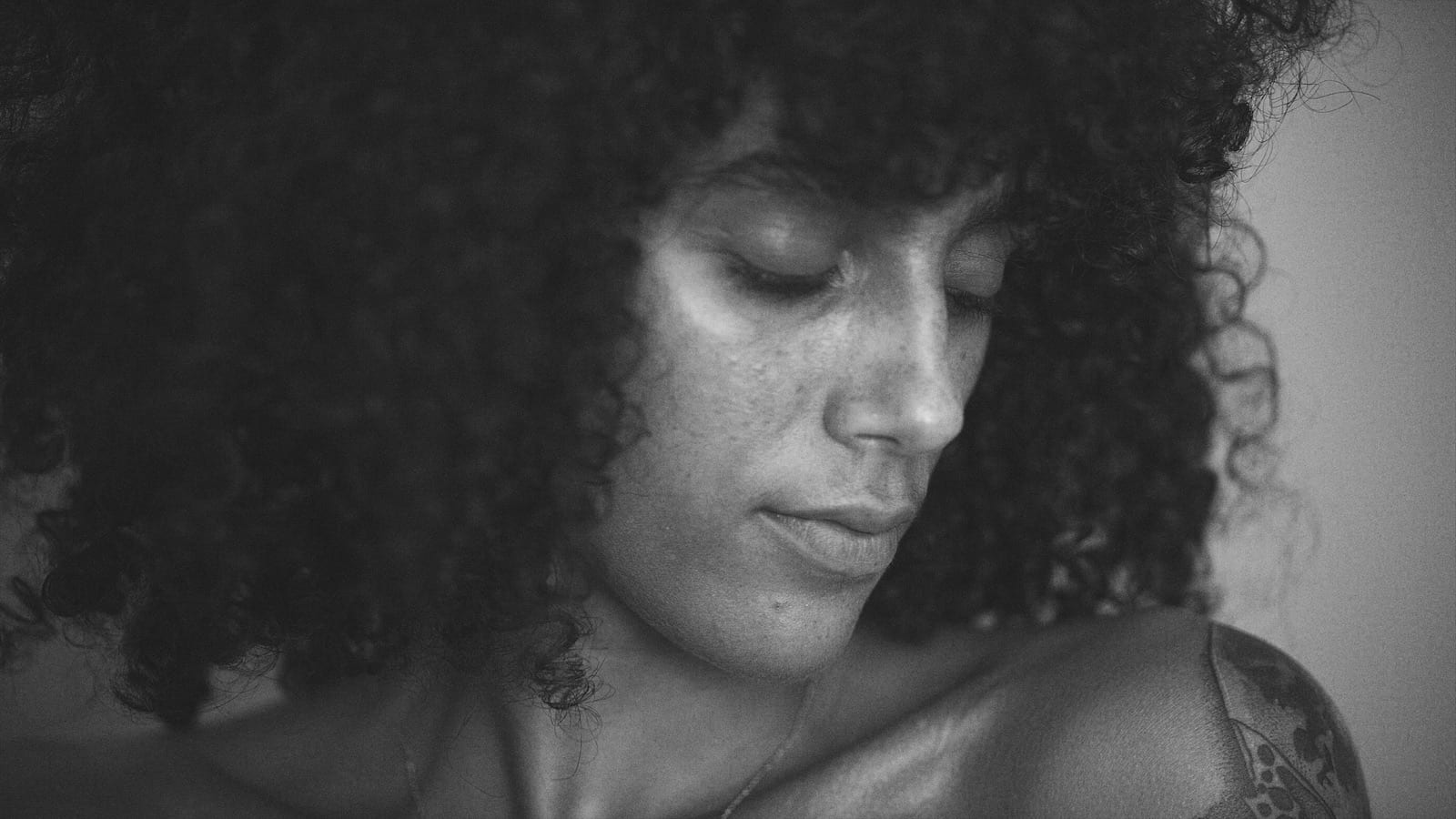








The Perks of Sourcing Talent in South Florida
South Florida is indeed a melting pot. Talented people arrive from all over the country and the world to tell their story through art. Among some of the most talented creatives are South Florida models, like Jasmine.
We have studio offices all around the world, from Fort Lauderdale (our headquarters), to Los Angeles, New York City, Washington, D.C., and London. Our work takes us even further than that. There is no place beyond our limits. Over the course of our careers, we have had the pleasure of creating beautiful media with talented models from all walks of life. But what has always remained consistent is the quality of work we find among models in South Florida.
Once we work with a talented model, whether they live in South Florida, L.A., Columbia or whatever… we include them in our talent pool. We have been building up our database of the best models in the industry to guarantee we nail every project–whether it is for a client or one of our passion projects.
Other Talented Models We Have Worked With
If you like this content and want to see more talented South Florida models in action, then check out our Sabela Artist Profile, Mercedes Guittierez Model Profile, Roya Zangoui Model Profile all on #UNCREATIVE–the best source for original content and valuable industry info!
We Work With Other Artists, Too…
In addition to the beautiful models we works with, we also collaborate with the best rappers and hip hop artists in South Florida, which you can check out on our Freestyle Friday video series. We also relaunched #UNCREATIVE Radio, which features famous guests with a knack for setting trends. On #UNCREATIVE Radio, we talk about the latest industry happenings, news, ambitions, and how to build a successful career (no matter the industry).
If you know Jasmine, give her a shoutout on our social media by clicking the social icons below!
Freestyle Friday Featuring Nylle Thebes
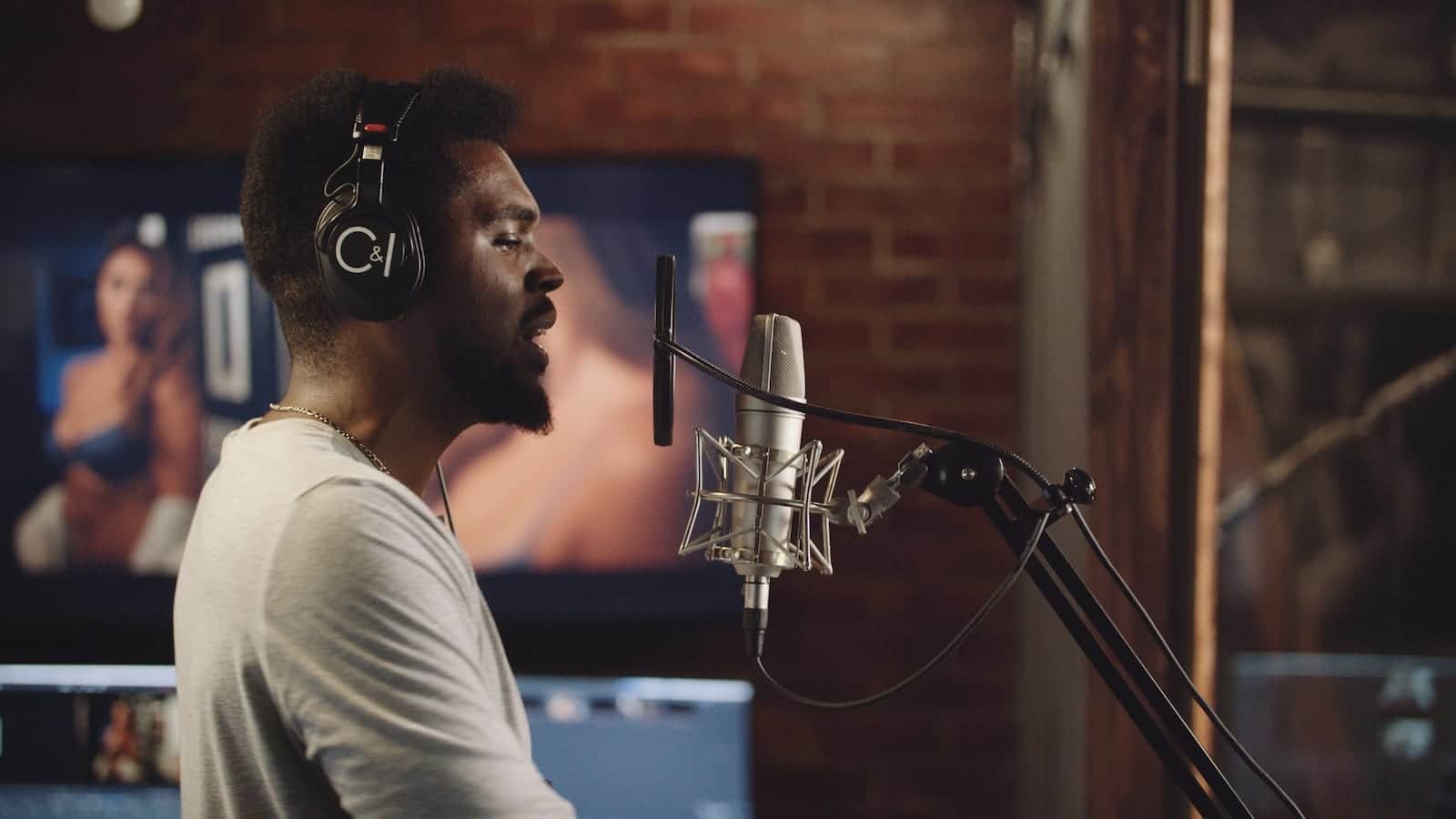
We’re doing our part to put South Florida rap and hip hop scene on the international radar. What have you done lately?
Let’s give it up to Nylle Thebes for this dope freestlye on this week’s episode of Freestyle Friday! Be sure to follow Nylle Thebes on Instagram to help get his name out there!
If you possess lyrical skills to compete with the best then hit us up to be featured on the next Freestyle Friday. If you aren’t a lyrical wordsmith but do appreciate artist profiles and spotlights on local talent, then subscribe to our Youtube Channel. We add fresh, original content weekly and just relaunched the ongoing Dailies series with brand new episodes, which now invite you to experience life at C&I Studios.
Putting the South Florida Rap and Hip Hop scene on the map!
We have studio locations all over the world, from Los Angeles, New York City, Washington, D.C., London and Fort Lauderdale. Our main headquarters is our Fort Lauderdale office so we have a deep bond with artists in the area. Whenever we aren’t working on projects for our clients, we are doing whatever we can to help other artists build up an audience. Freestyle Friday is one of these intitiatives.
So far, we have worked with some of the best South Florida rappers, like Sam Stan. In fact, Sam Stan was recently a guest on #UNCREATIVERadio talking about the release of his new album, Happy Campers. You should definitely check it out!
Freestyle Friday Featuring Marnino Toussaint
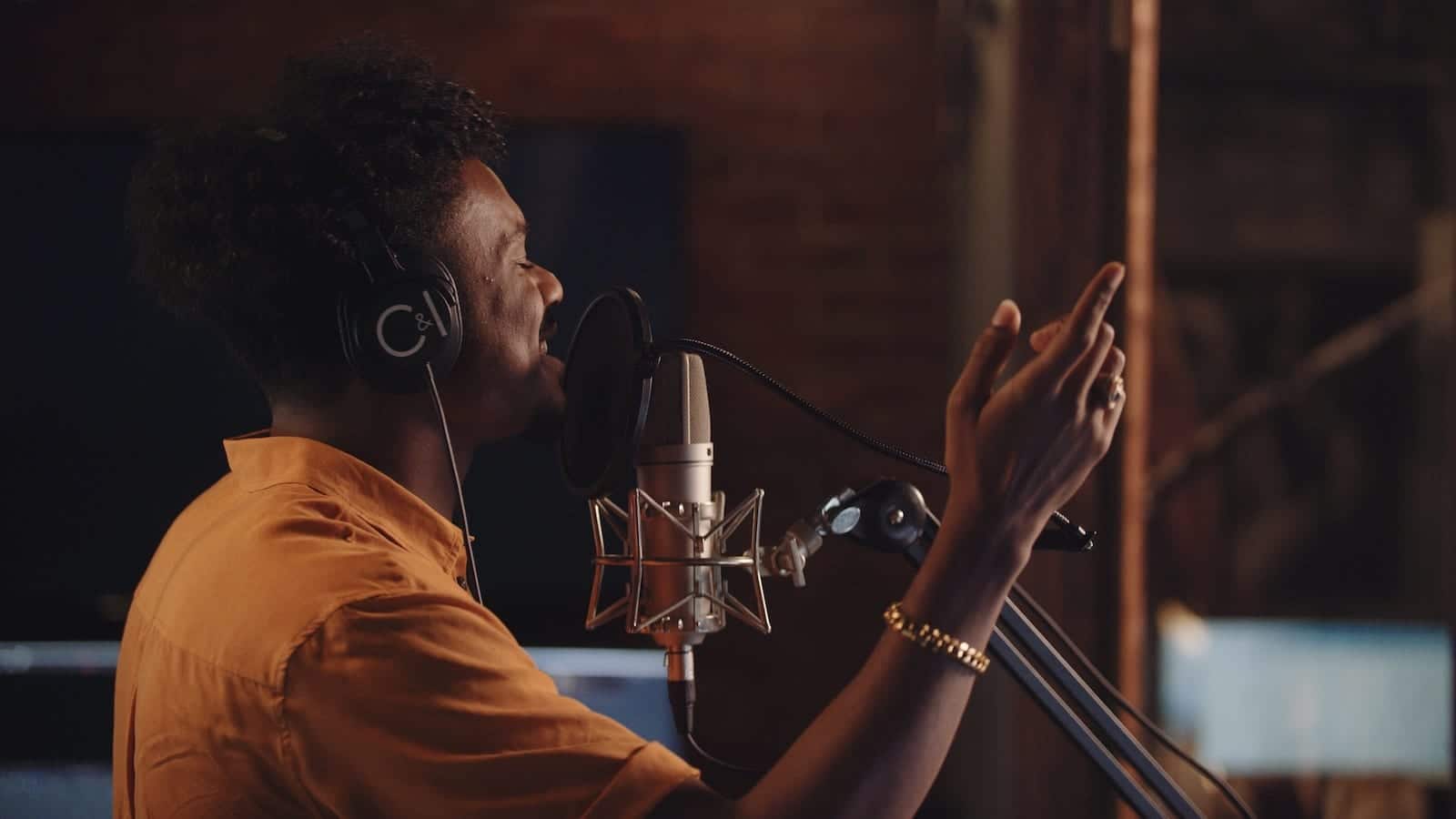
Freestyle Friday features the best of South Florida rap music!
Give Marnino Toussaint a hand for turning up on this week’s episode of Freestyle Friday and be sure to follow him on Instagram.
If you possess lyrical skills of your own, hit us up to be featured on the next Freestyle Friday. If you are not a lyrical wordsmith but do appreciate artist profiles and spotlights illuminating local talent, then subscribe to our Youtube Channel. We add fresh, original content weekly and just relaunched the ongoing Dailies series with brand new episodes, which now invite you to experience life at C&I Studios.
Putting the South Florida rap scene on the map!
We are passionate about helping other artists wherever we can. Since our headquarters is in Fort Lauderdale, we focus a lot of our attention on South Florida artists–musicians, models, poets, and creative entrepreneurs (to name a few). Freestyle Friday is our way of giving South Florida rappers a stage to share their talents and establish South Florida rap music as an elite micro-genre.
We feel it’s important to give artists a place to grow their audience; to market themselves beyond the scope of their network. In fact, that is literally what #UNCREATIVE is all about! If you’ve never checked out our blog, you’re missing out. There is a ton of awesome content to inspire your craft.
You should definitely follow our Youtube Channel, too, if you want to see more original content. Oh, and if you are an artist looking to be featured in an upcoming series, don’t hesitate to reach out!
The Sauce You Never Knew You Needed
We love food. Especially food smothered in hot sauce.
In fact, we’re the kind of people devoted to sauce. Our mantra: “The sauce makes the meal.”
You can imagine our surprise then when we came across the sauce that literally no one (not even our mothers) have ever even heard of. A rare unicorn of sauces — The Original Banana Pepper Sauce by Hyattsville Sauce Company.
When we discovered this hidden gem our tastebuds sang with the angels. This is not an over-exaggeration. We loved The Original Banana Pepper Sauce so much that we created a spec ad campaign for the brand. And the heavenly creators of our new favorite sauce don’t even know we’re doing it.
That’s where you come in. We want to get this in front of Hyattsville Sauce Company. Their sauce is so tasty — so perfectly spicy — that we felt they deserved a little free exposure for giving our tastebuds a much-needed break from mundane snackage.
We love helping small brands that we care about.
Call it love at first dish but, yes, we officially — deeply — care about The Original Banana Pepper Sauce. We were so completely shocked that this had been missing in our life for so long that we created an ad campaign promptly titled “The Only Thing Missing…”
The power of this spec ad campaign is the negative space. It draws the consumer’s eye. They immediately think, “something is missing.” And they are 100% right! The Original Banana Pepper Sauce is missing. So what are you going to do about it? Go buy the friggin’ sauce!
What’s at stake? Well, boring food, that’s what.
You must be thinking, “Wait, no, not all food. That can’t be…”
Smarten up! Yes, all food! Your hotdogs are boring; your chicken is flavorless; your burger is generic; your salad is too green; your chicken wings too mild; your rice bowls too dry; your sandwich… don’t even get us started on your sandwich.
You’ve been leading a dull diet. The Original Banana Pepper Sauce has been missing for too long!
If you’re having a cookout tomorrow for the 4th of July and you’re missing this glorious condiment then forget it. Just cancel the party. Otherwise, open your world up to the sauce you never knew you needed and overnight this bottle of goodness from Amazon pronto!
On behalf of Hyattsville Sauce Company, you’re welcome.
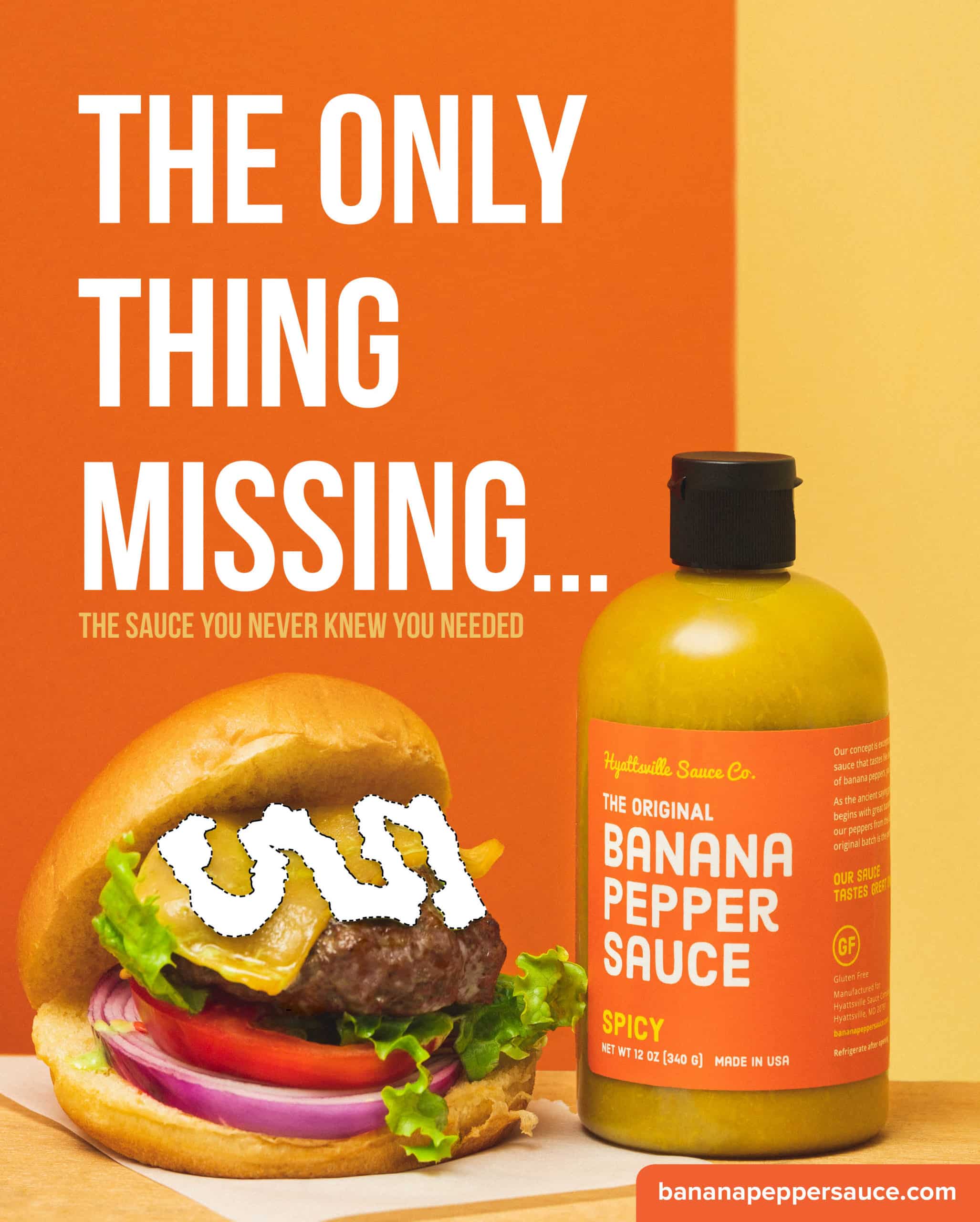
BTS with Sabela on Uncreative Stories
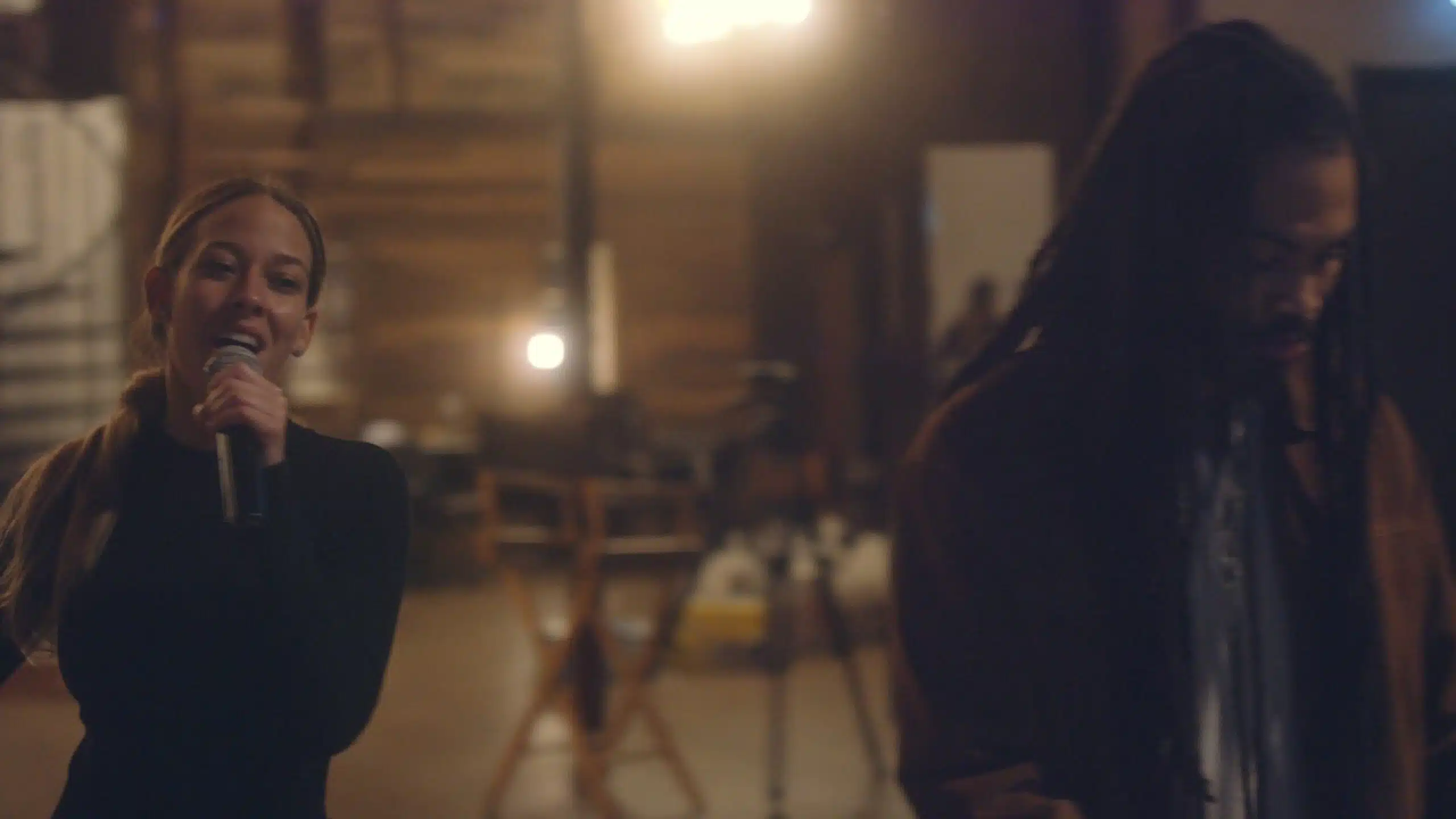
BTS with Sabela
A Live Performance of “Love Jones” at Artwalk
We were the original pioneers of the first Fort Lauderdale artwalk. You know, the one in FATVillage. We established this event because we wanted an outlet where we could show the community what we do when we aren’t working with clients. Every month, we create cool exhibits centered around art, technology, and good friends. Some of the exhibits are designed for the community to participate, like C&I Storm, while others are for their entertainment, like this performance by Sabela.
Most people think we only do client work. But that isn’t the case. Not at all. We are constantly doing our own thing; making cool art to enlightment our generation. There aren’t many agencies creating the type of content we release every week. For instance, we have a series called Dailies, which we release Mon-Fri, that shows exactly what life inside the studio is like. There’s no sugar coating. It’s just us… beautiful, unedited, unscripted Us. If you like this video, you should check it out.
Also, click the button below to see more of Sabela’s work. We created an artist profile that speaks to her many talents.
Live Music Lives Next Door
Looking for live music in Fort Lauderdale?
Time to head Next Door.
Have you been to BREW Urban Cafe? Awesome spot, right! If you’ve been there then you know why the locals call it “The Hidden Gem Of Fort Lauderdale.”
Something you may not know is that BREW Urban Cafe is actually a collaboration with C&I Studios called Next Door at C&I.
During the day, Next Door serves gourmet coffee recipes handcrafted by the baristas at BREW. We also just introduced a brand new food menu created by chef Zachary Mein. Word of advice…try the avocado toast. It’s unreal how good it is. Seriously.
After 5 PM the bar Next Door transitions from handcrafted coffees to artisan cocktails modeled after the most iconic authors in modern literature.
There’s a stark difference between day and night at the bar, Next Door. Daytime is bright and productive. The smell of Wells Coffees fills the air. All sorts of young and established professionals, students, entrepreneurs, moms and dads, and local artist lounge about productively as the craftsmen at C&I buzz around shooting original content for their clients.
Nighttime is seductive and whimsical. For the most part, the same people stick around to hang out after happy hour. The main difference is that the local artists lounging during the day take to the stage to treat us to original live music after 9 PM.

Please welcome to the stage…
A wise man once said, “Without music, life would be a mistake.”
And you know what, we feel the same way, so we created a bar where the most talented local musicians can perform original music live… and where you can listen to it for free.
Next Door at C&I is the only bar in Fort Lauderdale where you can grab a handcrafted coffee in the morning, work throughout the day, stick around for happy hour cocktails from 5 PM – 7 PM then dive headfirst into live music performed by the most talented local artists.
Need weekend plans? Next Door is the best bar in Fort Lauderdale for live music and craft cocktails.
Now, to give you the full story we have to backtrack a bit, so rewind to 2008, when once upon a time, before Next Door was Flagler Village’s neighborhood watering hole, we put together a music festival called For The Love.
For The Love was the biggest celebration of local music in Fort Lauderdale. Even with Riptide Music Festival on the beach today, it still reigns supreme as Fort Lauderdale’s biggest local artist showcase.
Simply put, For The Love was purely for the love of music. This philosophy influenced more and more live musical productions, like Summer Soundtrack in 2014—our second big celebration of local talent.
Entertainers like Forlorn Strangers, KIDS, and BlueBird completely changed Fort Lauderdale’s perspective on local music—who’s creating it, who’s listening to it, what it represents, and, quite frankly, how talented the local scene actually is.
Since For The Love and Summer Soundtrack, we have continued to work with local artists, like rapper Sam Stan in our most recent Summer Series, which featured three months of live music at the bar Next Door.
Since then, we’ve been on a mission to put local music at the forefront of nightlife entertainment in Fort Lauderdale.


That’s what sets Next Door apart from any other bar in Fort Lauderdale.
At Next Door, no two weekends are the same. Our bar is designed to shake things up [drinks included]. It’s the unexpected that makes an experience most memorable, after all, so that’s what you can expect…the unexpected. 😉
If you’re just out looking for a drink then, sure, any bar will do.
But if you’re looking for an experience—one you won’t find anywhere else—Next Door is the place to wet your whistle, bend your ear, get up to dance and see where the night takes you.
Every weekend we host local, underground artists with a knack for original music.
These aren’t cover bands. These guys and gals are the real deal. They’re making moves and their gaining traction. Take Elijah Gee for instance. Not only is he an extremely talented artist, but he’s also completely original. His music, dubbed psychedelic funk is a testament to his authenticity.
Don’t take our word for it. See for yourself…
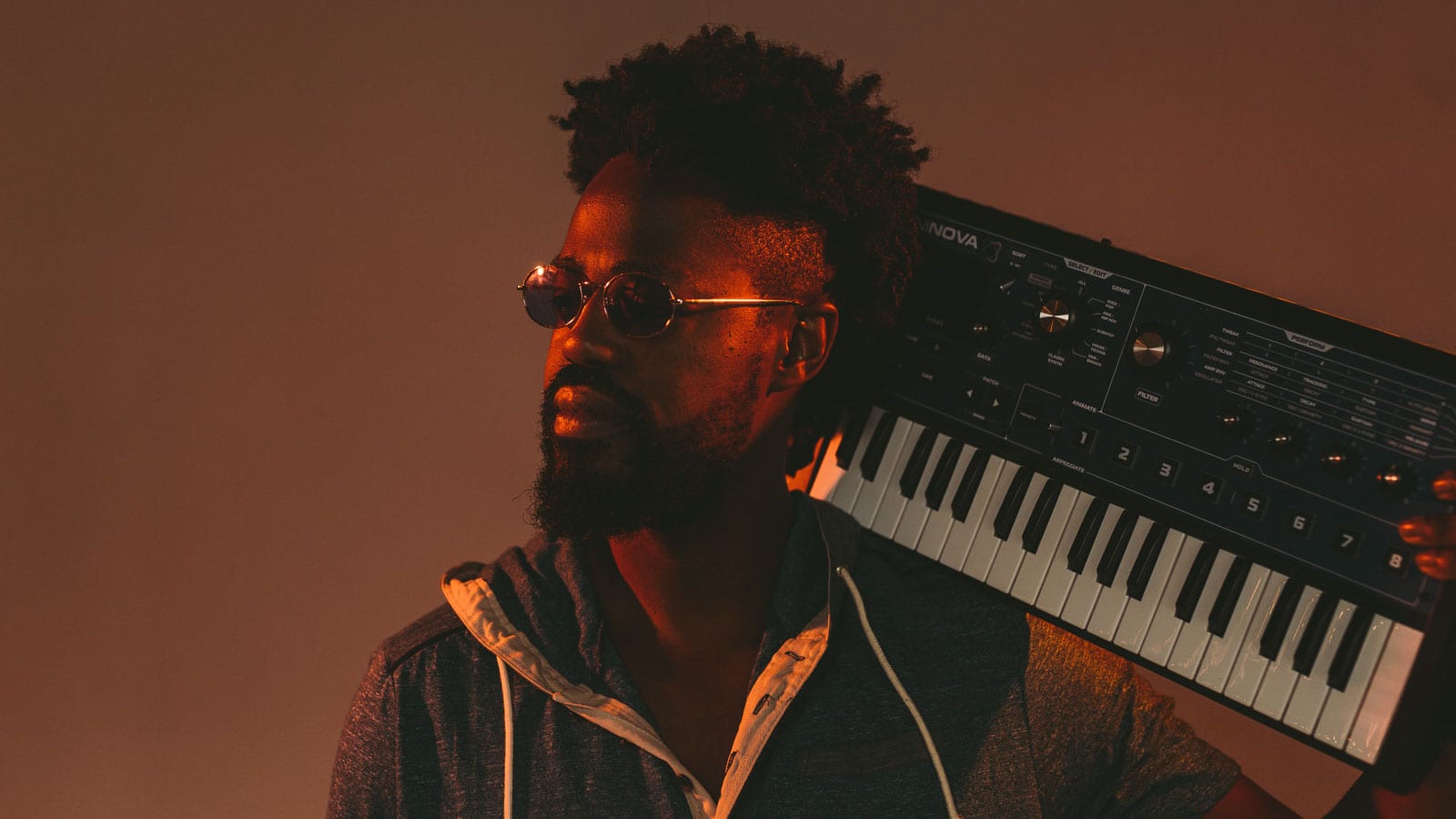
When Next Door isn’t filled with the sounds of psychedelic funk, you can sit back and listen to indie folk, hip-hop, jazz, and many other genre-bending tracks.
Next Door isn’t just about the unexpected music and unlikely company though…
… the scenery can change on any given day too.
On some nights our head bartender Brandon will be at the main bar stirring up craft cocktails to the sounds of WEX! The Master [Playing this Saturday, January 19 at 9 PM].
Check him out here and RSVP to the event on Facebook.
On other nights, it may seem a bit quiet, but that just means you need to do a little exploring.

We have a second full bar with an emphasis on quality bourbon hidden behind a bookshelf door. Don’t be afraid to try your luck and see who’s chilling on the other side.
Next time you’re looking to dance or listen to live music over the weekend, just head Next Door. It’s as easy as that. Every artist who plays Next Door brings something fresh to the experience.
It’s why Next Door is the best bar in Fort Lauderdale for live music.

Dangers of Social Media Censorship
Social media is the latest target of government-sanctioned censorship.
[what's happening all around the world]Do you remember reading George Orwell’s “1984” and Ray Bradbury’s “Fahrenheit 451” back in school, during the days of required summer reading? Hopefully, you do. They are extremely important reflections on freedom and society following the nightmares of World War 2.
To this day they teach us the importance of freedom of expression, speech, and access to information. They show us what could transpire should leaders of society ever violate those [our] essential rights.
We always believed they were lessons on how to ward off dystopia not cause it.
Nations like China, which have long been known for their bans on information and “unpatriotic content” have been using censorship as a tool of control for years.
Take the recent ban on Winnie-the-Poo, which went into effect following the circulation of viral internet memes comparing the fictional (honey-gluttonous) bear to President Xi. If you live in China and are found in possession of contraband like this you could face jail time!
Whereas this new segment of Chinese social media censorship is not shocking in the least, what’s happening elsewhere – and close to home – is seriously alarming.
“Social media is a luxury, not a right.” - President Museveni
Last month in Uganda. President Yoweri Museveni passed an unprecedented bill: a tax on users accessing any of 60 social media apps.
Coupled with the social media tax, which was passed without public participation and requires internet users pay 200 Ugandan shillings ($0.05) to access certain apps, is a 1% tax on mobile monetary transactions. The only way Ugandans can pay the social media tax is through an online mobile monetary transaction.

We know it does not sound like a lot of money, but all principles aside, the tax will undoubtedly make it more difficult for low-income and unemployed people to stay connected with friends and family, as well as access important information online.
Already the price for a 1GB mobile broadband plan is 15% of average monthly incomes in Uganda, according to figures from Alliance of Affordable Internet. World Bank figures show that just 22% of the country is online.
With these additional taxes, it is likely that percentage will shrink even further.
The rationale behind the new bill is to discourage what President Museveni deems “gossip.”
This, in effect, labels all social media commentary he disagrees with as opinionated, misinformed rhetoric that is subject to suppression.
At a time when immediate, news-driven platforms like Twitter are essential outlets for civilian coverage on political protests and war, this poses an even greater threat to Uganda’s social liberties.
What’s worse, Uganda isn’t alone.
The Tanzania government recently imposed a $930 annual tax on bloggers who want to publish online.
The Egyptian government passed a law allowing government officials to shut down any social media account with five thousand or more followers, who they believe is spreading false information.
Governments around the world are starting to flirt with this new age of social media censorship, and it’s opening doors to some very scary realities.
If this doesn’t worry you, maybe something a little closer to home will.
[Government sanctioned censorship in America]
70% of Americans get their news from two sources: Google and Facebook.
On July 31, Politico reported that Facebook was shutting down inauthentic accounts “sought to inflame social and political tension in the United States, and said their activity was similar — in some cases — to the Russian accounts during the 2016 election.”
Bye, Bye Infowars.
Most of the accounts removed by Facebook (and other social platforms) were outlets of misinformation, instigating a dialogue that sought to undermine our nation’s political and social values. What they were saying still causes harm and promotes hate with the specific intent to do so.
Take Alex Jone’s Infowars, for instance. His media channels repeatedly violated policies against hate speech and glorifying violence. He was warned multiple times by social platforms (YouTube, Facebook, Twitter, and Spotify ) to end all hate speech that violated their policies, and he refused.
On August 6, Facebook announced they had permanently removed four pages associated with Alex Jone’s media brand, saying, “We believe in giving people a voice, but we also want everyone using Facebook to feel safe. It’s why we have community standards and remove anything that violates them, including hate speech that attacks or dehumanizes others.”
In addition to the removal of Infowars, however, were bans on other accounts — some without any explanation, like the left-leaning Latin American news network Telesur’s English speaking Facebook page, which had no content violations.
You see, Facebook targeted and eliminated these “divisive” content facilitators with the help of Atlantic Council, on whose board you’ll find names like Henry Kissinger, former CIA chief Michael Hayden, former acting CIA head Michael Morell and former Bush-era homeland security chief Michael Chertoff.
Basically, Zuckerberg gave some government officials control over airing and eliminating nationwide media they considered politically and socially hostile to the US.
But what about our First Amendment rights?
The First Amendment only addresses the government’s power to eliminate or suppress forms of expression that breach the peace or promote violence. It says nothing about private companies like Facebook, Twitter, Instagram, etc. changing their privacy policies to refuse a user from saying something derogatory or misinformed on their network.
“If a corporation chooses to eliminate an account on their own accord then it is not violating the First Amendment rights laid out by the constitution of the United States. If the government does it then its censorship.”
Wait a darn minute…
Do these rules still apply even when members of the United States government are involved in the decision-making process of which accounts a private corporation deletes?

A stunning poll conducted by Ipsos and reported Tuesday, August 7, by the Daily Beast, suggests that a plurality of Republicans would have no problem trashing the First Amendment altogether.
We repeat, 43% of Republicans just said Trump “should have the authority to close news outlets engaged in bad behavior.” Of that 43%, 48% believe news is the enemy of the people.
Take a second to think about that…truly think about it.
What are all the “news outlets” you read and watch on a daily basis? . . . Twitter (we mentioned), Facebook, Worpress, Reddit, NPR, even paperback books can be considered a news source. . . you get where we’re going with this.
There is no distinction between a traditional news outlet and a social information platform anymore. No widely accepted definition of “bad behavior” on social media. No separation of opinionated rhetoric and fact-based news coverage. And no identifier of who is in charge of mediating all of this information: the government, the president, the corporations, or the people.
When the lines are blurred between corporate and government interference, freedom of expression can be taken advantage of far too easily, as we are seeing happening in Uganda, Egypt, Tanzania and here at home.
You would never think censorship portrayed in “1984” could actually happen. Not in today’s free society, at least. But now that men and women in power are flirting with social media censorship it is hard not to fear the worst.
Today, everything is backward…
“War is peace. Freedom is slavery. Ignorance is Strength.”
– George Orwell, 1984.
NOTE
While there are some governments limiting our means of expression, there are others reinstating certain freedoms.
On August 10, Germany lifted their ban on censoring swastikas in video games like Wolfenstein II: The New Colossus,” Call of Duty: Black Ops,” and “South Park: The Stick of Truth.”
The Entertainment Software Self-Regulation Body (USK) said Thursday that games including banned symbols could now be given a rating in Germany if the use of the symbols is considered “socially adequate.”
That means the symbols must serve an artistic or scientific purpose or be used to represent particular events in history.
Artist Profile | Fantastic Negrito
All of the articles you will read about him cite his troubled teen-life, numerous setbacks, and near death car crash, yet he describes his journey as “The American Dream.”
Lets speed through his timeline really quick:
Raised in a strict Muslim family with 14 siblings, then moved to gang-controlled Oakland where a world built on rich music culture, disobedience, and drug dealing was quickly emerging. He left home at 12 and never came back.
Fast forward two years, Dphrepaulezz’s father dies. He is shuttled between foster homes. He was then entrenched in a life of small-time delinquency.
At 18 he discovered that Prince was a self-taught musician and so he began teaching himself how to play.
He snuck into Berkeley music classes to get a formal education — and in 1993 found himself being signed to Interscope for a $1m contract by Jimmy Lovine himself.
If you thought the rest was history, you’d be wrong.
Going by the name of Xavier, his debut album The X Factor was released in ‘96. Neither he nor Interscope was happy with the work and so his next few years were spent in musical purgatory — unable to leave his label but unable to excel under them.
A near-fatal car crash left him in a coma for three weeks, broke all four limbs and maimed his hand, ultimately releasing him from his contract… but also his ability to play the guitar.
Going back to the hustle was only natural. Dphrepaulezz transformed his warehouse home into an illegal nightclub that soon attracted a variety of celebrities due to its exclusive vices. He split his time between managing Club Bingo and performing music in a number of Afropunk/negro rock projects.
He moved back to Oakland and began growing medical marijuana to support his newborn child.
To soothe his son one evening, he picked up a guitar for the first time in 5 years. From there he forced his twisted hands to play again. Freshly inspired, he began churning out blues tunes with black roots–Fantastic Negrito was born.
Fantastic Negrito is firmly rooted in both black experience and black music, including blues, R&B and a variety of roots music.
He created this new persona at 45, and landed a spot on NPR’s Tiny Desk Series a year later, exhibiting that success can come at any point life.
“I thought my story was over. But that was when I realized I finally had a story to tell — and it seems to remind people of their own story,” he said in an interview with The Guardian.
It doesn’t seem right to talk about Fantastic Negrito’s music without personal input. The music is so imbued with Dphrepaulezz’s soul and experiences that no thoughtful conversation can be derived without having him in the room, breaking it all down for you. Even the title of his debut album, The Last Days of Oakland, stands as a testament to that.
With themes such as racial inequality, human rights, police brutality, classism, and poverty permeating each song, it is very clear that there’s a lot more going on here (he even threw in a twist on the Lead Belly classic “In the Pines”). Roots music has been edging into the mainstream over the last few years. The Black Keys, Alabama Shakes, Mumford & Sons, and Jack White are all examples of this.
Fantastic Negrito stands apart from all of them.
The authenticity of Dphrepaulezz’s trials and triumphs are painfully relatable. He’s a man of many tastes and talents and this project is a true representation of that.
How to Reach a Larger Audience with Facebook Live Video Cross Posting
Creating engaging content is every marketer’s goal. Creating engaging content that doesn’t convert, however, is a big waste of time and valuable assets.
The big reason content falls short on conversions? It fails to reach an audience.
Facebook live video is one of the newest tools for social media marketers.
It is designed to help marketers publish engaging content that caters to, and connects with, more interactive, thoughtful audiences.
Part of the audience’s favorability for Facebook Live Streaming is the chance to interact with their favorite brands in a raw, unfiltered, unscripted setting. Audiences are responding to this authenticity with regular, genuine engagement, which marketers are converting.
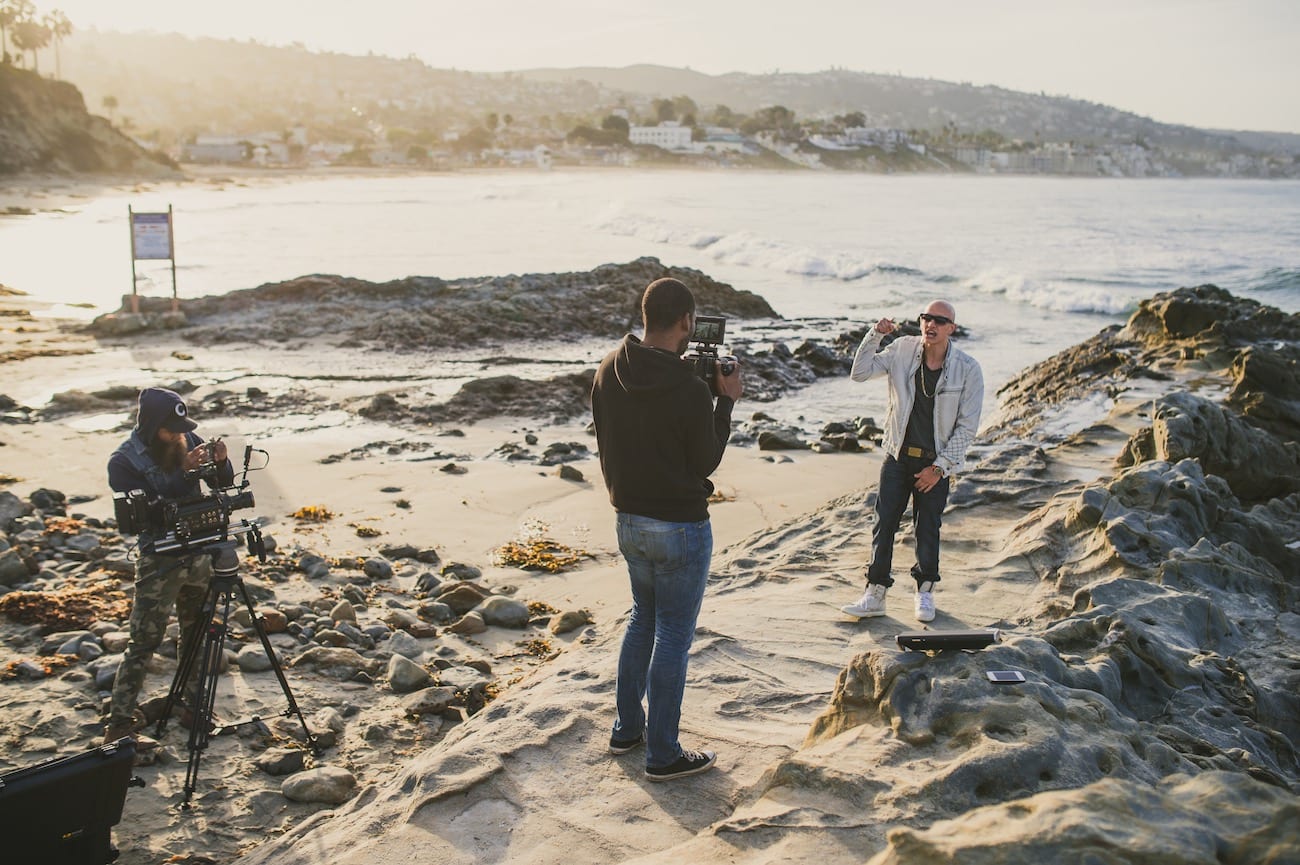
When an audience is a part of the conversation in real time they are more emotionally invested in the subject matter. This personal connection to messaging is highly effective. It levels the playing field and in a way humanizes brand messaging by delivering it casually.
These casual business-consumer interactions open consumers up to a whole new spectrum of messaging.
The setting is the most powerful function here.
These conversations happen in a medium that is significantly more relaxed than threads where ads are strategically inserted. This tends to lower the consumers’ apprehensions — their doubt regarding the corporate persona — which positions them to engage in real-time, click to a landing page, purchase online, or subscribe to an emailing list.



For example:
Consider a business with multiple brand extensions. There is the primary identity — the main chunk of what the business produces. This is the industry persona.
Then there is the non-profit brand extension. This motivates the primary identity because the success of the primary directly affects the effectiveness of this extension. This is the philanthropic persona.
There is the culturally centered spin-off of the primary brand. This could be a community forum, a physical place (like a bar or rental space), or a series of regular programming/events. This is the cultural persona.
Finally, there is the merchandising shop. This is a physical space within the business and also an online shop. This is the consumer-centric persona — a way for your audience to attach their identity to your brand via merchandise.
Each brand extension shares certain audiences. Each brand is also comprised of specific subsets of loyal followers that are not as involved in one extension as they may be with another.
One audience subgroup may visit the cultural persona for updates on local events more than they would the philanthropic persona, which has stronger messaging. Furthermore, each audience member may not even follow Facebook pages for each brand extension.
This is a local event hosted by the non-profit, which is associated with, and established by, the primary brand. The cultural brand persona is an information resource for the community, so the “local event” application suites this brand’s guidelines as well. Take this even further and incorporate the merchandising persona into the live broadcast, because of it’s physical presence and connection to the fundraising application.
The messaging is consistent for all brand extensions. They share elements of branding, tone of voice and intent, which allows marketers to broadcast one message on every page. A single live video now has the potential of reaching four target demographics.
That’s not all!
Marketers are in essence introducing and connecting their audience subgroups with one another by connecting multiple brand extensions with one segment of messaging. This ultimately strengthens the overall company culture.
Marketers (in this example) quantify their reach exponentially because Facebook live videos typically experience 3x more engagement than regular video content.

This is an awesome way for marketers to strengthen a brand’s industry authority. Not only does this attract a new audience, but it attracts an audience that is already loyal to a brand that shares similar values.
Say an architecture firm worked in conjunction with a landscape architecture firm on a large-scale design project. Their industries overlap but don’t conflict. Their messaging follows similar guidelines, as do their core values. By collaborating on a live video broadcast they can consolidate loyal viewers and establish greater authority in their industries without compromising each others status.
That’s a big win.
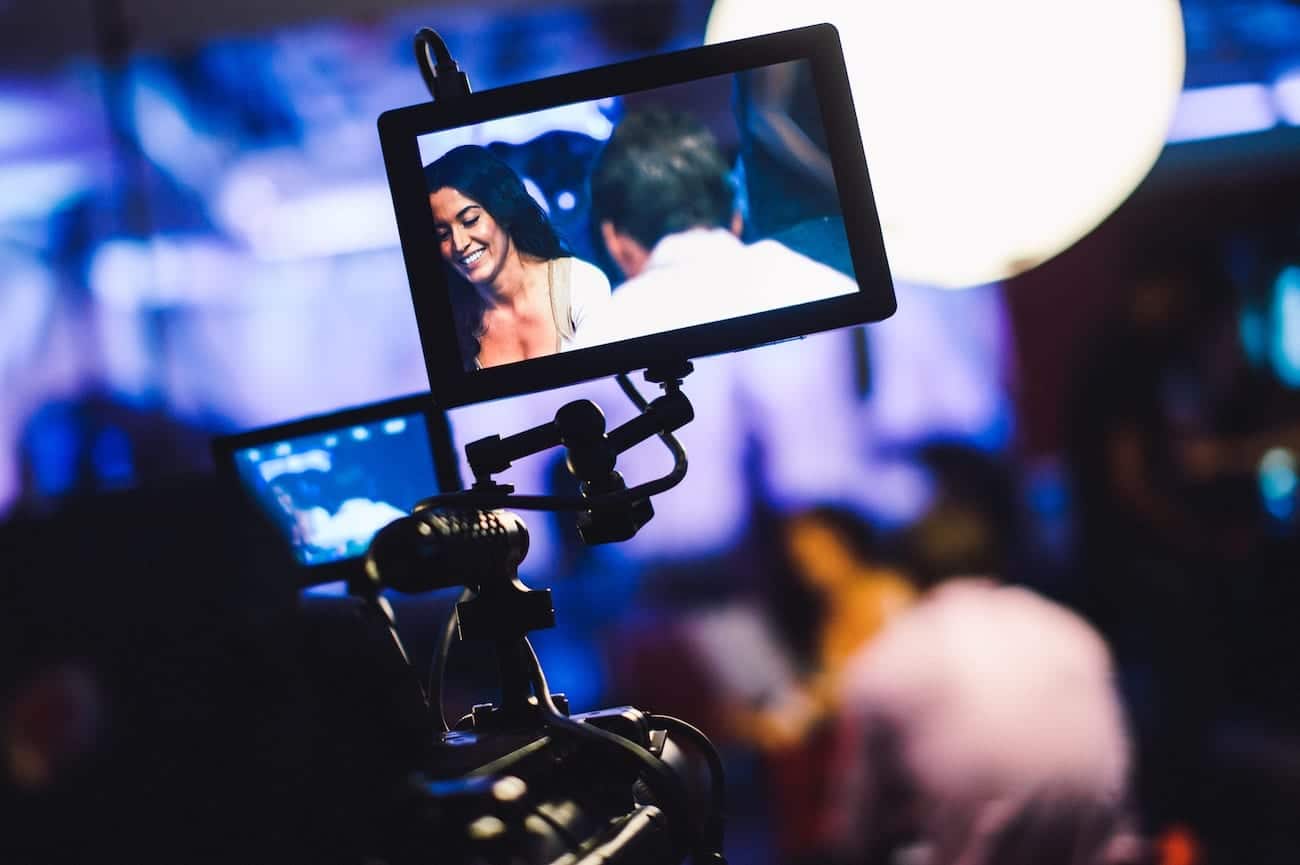
Here are the tips to get started:
- Live content is good if, and only if, it is seen by consumers, so your broadcasting schedule should adhere to your targeted demographic’s schedule. The exception: steaming an event or something you cannot change the time.
- Promote before your broadcast — on all platforms you plan on airing the live video.
- Plan out your live content. You don’t need a script, but you do need an outline to ensure you remain on topic
- Make formatting decisions before filming: I.e., horizontal or vertical (We recommend horizontal videos since they are easier to view on mobile devices).
- Offer context regularly — if people start watching in the middle you want to make sure to reference who you are and what you’re doing or discussing so new viewers aren’t lost.
- Always be responsive — you have live comments and reactions — use them.
- Be likable — do not sell. Engage.
- Give yourself a shoutout and thank people for watching.
- Analyze your results — Facebook has several metrics that you can measure with live videos.
C&I Storm | Inside the Experience

If you can’t invite your peers to appreciate something you made — something you believe is beautiful — then you’re missing out on an invaluable connection.
That’s one of the reasons we helped establish Artwalk 10 years ago.
For a short time, though, it felt like we were losing out. Artwalk seemed detached. It was lacking a certain emotion — a degree of thoughtfulness that has always been trademark to what we do at C&I.
Fashion shows, live hair cutting performances…they’re good entertainment, but they just aren’t exactly who we are.




If you attended C&I Storm, you may have noticed that the centerpiece was a whirlwind of handwritten notes from our personal journals. Combine that fidelity with the openness of drawing and writing in front of a crowd…well, by the end of the night we had all shed a few layers of apprehension.
The coolest part of the night, though, was that our vulnerability was contagious. While we were changing roles, you all took to the drawing board to share your crafts, your thoughts, and your reflection of the night as it was still forming. It was awesome.
In one night, we had made up for so much lost time. It felt really good. Familiar even. We could tell you all enjoyed it too. 🙂

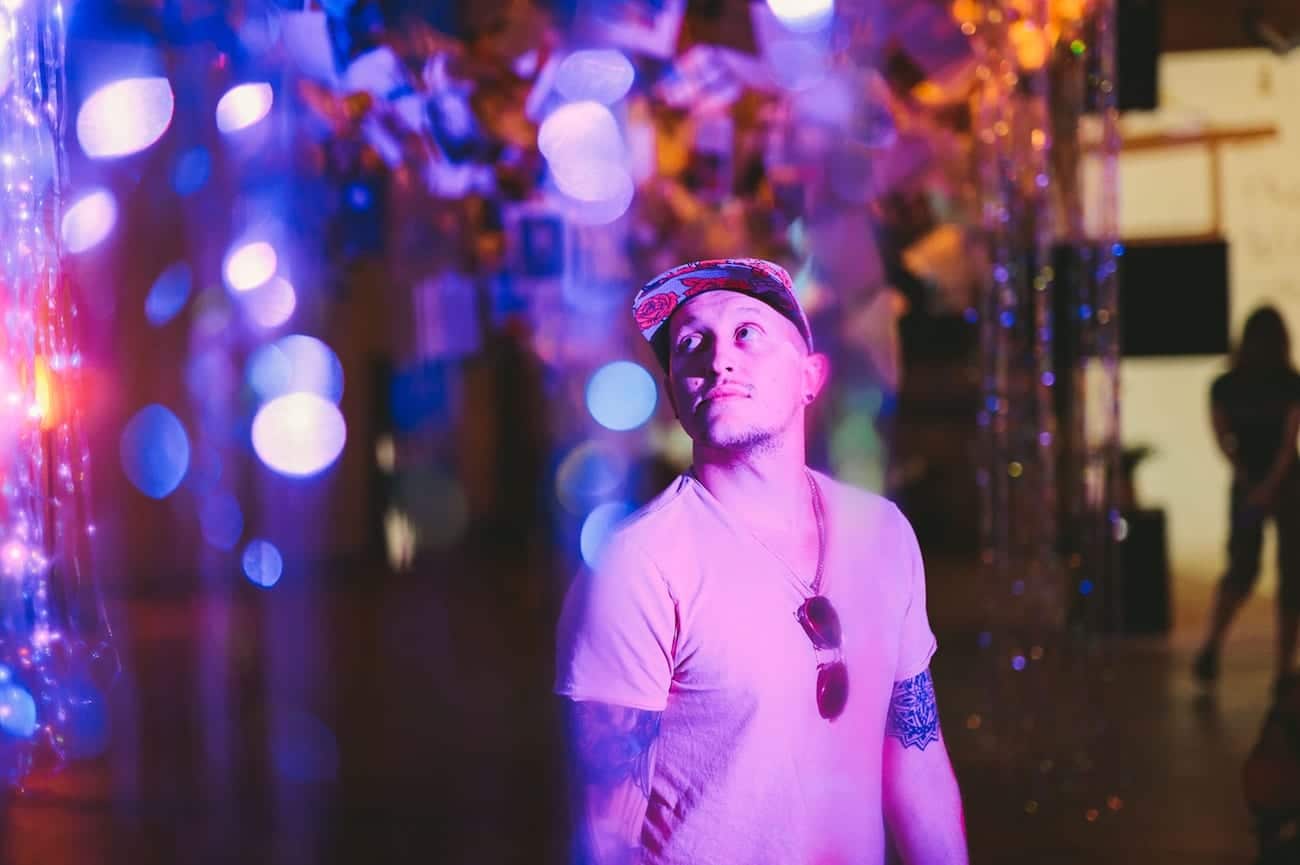

C&I Storm was just the beginning.
We had to take Artwalk back by storm to continue along this path of making good art and sharing it too.
So, we’ll see you at the next FATVillage Artwalk on July 28. This month Self-Projection will test your imagination and challenge the depth of your interpretation with living, breathing optical illusions created live.
Facebook Story Ads | Social Media Marketing
Why you need Facebook Story Ads in your social media marketing campaign.
[how to add this trend to your strengths]
Facebook is one of the biggest assets in a marketer’s toolbox. If you aren’t using the platform the right way, you’re missing out on their huge interactive market.
Facebook’s social media marketing revolves around storytelling. This is how businesses and brands connect with consumers on a personal level.
Business-consumer relationships created through Facebook are more emotionally charged. These are bonds established by mutual trust and genuine interest. The Facebook algorithm encourages (and, in a way, requires) businesses and consumers to interact with each other in thoughtful ways in order to create this type of relationship.
Facebook is encouraging business-consumer interactions that revolve around authentic, story-driven content.
That is where facebook story ads are making a huge impact on the market.
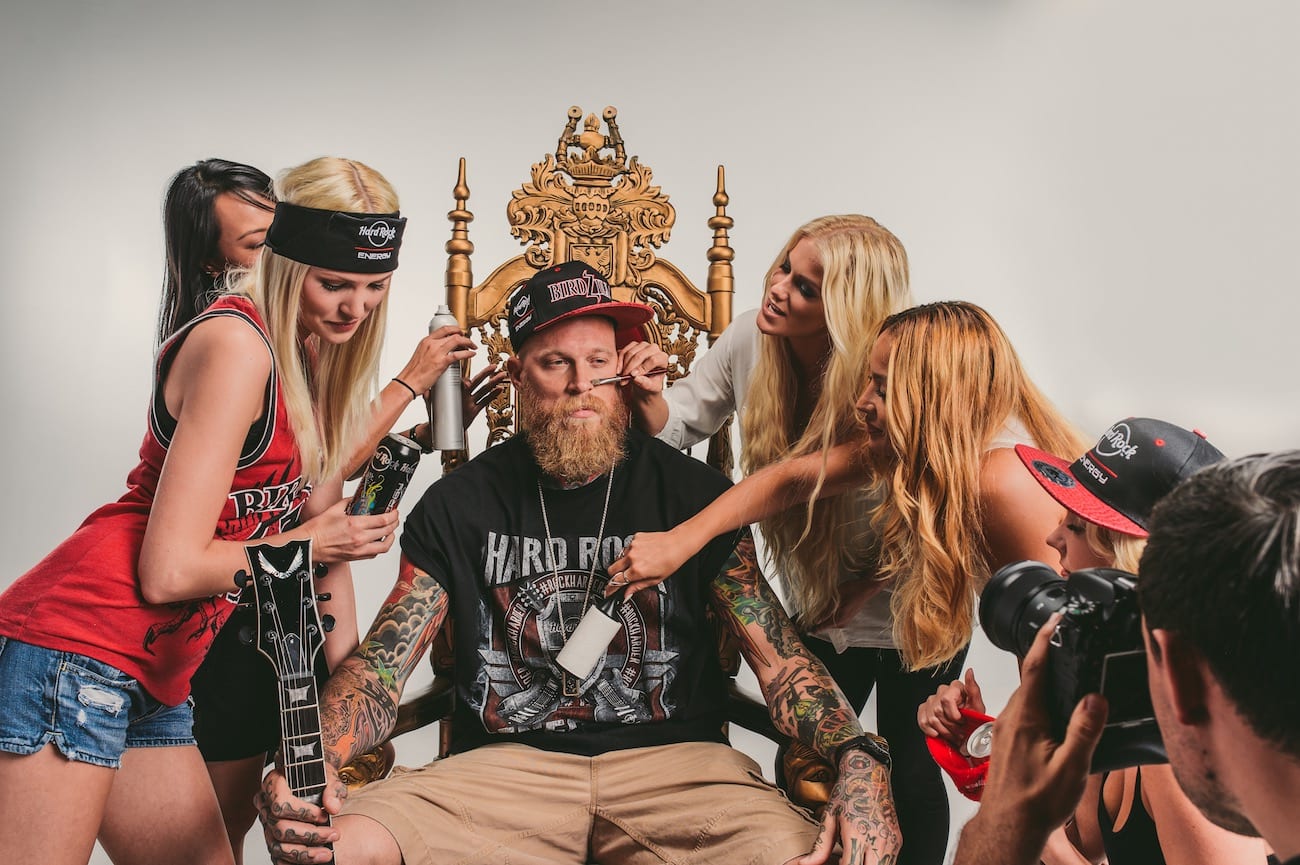


They are quickly gaining popularity and already reach over 150 million users each day.
Their immediate popularity is partly due to the fact that Facebook Story Ads are more artistically focused than standard paid ads. The platform calls for more thoughtful content and when marketers deliver on that their ads become more relevant, reach more people, and show up in Facebook feeds more frequently.
This focus on storytelling marketing is sure to gain more attraction over the years. Already, Instagram announced their newest concept — a video sharing platform comparable to youtube. This will give marketers access to even more potential consumers — roughly 800 million — and will also open the floodgates for a whole new genre of brand marketing via video storytelling.

Research shows that design-forward content is the way to go.
By capturing the consumer’s attention with artistic content, marketers open consumers up to their messaging. By holding a consumer’s attention long enough, marketers convince those viewers to take action — whether that is a click through to a landing page, a blog, an email subscription or an online purchase is a win by digital marketing standards.
This idea of design-driven content is further reinforced by the fact that 85% of videos are watched without sound. This, therefore, calls for content with text. Copywriting that sells combined with designs that garner attention is valuable messaging for any brand… no matter how established.


Don’t use flashy content.
You’re going shopping for your first car. You’ve been saving for years. There are two cars in your price range in the car lot. They are the same make and model but have totally different cosmetics. The first car is a deep blue with polished rims and black tint; the second is neon green with red and orange flames painted down the side, and every available inch covered in shiny chrome.
Which car are you most likely to buy?
Just as an overly flashy car is a turn-off for a new car shopper, flashy video content is a turn-off for someone casually viewing cool videos. Never underestimate the consumer’s control, especially considering the new Facebook algorithm. Annoy a consumer and they will make sure you no longer show up in their media stream. Do that and you lose out on a lot of business.
Storytelling is genuine by nature.
Don’t go corporate.
Good storytelling works. Bad storytelling damages. The better your story the more people engage, share and come back for more. If you can drive users on to the next image, the next web page, the next source of branded media then you are using Facebook Ads successfully.
Storytelling is our bread and butter.

There are many reasons we are a full-service marketing agency, and one of those is because we refuse to limit our storytelling abilities. The more options we have at our disposal — the more creative tools we have to work with — the better the story.
Specifically, regarding Facebook Story Ads, we’ve noticed that shorter video ads and attention-grabbing GIFs are most effective. They’re simple, quick and get the messaging out fast enough to keep pace with the latest trends and conversations.
We know how to stay relevant. Do you?
Original Photography vs. Stock Imagery

We shoot original photography because we take pride in our work
Using stock photography for a branding campaign is like using cliff notes. They’re cheap. They’re boring. And they devalue the integrity of the content.
Sure they sum up the message, but the fact that a marketing agency would even want to “sum up” their client’s brand is odd enough. They’re easy substitutes for good work. And easy is bad.
We strongly discourage taking such a shallow approach. Aside from the fact that stock photography is unoriginal… it’s boring. Way too boring for us to have any part in, at least. Stock imagery is just a generic approach to an idea or project.
Creativity will always have a place at C&I Studios
Like Leo Burnet said, “Curiosity about life in all its aspects, I think, is still the secret of great creative people.”
Couldn’t have said it any better. It’s true, too. Why would we cut our experiences short by eliminating creative vision?
Short answer: we don’t.
Take our recent branding campaign for Visbiome Vet – High Potency Pet Probiotics. This is a really unique frontier, and Visbiome is essentially pioneering this new industry. They’re disrupting standards on pet health in a really positive way.
We felt their branding campaign should do the same. So, we shot original photography to create a unique brand persona for their new line of pet probiotics. Our approach was designed to distance Visbiome Vet from the competitors, just as their product has.
Why?
In certain industries, it is common practice to use stock imagery. It’s an immediate placeholder, and saves a lot of time, money and resources. But really, it’s a substitute for hard work, and original ideas.
It’s an easy, lazy way of branding a product. We repeat, it’s boring!
The medical industry is one of the more obvious examples of this approach. The pet industry is also devalued by rampant stock imagery.
Visbiome Vet — High Potency Pet Probiotics is a combination of the two industries: pets and medicine.
We had our work cut out for us.

The Challenge
We needed to create original imagery that would be the face of this medical food for quite some time. When your product is lined up with 20 others on a store shelf this is really important.
Our challenge was positioning Visbiome Vet as the more advanced, effective solution to pet health. We needed to position their brand above the competitors in a way that was still approachable to consumers, while highlighting their primary brand standards.
So we did some hunting until we found the right pup. Let’s call him Rex.
Rex was unique. From the pattern of his coat, to his personality, to the color of his eyes. He was also very smart so we were able to take a lot of really unique photos for their new campaign. There was no way the competition could replicate the same feels.
And as it would turn out, they didn’t.
When Visbiome Vet showcased their new brand of pet probiotics at a trade fair that was attended by basically all of their competitors, they were the ONLY business with original imagery.
Every other competitor used stock photography (some even used the same stock photo!). It was a big win for their brand. And pretty funny for our team of professional photographers to witness.

The Results
The trade fair was a big success for Visbiome Vet.
Their original branding showed consumers that their product was, well, unique.
More importantly, it proved they truly cared about their business, and wanted to offer the consumer an experience that the competition couldn’t match.
In today’s age of rapid, cluttered content it is so important to invest in quality work. Your brand should never compromise on stock imagery because there is no way it will properly capture your brand’s intentions.
Check out our portfolio to see how we can elevate your brand with some cool, original photography.


What is C&I?
What is C&I?
So what is C&I?
C&I is a combination of fresh, incredible ideas, the perfect team—who fears no project or deadline, and a little bit of magic.
It is tough to describe what C&I means to us, because it’s more than a company. Being able to help business owners and corporations accomplish a marketing goal through storytelling is an incredible feeling, and we are addicted to seeing these campaigns work.
What we do is hard to replicate. You can’t hire an internal marketing team and achieve the same goal. We have the outside view, the outside opinion, the fresh perspective. We are thinking not only about our clients, but how our clients can be successful every single day. What we do at C&I is more than just a job to us. We were made to create, and we bring that passion to every single project that we work on. We package our creativity with compelling research and statistics to accomplish any goal.
The secret sauce of our company is its people. A team of selfless workaholics that aren’t satisfied with just being good. When we step up to the plate with every client, we never want a base hit, we want to throw our bat on the ground and watch the ball fly into the stands. We aren’t the middlemen, either. We are the men, we are the women, and we know how to take an idea straight out of thin air and technically execute it right in front of you.
We aren’t creatives, we are professionals. Creatives need to be inspired to take action. Professionals are so good, that they need to no inspiration to act.
These words have only tried to scratch the surface of what C&I is. Watch this video, and you’ll see what we mean.
